Barry Phipps, in an article reprinted in Haworthiad 20:61, writes that “the term species is a concept”. Donald Levins in The Origin, Expansion and Demise of Plant Species devotes a chapter to “The premise and species concepts”. There is no dearth of literature and the entire subject is indeed, as Levins suggests, a subject of “heated debate”. Levins also quotes from the literature, “… the idea of good species … an artifact of the procedures of taxonomy”, and “… our system of names appears to achieve a reality which it does not possess”. It is comforting for me to read his premise …”that the species is a dynamic entity that undergoes alterations in its gene pool, variation pattern and geographical distribution”, and his advice…”thus it is best to take a pluralistic approach to species’ passages in time, combining genetic and ecological perspectives”.
I myself am not sure if these and many similar statements really mean all that much. The range of living things is surely a reality of the human capacity to observe and rationalize to the limits of their experience and competence. They are phenomena spread in space and changing with time along with the rest of creation. We give them names in order to catalogue, describe and communicate about them. Those people, who make a point of collecting and studying study living objects, give those names and theorise and generalize about their relationships. We do not conceptualise these living things. They obviously are “kinds” and do surely have an objective reality. We may perhaps conceptualise a taxonomic system in which they are studied and classified according to some model or other. This has been an ongoing process since before Linnaeus and it is unfortunate that many writers seem to have become taxonomists with only the International Code of Nomenclature as reference. The result is a plethora of meaningless subjective names or names which can satisfy only the writer and readers who know as much or less. If we do take a pluralistic approach, recognise all the pitfalls, and base our observations on extensive observation, then surely the classification product will be satisfying to ourselves and have some value for others. This is what I have tried to achieve.
In seeking some kind of closure to my own long history as a pseudo-taxonomist and botanist writing about Haworthia, I am going to write about my observations on a number of populations which I attribute to the single species Haworthia nortieri. The newest trend seems to be to term these discrete, isolated, scattered populations as “metapopulations” and theorise about the interchange of genetic material among them and the effect this has on real differences; ultimately reflecting on evolutionary passage. Whatever is attempted or intended, an accurate account of one’s personal experience must surely be of value.
H. nortieri was first noted by Dr. Nortier of Clanwilliam and then collected at the old Doorn River Bridge 45km northwest of Clanwilliam in 1937 and described by G.G. Smith in 1946. Smith also collected a similar plant on the Pakhuis Pass also in 1937, and described this as the var. montana only in 1946. In 1948 he again collected a similar element on the Gifberg Mountain near VanRhynsdorp, which he described in 1950 as var. gifbergensis. In his collecting record, Smith records, also in 1948, the collection of a plant from Doornbosch northeast of Clanwilliam, and described that as H. globosiflora. In the description the collection is attributed to J. Thudichum.
History Thus in 1969 when I started the physical process of arranging the Compton Herbarium records, these four herbarium specimens virtually constituted the total record of the species. My views of the species and its taxonomic record in my 1982 synopsis and 1999 revision were as follows:-
“25. Haworthia nortieri Smith, JS.Afr.Bot. 12:13(1946). Bayer :141(1976). Bayer :49(1982). Scott :88(1985). Type: Cape, Vanrhynsdorp, Smith 1676a (NBG): H. nortieri var. montana idem. 16:6(1950). Type: Cape, Clanwilliam, Smith 1678 (NBG): H. nortieri var. gifbergensis idem. 16:7(1950). Type: Cape, Vanrhynsdorp, Smith 7199 (NBG).
nortieri: for Dr. Nortier.
Rosette stemless, proliferous, 3-5cm φ. Leaves 25-45, soft sub-erect, ovate-lanceolate to obovate, pale to purplish green, with translucent spots on the leaves, small spines on margins and keel. Inflorescence slender, to 30cm. Flowers greyish-white, yellowish in tube.
1982- “H. nortieri occurs in the area between Clanwilliam and Vanrhynsdorp, extending inland to the foot of VanRhyns Pass and on top of the plateau of the northern Cedarberg mountains. The var. globosiflora occurs in the dryer Botterkloof area and is distinguished by the flower having a globose tube while the leaves are shorter and broader. However, the flowers are not always so inflated and plants in the VanRhyns Pass area have normal flowers while being vegetatively similar to the var. globosiflora. This is the basis for rejecting species status for the last-named. H. nortieri occupies the mid‑western geographic locale for the genus. The distribution southwards is not known and there is a big gap between this species at Pakhuis Pass (near Clanwilliam) and a form of H. archeri var. dimorpha in the Elandskloof area southeast of Citrusdal. H. arachnoidea occurs to the north of VanRhynsdorp and also to the north and far west of VanRhyns Pass. It does not, however, seem to appear in the Botterkloof area. H. nortieri is distinguished largely by the opaque leaf surfaces with abrupt, ovoid, pellucid spots. The flowers, and particularly the buds, are greyish in colour but the colour inside the tube is variable.”
1999- “The range of H. nortieri has been extended considerably. The reference to H. archeri var. dimorpha at Elandskloof is quite erroneous and simply arises from the difficulty in relating that collection to the nearest known species. On the other hand, the Elandskloof plants are only known to me from herbarium record and from two living plants collected by Drs Muller-Doblies. These did not seem to unequivocally be H. nortieri. P.V. Bruyns has collected H. nortieri from as far north as the Groenriver, to south as far as Krommeriver in the Cedarberg. The late Harry Hall also collected it in the northeastern Knersvlakte. The most southerly collection is from near Opdieberg, north of Ceres. These plants also resemble the var. globosiflora but the flowers are not globose. At both extremes the plants tend to resemble H. globosiflora vegetatively. The var. nortieri is probably best considered as the more slender-leaved and less robust sandstone ecotype of the species. The plants at Komkans tend to have globose florets, and this is also true of plants at Groenriver where the florets are short and squat. The decision to include H. pehlemanniae within this species is also on account of the flower which is identical to that of var. globosiflora. This is not only in shape, but in colour too. Although the flowers may be the usual white with greenish veins, brownish-green flowers have been observed in both elements. The reference in the original description to quadrantly as opposed to spirally arranged flowers defies plant growth principles. The distribution of the two elements is complementary and gives the species as a whole an extraordinary cosmopolitan character. The colour in the flowers of the typical variety can be remarkable and as if yellow paint had been daubed at the throat of the florets. Habitat ranges from the moist south slopes of the Cedarberg to the dry wastes of Namaqualand and the so-called Moordenaarskaroo.
a. var. nortieri
The typical variety occurs over a very wide area in the Table Mountain sandstones from south-east of Citrusdal to south-west of Nieuwoudtville. In addition it extends out into the Namaqualand lowlands, into very arid conditions. It is thus a very variable taxon in its own right.
Distribution
3017(Hondeklipbaai): Groenriver (-DD), Bruyns 6728 (NBG). 3118(VanRhynsdorp): Komkans (-AA), Bruyns 6146 (NBG); Klipdrif (-BB), Hall 3390 (NBG); Gifberg (-DA), Smith 7199 (BOL,NBG), Thomas in NBG626/69; Steenkampskop (-DB), Bruyns 6167 (NBG); Kobe Pass (-DB), Bruyns 6170 (NBG); Die Kom (-DC), Bayer in KG329/72 (NBG); Doornriver (-DC), Smith 1676 (NBG), Leighton (BOL); W. Doornriver (-DC), Bayer 3637 (NBG); SE. Klawer (-DC), Leipoldt 4146 (BOL), Herre in STE6695 (BOL); E. Doornriver (-DD), Smith 1676a (BOL), Smith 6212 (BOL,NBG), Esterhuysen 6008 (BOL). 3119(Calvinia): Uitkomst (-AC), Barker 10753 (NBG); Vanrhyns Pass (-AC), Smith 6211 (NBG), Hall in NBG656/60 (NBG), Ross-Frames in NBG1200/26 (BOL). 3218(Clanwilliam): S. Clanwilliam (-BD), Van Jaarsveld 8153 (NBG). 3219(Wuppertal): Pakhuis Pass (-AA), Smith 1678 (NBG), ex hort Whitehill NBG68397; Waboomsriver (-AC), Henderson 2212 (NBG); Diamond Drift (-AC), Leipoldt 3107 (BOL); N. Dwarsrivier (-AC), Bruyns in Bayer 6505 (NBG); E. Dwarsriver (-AD), Bruyns in Bayer 6506 (NBG); Heksberge (-CA), Smith 6116 (NBG), Muller-Doblies 79/015 (NBG), E. Elandskloof (-CA), Esterhuysen 3987 (BOL); Sandfontein (-CB), Esterhuysen 27199a (BOL); Cedarberg (-CB), Wagener in NBG11/43 (NBG); Nuwerus (-CB), Bruyns (NBG). 3319(Worcester): NW. Ceres (-AB), Aslander 645 (NBG).
b. var. globosiflora (Smith) Bayer :119(1976). Bayer 49(1982). H. globosiflora Smith, JS.Afr.Bot. 16:11(1950). Scott :87(1985). Type: CAPE‑3119(Calvinia): Doornbosch, N. Doorn River Bridge (‑CD), Smith 7198 (NBG).
globosiflora: rounded flowers.
This variety is not known from only the Doornbosch area south of Botterkloof, which is also relatively unexplored. It has also been collected from as far east as the Ouberg Pass, southwest of Sutherland. The illustration in Scott (:88, 1985) is not of this variety at all and is probably of H. decipiens. Like the var. pehlemanniae, the florets are remarkably globose with a significantly shortened tube, and the two varieties cannot be separated on this score. The flowers of both may be uniformly greyish-green or brownish. Vegetatively, the leaves in the var. globosiflora are distinctively dotted with translucent spots which are absent in var. pehlemanniae.
Distribution
3119(Calvinia): Doornbosch, (‑CD), Smith 7198 (NBG); 50km N. Clanwilliam (-CD), Dyer 3750 (PRE); Botterkloof (-CD), Hall in NBG68414, Villet (BOL); Boontjiesrivier, Kansekraal (-CD), Leipoldt 4119 (BOL). 3220(Sutherland): Ouberg Pass (-AC), Venter 88/40 (NBG).
c. var pehlemanniae (Scott) Bayer comb.nov. H. pehlemanniae Scott, Cact.Succ.J.(U.S.) 54:70(1982). Scott :79(1085). Type: CAPE-3320(Laingsburg): 5km W. of Laingsburg (-BB), Scott 7450 (PRE).
pehlemanniae: for Inge Pehlemann.
Since first collected, this variety has been found at several other localities in the close vicinity of Laingsburg, but also further north in the Moordenaarskaroo and north of Matjesfontein. It differs from the species in the absence of the translucent spots on the leaf, and the vegetative similarity to H. arachnoidea in the same area is deceptive. However, the leaves have a slightly more greyish character than in H. arachnoidea. It does appear to favour shales in relatively exposed situations as opposed to H. arachnoidea which generally prefers cooler south slopes. The two taxa grow in very close association.
Distribution
3221(Merweville): Klipfontein, N. Laingsburg (-CC), Aslander 801 (NBG). 3320(Montagu): 5km SW. Laingsburg (-BB), Scott 7450 (PRE), Bayer 3906 (NBG); N. Laingsburg (-BB), Venter (NBG).
Inadequately located: Matjiesfontein, Pillans 830 (BOL).”
Comment
During the last few years several names have been published which in my opinion belong in the context of the above The first of these is H. agnis L. Battista, Alsterworthia International 2(2):8-9, the second H. devriesiiI. Breuer, Avonia21:3 (2003) and the third H. albispina M. Hayashi, Haworthia Study 9:2 (2002). These are all significant records and I do not question the fact that the populations are distinctive and important variants. I simply add that in terms of an objective view of an observer who wishes to understand these plants in the total context of the flora of the region and at another level in the context of the genus Haworthia and its three subgenera, they belong in the one species H. nortieri. For the collector I would suggest that someone make the formal taxonomic statement that these are varieties. The types are deposited who actually knows where, and being outside of the classic regional herbaria they have also not been assessed by the authors of the names, in terms of the total herbarium record. This disregard for rational herbarium practise does, and will continue to, make it difficult to technically formalise a classification.
In referring to the regional flora, I want to explain my viewpoint that botanical classification belongs in the realm of true biology and must be meaningful in terms of all life forms and the conditions which gave rise to their origins and which sustain them. Thus my experience was that the botanical community were defining a Cape Flora based only on the machia-fynbos vegetation peculiar to the predominent sandstone geology of the area. My view was that this was a misinterpretation and that whatever the origins of the fynbos was, there was in present time a Winter Rainfall Biome which included the karoid vegetation of the shales, tillites and igneous rock within and adjacent to the so-called Cape. Species systems, like H. nortieri, would only be understood is this massive impact of geology, skeletal soils and winter rainfall was properly acknowledged.
In a manuscript concerning H. pygmaea and a broader species concept for the genus, I have tried to explain that the reason that I have been drawn into the realm of formal taxonomy, is precisely because there are no reliable and infallible criteria or characters by which the species and the variants van be positively described and identified. The observer is totally dependent on imagery and by the experience garnered in the field and in cultivation. The classification thus can only be assessed in terms of comparable experience and motive.
I have avoided trying to rationalise the morphological differences between H. arachnoidea and H. nortieri because I have found them myself to be a bit obscure. Generally the colour of the leaves in arachnoidea is a darker uniform green as opposed to a pale and often maculate condition in nortieri. Where nortieri does seem to differ is that the mid- to end section of the upper leaf surface tends to be convex. This convexity of the upper leaf surface is reminiscent of the similar characteristic of the species of the southwestern Cape where a retuse truncated end-area often occurs, and may thus account for the truncation in the leaves that characterises some nortieri populations. I have observed this truncation as a response to growing conditions as well, notably in the specimen from the Blinkberg which Ernst van Jaarsveld grew in cultivation as compared with plants observed by myself in the field (see pictures). Similarly plants from Opdieberg collected and grown by Etwin Aslander seemed to have very truncated leaves under his growing conditions. Plants in the field at Arizona north of VanRhynsdorp were very retracted into the soil and the leaves also correspondingly truncated. Alternatively there are populations in which the leaves are attenuate, longer and pointed, bringing me back to an observation I would like to make that such morphological characters and differences are too often used to justify species differences when the variation is in fact an expression of the nature of the species. There are several populations in the greater Touws River area which are doubtful and a good deal of tough fieldwork will be necessary to get a better understanding of these disparate populations which could include both H. maculata as it occurs on and adjacent to the Audensberg at Worcester, as well as H. marumiana var. dimorpha east of Touws River
The variant agnis has been collected twice by Etwin Aslander both east of Nuwerus and at Middelpos near Bitterfontein. It has also been collected by Philip Desmet at Nuwerus. Both collectors observed the presence of H. arachnoidea at Nuwerus and Desmet submitted specimens of a putative hybrid. These plants are indeed small and Dr Ben Zonneveld (private communication) who has researched the mass of total nuclear DNA in many Haworthia specimens maintains that his figures suggest that it is a discrete species. I do not think that his argumentation or his methodology are substantial or convincing and that these kinds of peripheral data sets should be use in taxonomic decision making. In my opinion they could be used to describe variation within a species system more usefully than to support a rickety overburdened classification tree (cladogram). I should add that the Bruyns collection from Komkans, which is west of Nuwerus, is also of small plants and is actually a replication of a collection made by Rolf Rawe in 1969 also at Komkans. That collection was never formally deposited as a herbarium record but I remember it distinctly as there were many plants in the San Merino Nursery at Somerset West closely following the closure of the notable Bernard Carp nursery at Hout Bay.
The variant devriesii is indeed odd as it is from very far east for the species north of Prince Albert. I will show by the illustrations how it relates to H. nortieri by similar ecotypes from the karoid landscapes peripheral to the machia-fynbos of the sandstones where the species is better known. Like albispina, which is from Koup Station, it should simply be regarded as a variant of the existing var. pehlemanniae, although I do not believe that formalizing varieties really is very helpful in the botanical sense. The variation is, in my opinion, largely driven by the nature of skeletal substrate and is not conformable with any classification system that can account for the totality of variation in the species. Both the names as representing formal taxa, will be confounded by complete and true description of local variation within the actual populations the types were sampled from, and further so by samples from populations known to the authors of the names. Thus we have populations in among those cited in my revision as well as new records, particularly from northeast of Nieuwoudtville, and from N VanRhynsdorp, which need to be offset against these “new species”. There are also several new records of my own (Sneeuberg and Katbakkies) and by Ernst van Jaarsveld (Blinkberg, Cedarberg) and by Adam Harrower (Breekkranz, Cedarberg) that add to and extend the already wide variation of the sandstone components of the species. Bruyns (private communication) also reports the species from the Elandsberg in the Tanqua Karoo. Adding new names requires that one cast ones mind back to the situation prior to the revisions by either Col. Scott or myself and question whether these new names require the re-instatement of so many other names put into synonymy in those revisions. At the same time some note must be taken of the degree of exploration and how predictive any new name is likely to be.
Regarding flower characteristics and flowering time, my observation in other genera is that it often appears that variation between species samples is that the observed variation in selected characters, may within a species system exceed that observed between different species systems. I stress the word ‘observed’ because any opinion or judgement can only be made in terms of the sample and information available and utilized by the observer. Thus I concluded that the var. globosiflora belongs in the nortieri system by virtue of populations apparently in the same geographic and floristic range in which the flowers are neither globose nor normal for nortieri. The variant agnis for example has smaller globose flowers, the flowers of pehlemanniae cannot be distinguished from those of globosiflora, while in devriesii the curious conclusion is drawn that the less globose flower suggests an affinity with H. decipiens var cyanea. G.G. Smith was struck by the golden yellow colour in the flower throats of his original nortieri collection, and noted the canary yellow flowers of his var giftbergensis and the yellow-green in the case of var montana. My observation generally is that throat colour is quite variable and cannot be used to rationally separate out lesser taxonomic ranks in the sense of a formal biological and meaningful classification.
Flowering time is often used as in defining species systems. Here again the irony seems to be that variation in flowering time of nortieri is, just as the case of variation in flower morphology, characteristic of the system. Generally flowering time for Haworthia populations covers approximately a minimum six-week window. Different species systems can be found to be in flower virtually throughout the year. In H. cooperi var gordoniana this is late spring to early summer and I have observed that annual climatic conditions may shift this window by as much as six weeks. In the case of the greater H. pygmaea system flowering has been observed to vacillate between an early spring and a late spring flowering. In the Subgenus Robustipedunculares, H. minima populations can differ in a flowering time of late spring or mid-summer. I observe that in nortieri, there are populations in the drier northwest (including agnis) that flower early in spring while in the Cedarberg, flowering maybe as late as summer (December).
Gerhard Marx wrote a good account of albispina and H. arachnoidea var. scabrispina growing together at Koup Station (Aloe 43:6, 2006) in which he notes that the flowering time of the former precedes that of the latter. This is what I also observed in the case of the same two elements growing in close association both north and southwest of Laingsburg. This is also the case at Nuweplaas northeast of Nieuwoudtville where a globosiflora-like element is in close association with H. arachnoidea. It had set and shed seed, while the latter was still flowering.
To be realistic one needs to now consider that we are discussing only about 42 records for an area extending from Groenriver and Bitterfontein in the northwest, down to east of Citrusdal in the south and then eastwards to as far as Prince Albert. This is an enormous area and the actual sample size must be very small in relation to actual occurrence of the species. However, it seems unlikely now that the range is likely to be extended, and that we have a fairly good representation of what the species looks like over its whole range. Further exploration will prove very time consuming especially in the northeastern Cedarberg which is rugged country and largely inaccessible.
Records, collections and illustrations
1. PVB6728 Groenriver (left). Groenriver is in Namaqualandand and inland from Hondeklipbaai. It is northwest of any other known H. nortieri populations. I am not familiar with the area and have not seen the plants. H. arachnoidea is recorded from various places in N Namaqualand but I am also not knowledgeable about its true distribution in that area. There is also a collection PV76745 (right) also from Groenriver that seems to be H. arachnoidea. It would be nice to know more about both these collections.
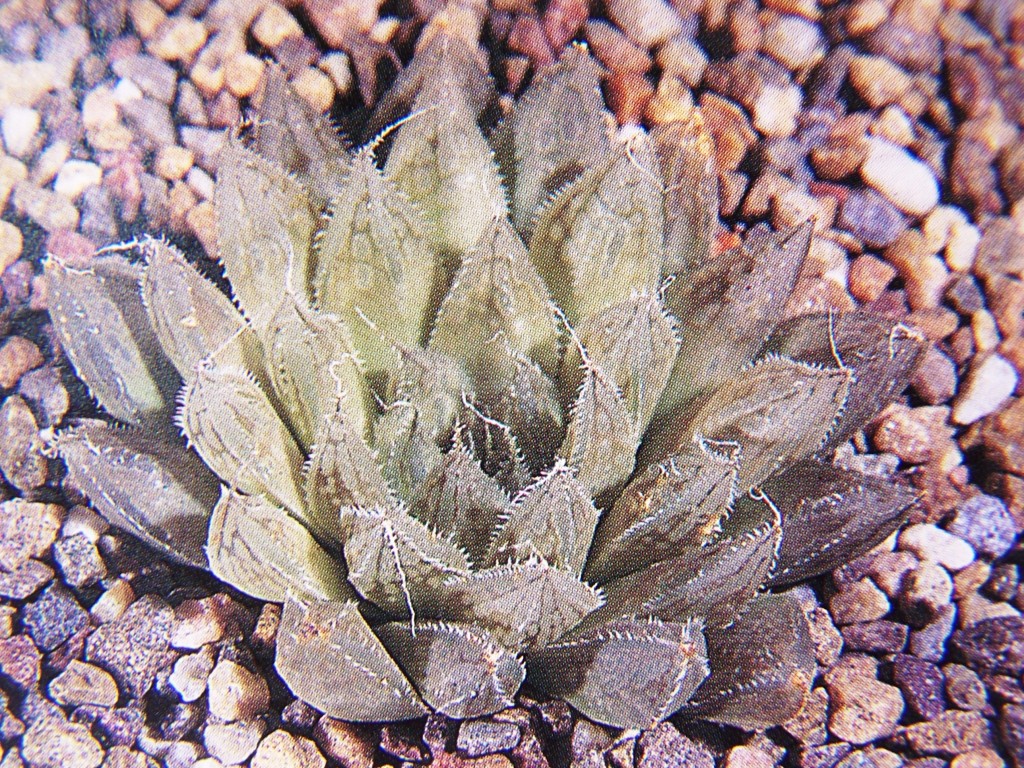
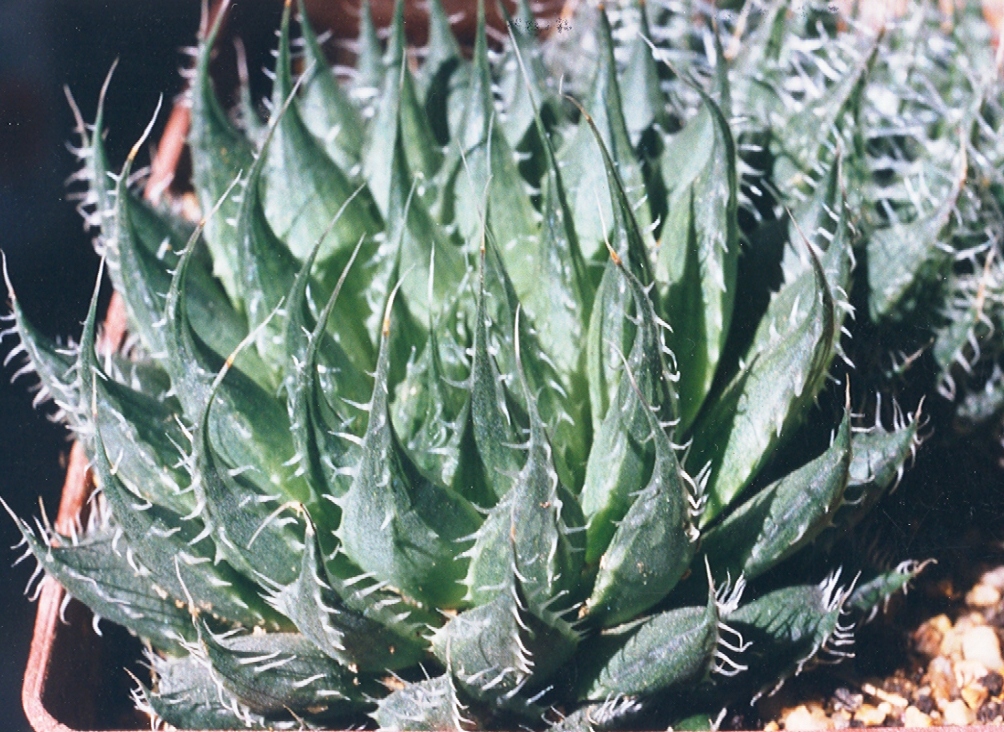
2. EA1497 Middelpos, Bitterfontein. Inland from Hondeklipbaai and north of Nuwerus. These are small plants and I also have not seen the population. The flowers are small and tend to globose.
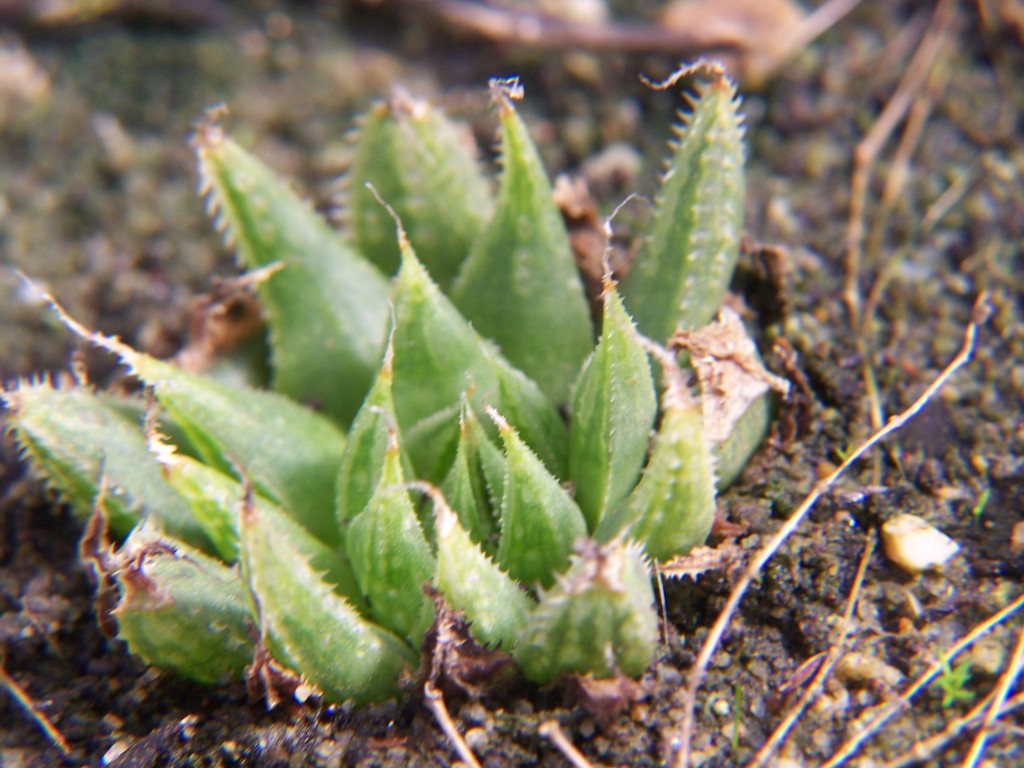
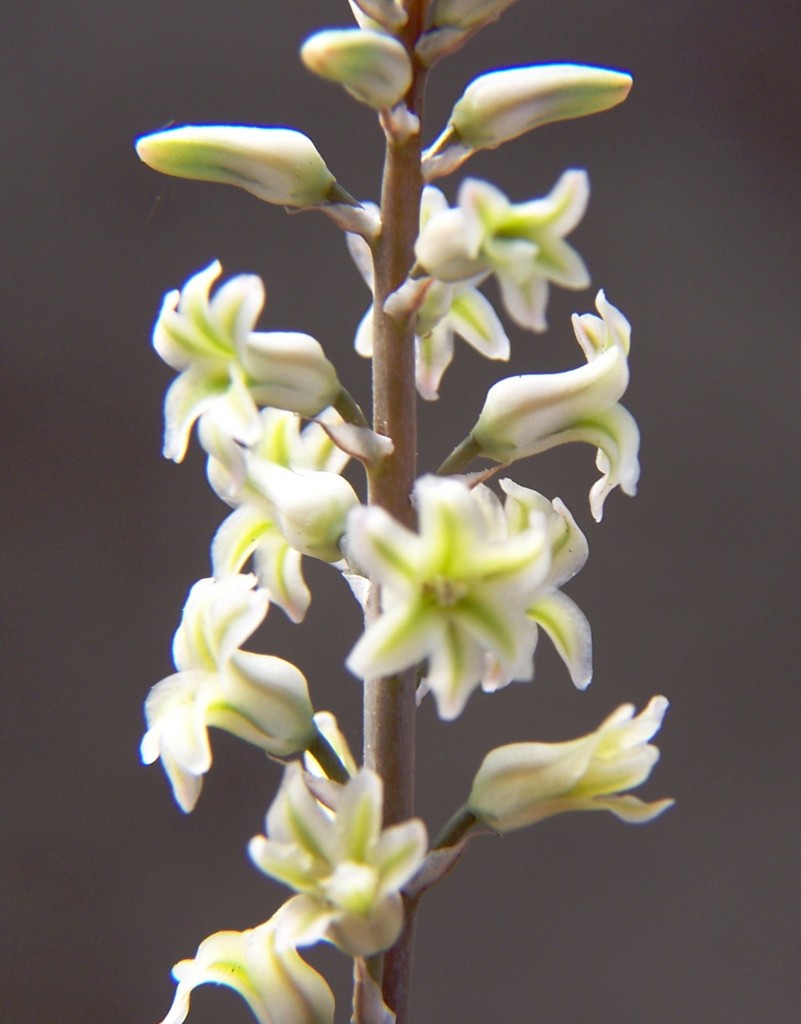
3. PVB6146 Komkans. West of Nuwerus. Low lying area and the plants are in among white quartz pebbles. This was probably where Rolf Rawe collected this as a new species which was distributed by San Marino Nursery in 1969.
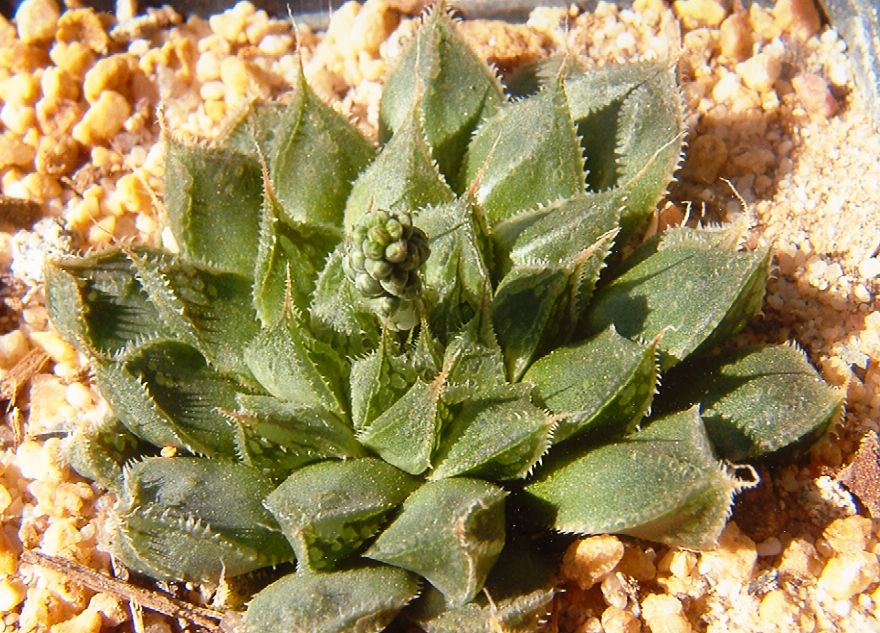

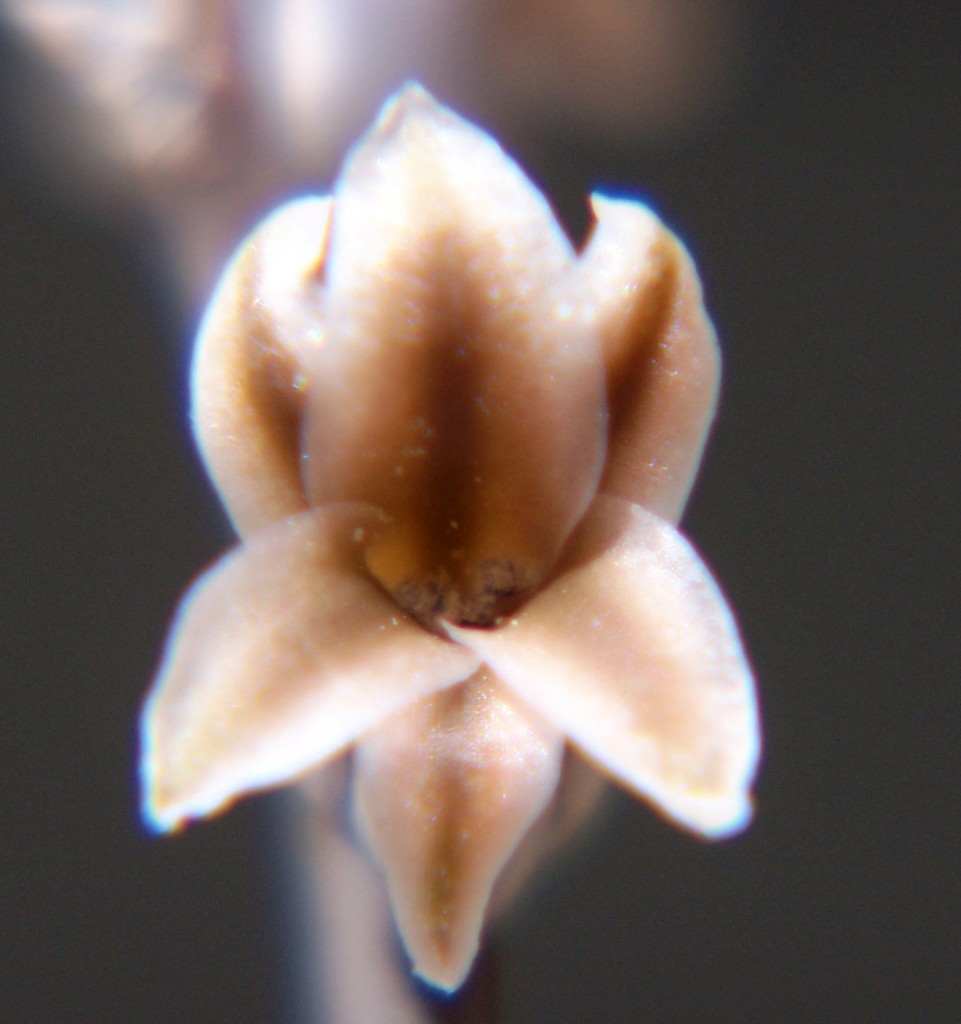
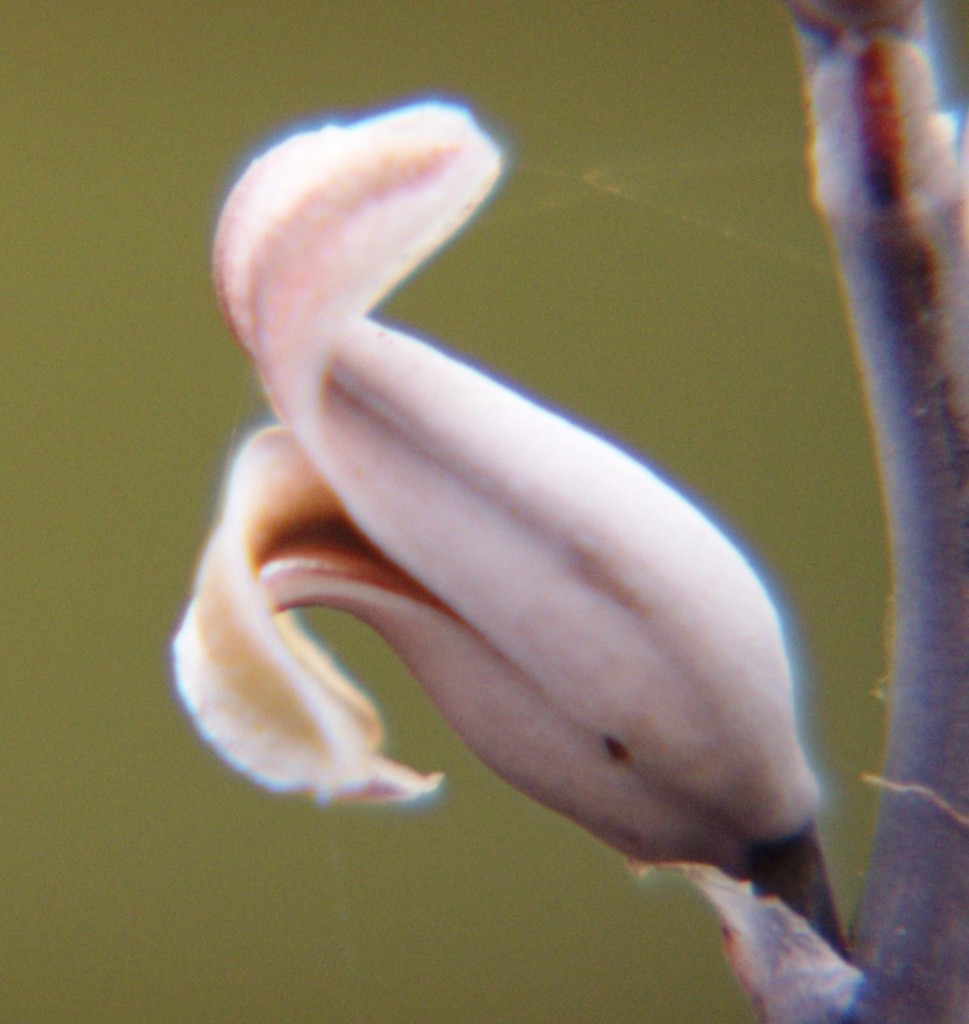
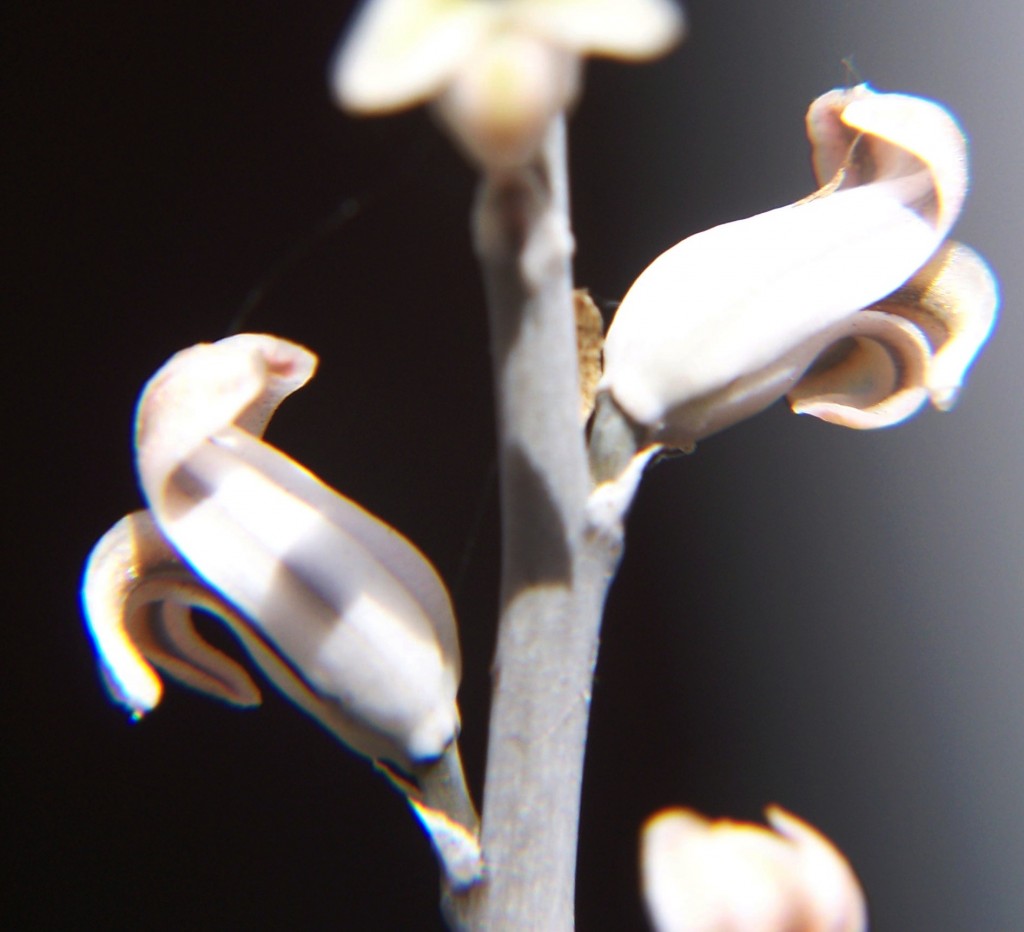
4. EA1442 and EA1443 Kareeberg Nuwerus. This is a low range of hills south of the Khamiesberg. Ewin Aslander also informed me that H. arachnoidea was present with nortieri, and both his collections are of very small plants. JDV95/11 and 95/12 ex EA H. nortieri ‘agnis’. Kareeberg, Nuwerus
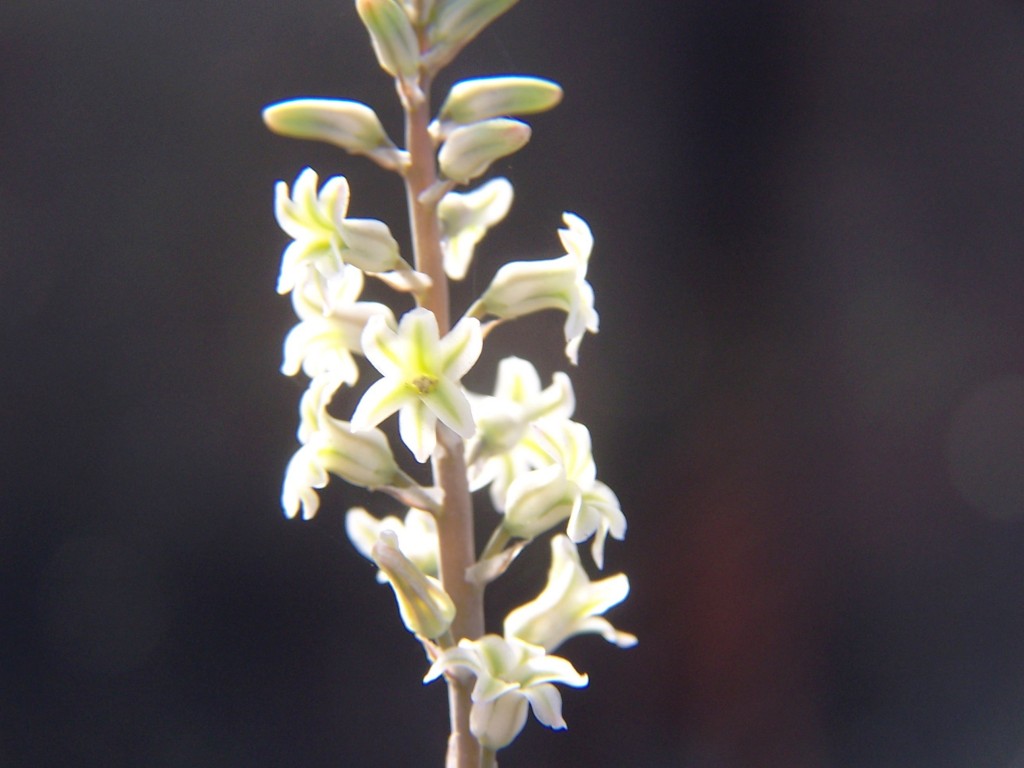
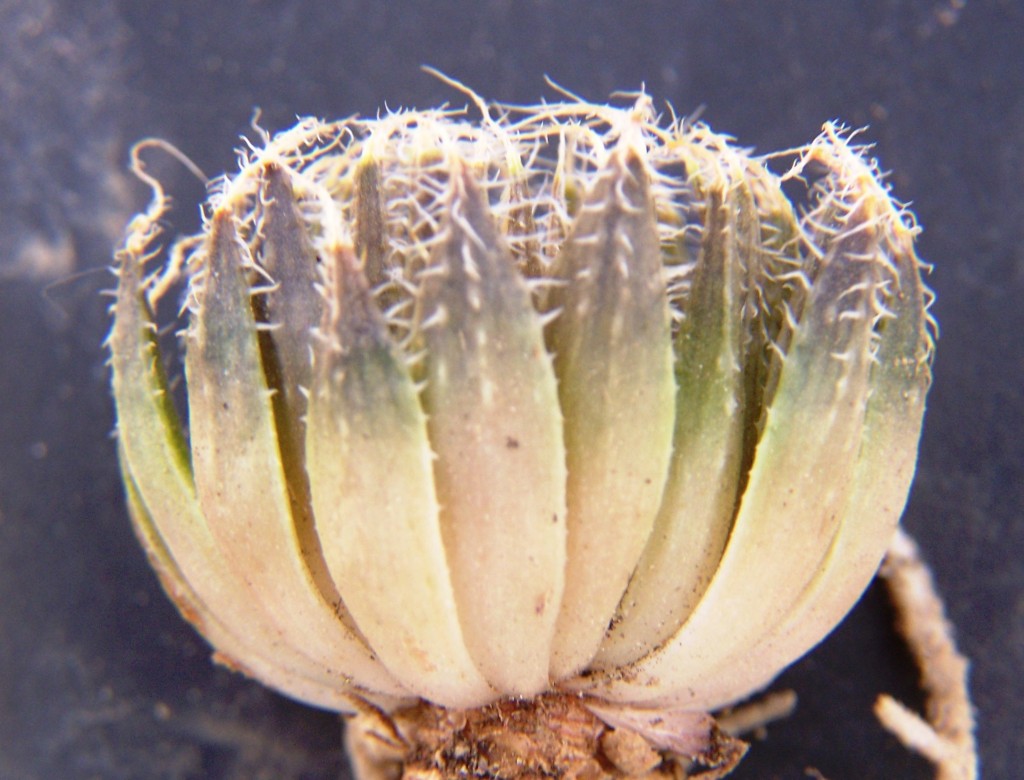
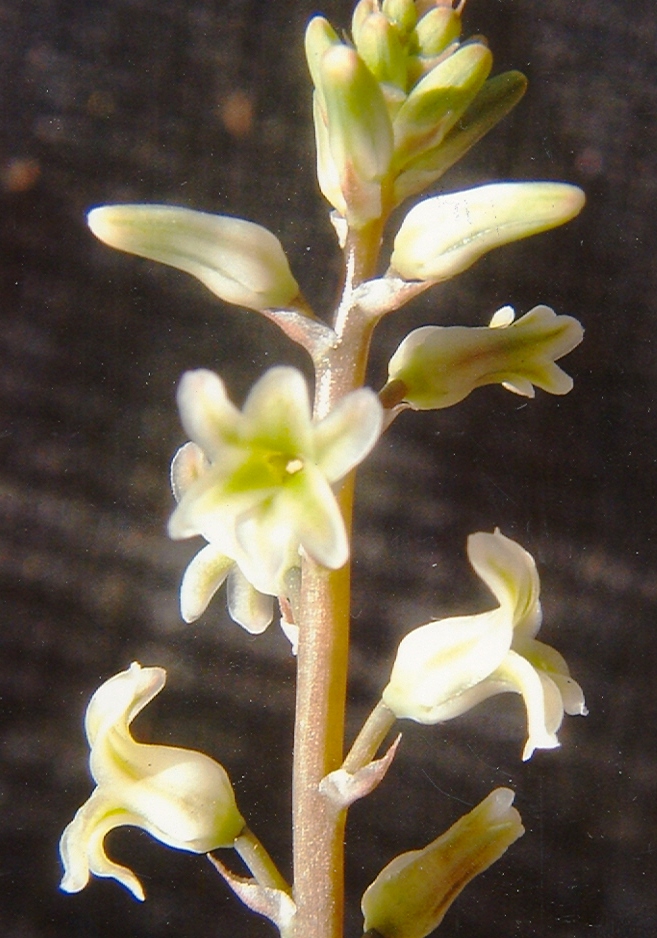
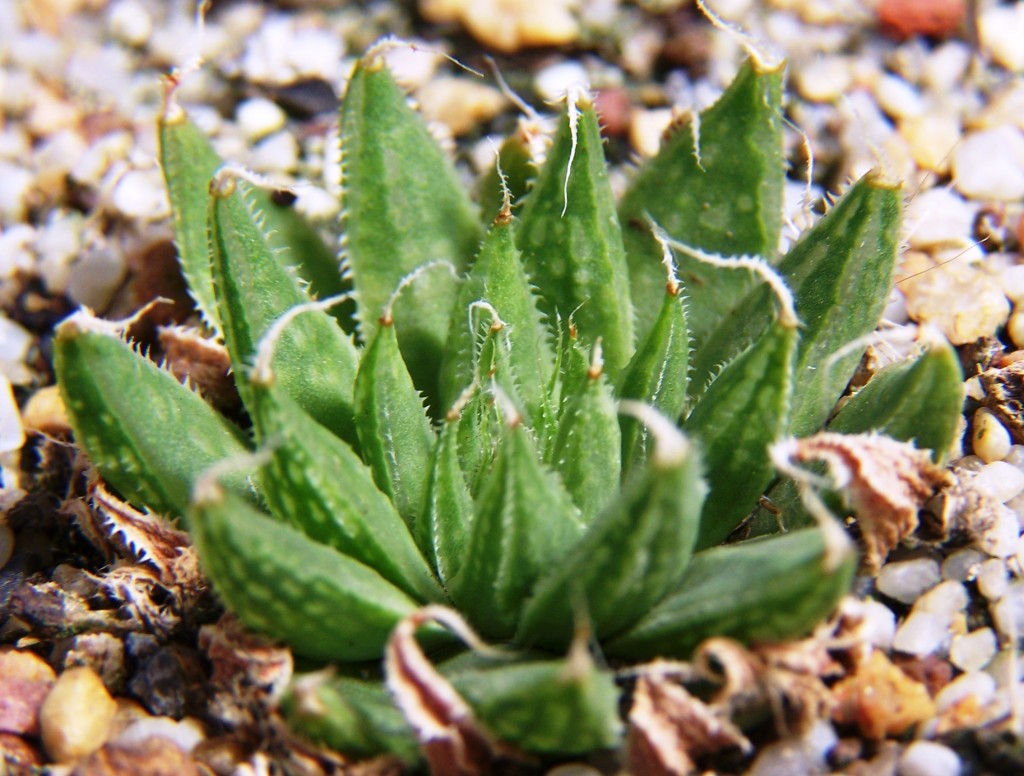

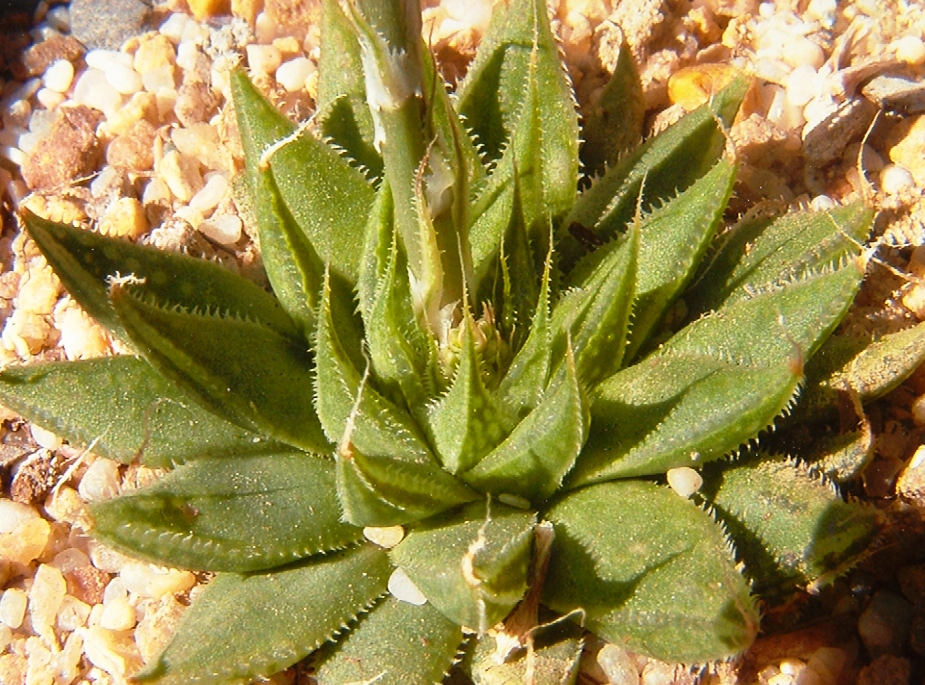
5. IDC53 Nuwerus. This collection was sent to me as the putative hybrid H. nortieriXarachnoidea. These were two very small plants under 50mm diam. And differ very slightly from Etwin Aslander’s arachnoidea plants from the same area, except that they seem to be marked with a faint reticulation. I am not sure they are hybrids and in fact do not know if H. nortieri hybridizes with any other species.

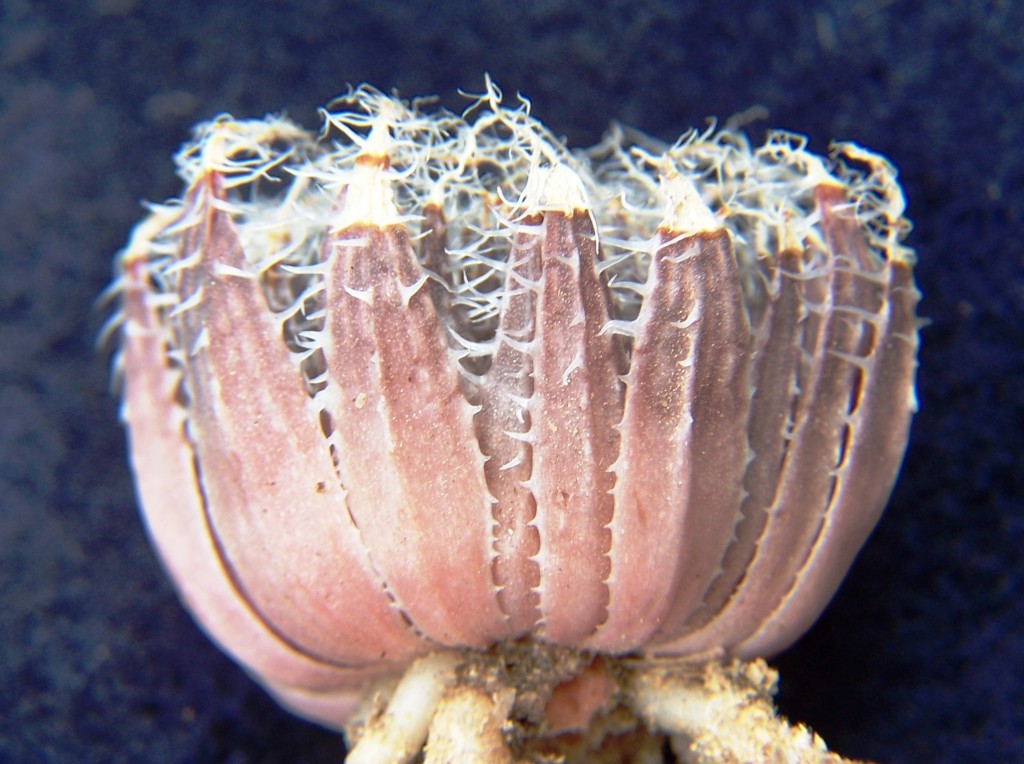
6. MBB7522. Arizona. This locality is north of VanRhynsdorp on the Knersvlakte on the farm Arizona which now belongs to Western Cape Nature Conservation Board. This is south of Nuwerus and the substrate is shale. The species is also present on the adjacent Kwaggaskop farm belonging to Buys Wiese the well-known nurseryman. The plants are very truncated as the vegetation is sparse and low. The plants were recorded by Annelise leRoux and Steven Hammer who told me of it, and we were taken there by very kind favour of Kobus Kritzinger of Western Cape Nature Conservation Board. *** I have confused the true identity of H. agnis in the above 4 populations and it apparently is not the small plants in the Nuwerus area that I garnered from the place name given in the description, but simply the larger version at Arizona. That is an even stronger contender for inclusion in H. nortieri.
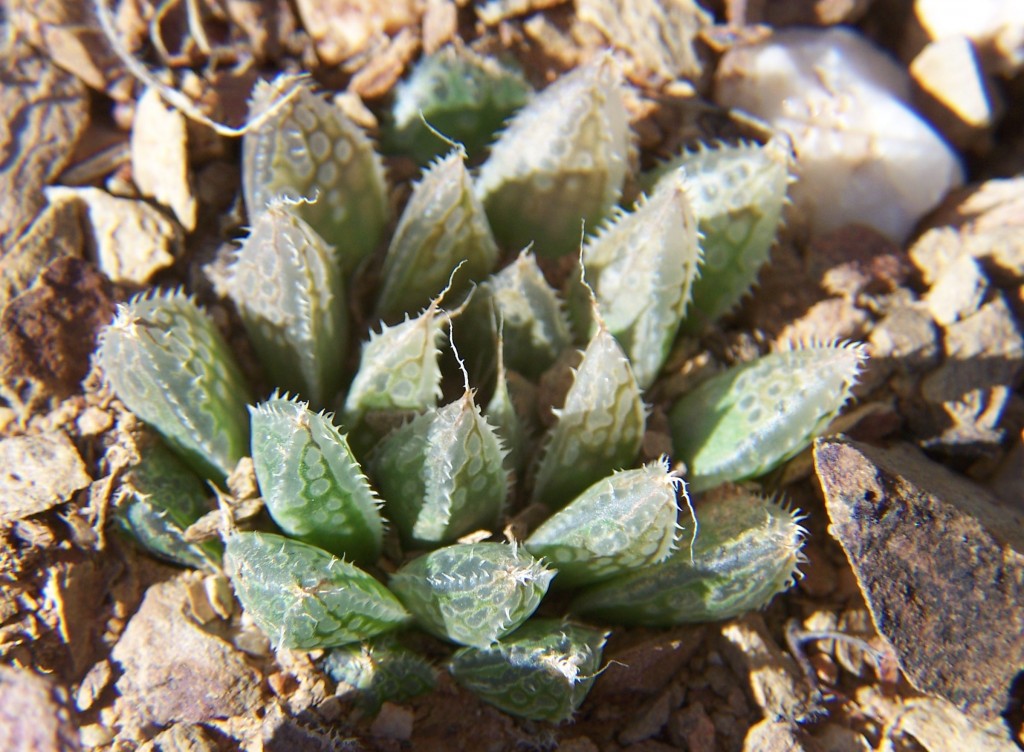
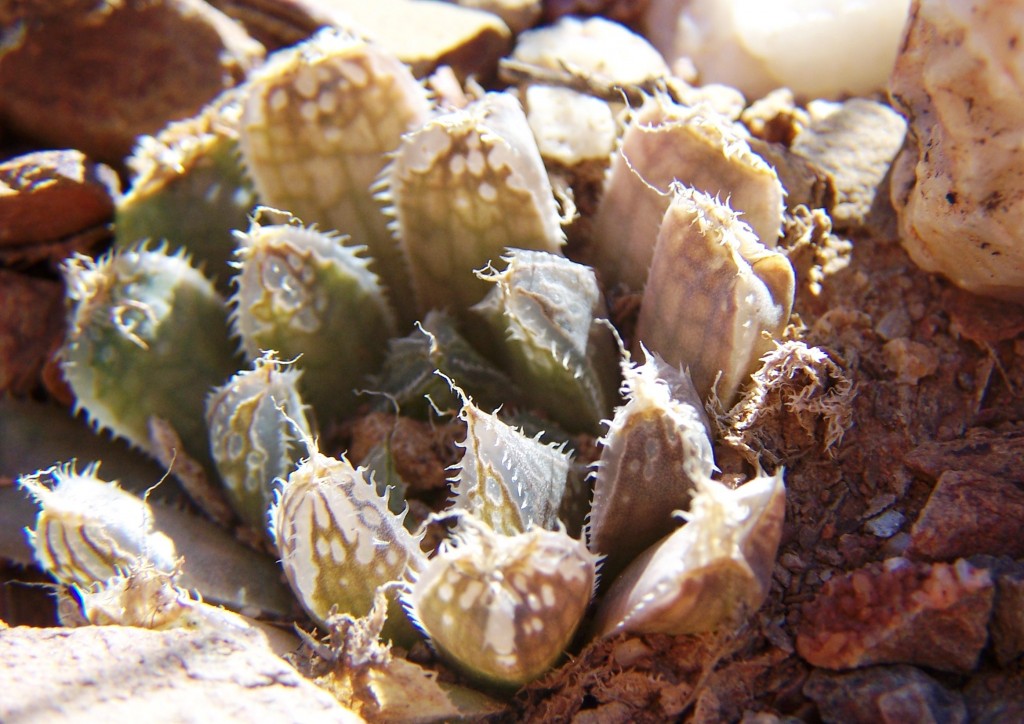

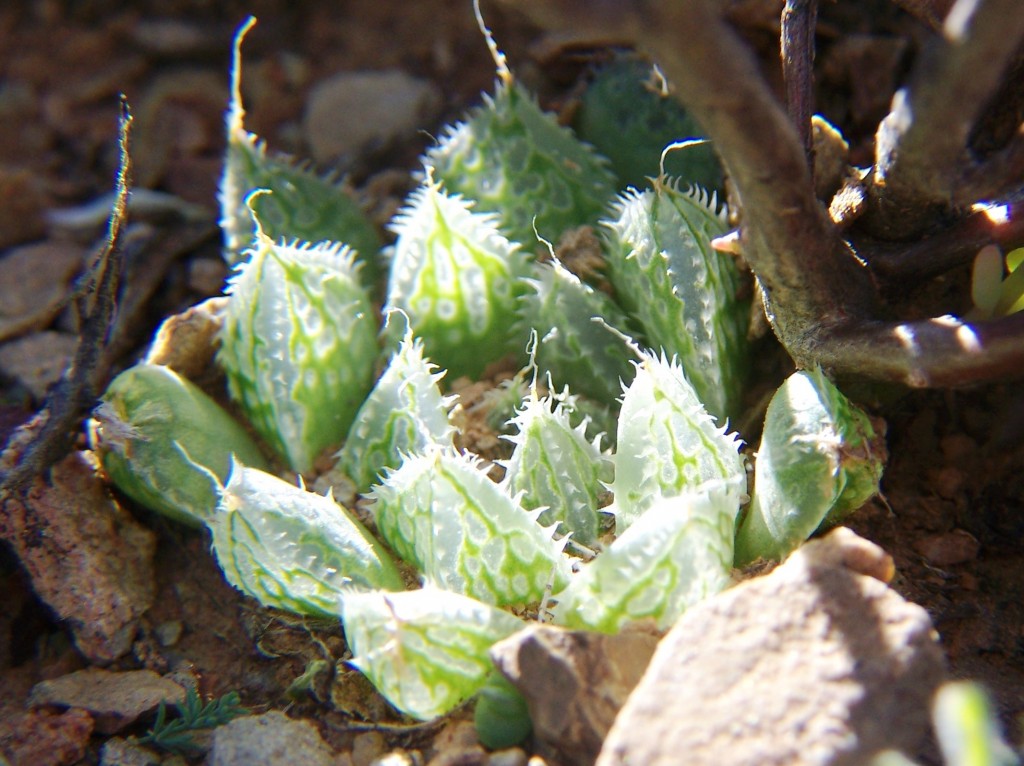
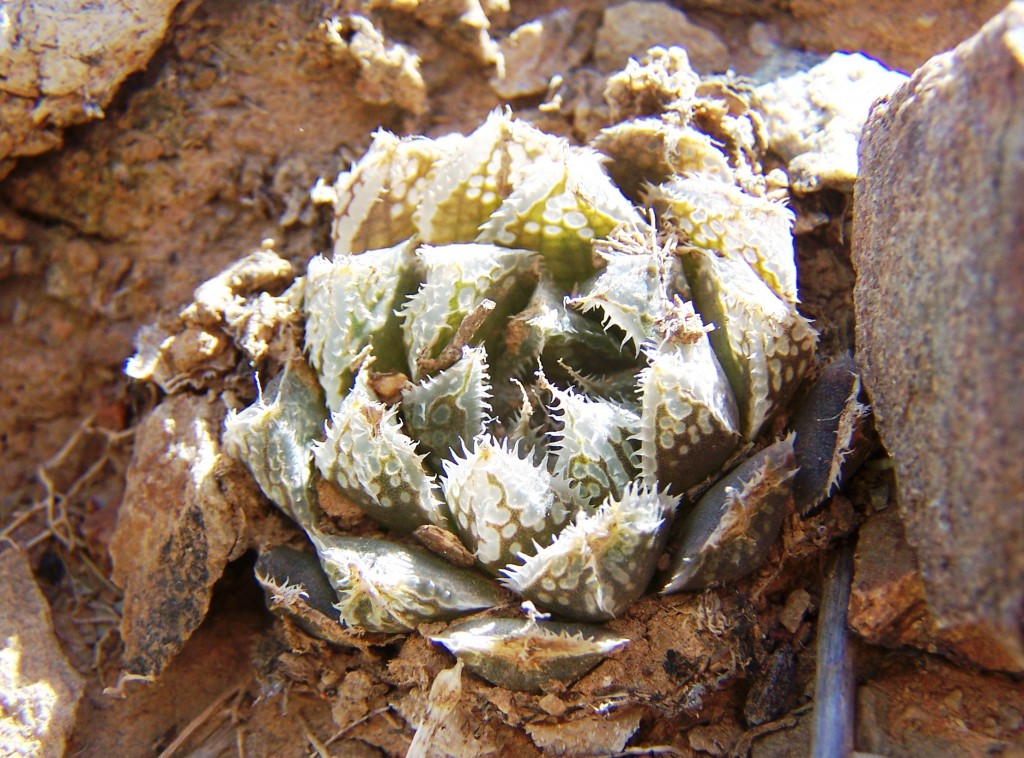
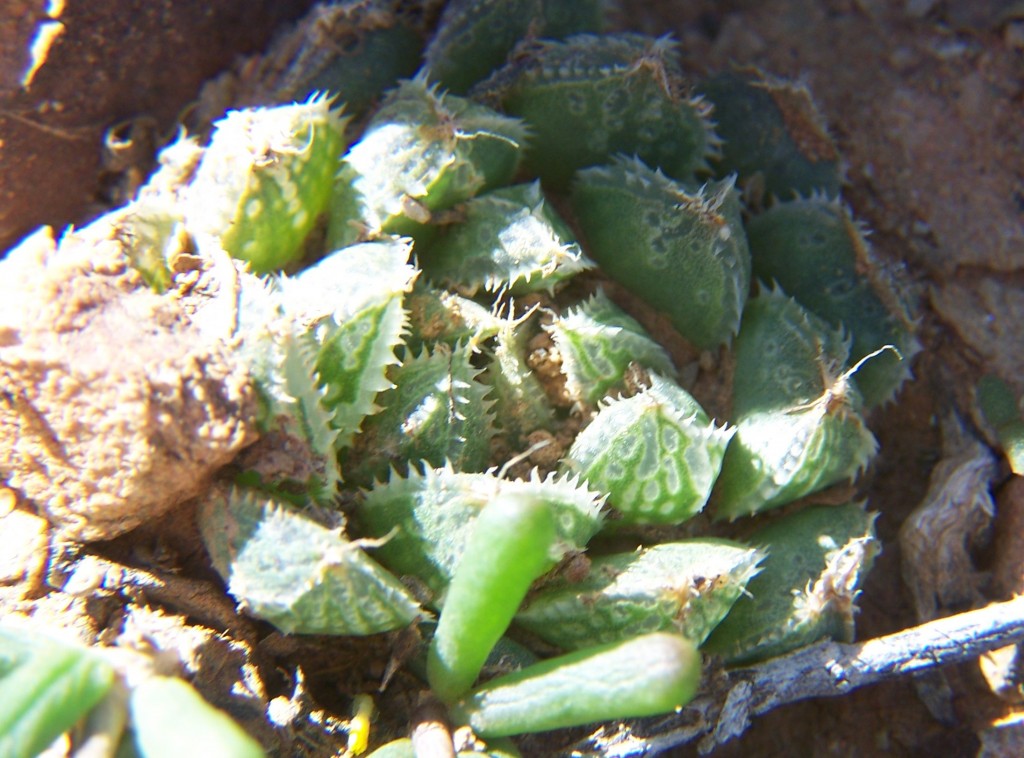
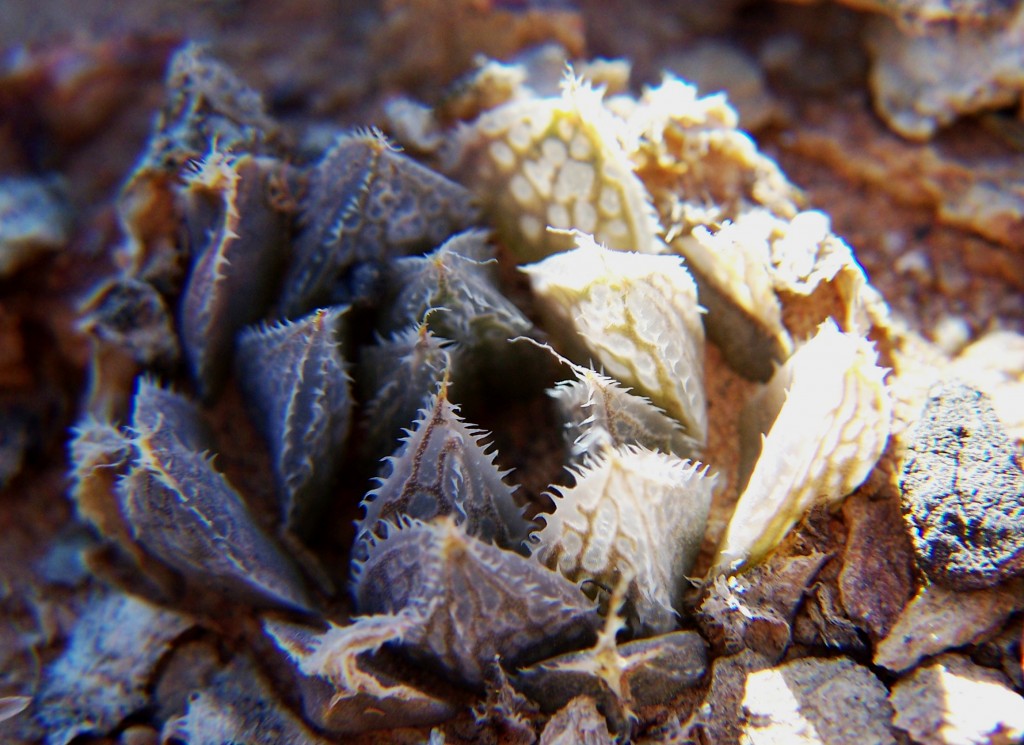

7. MBB7578. Nuweplaas P.V. Bruyns reported H. nortieri northeast of Nieuwoudtville. We visited the area in early summer and first found H. arachnoidea and then H. nortieri. Nuweplaas is in the extreme southwestern Bushmanland and Aloe dichotoma is virtually at the extreme of its distribution here. The substrate is Dwyka Tillite and the vegetation is Succulent Karoo. There are species like Aloe krapholiana and Euphorbia cylindrical on the farm as well so there is an unusual element in the vegetation. The plants were extremely well-hidden and the plants must be able to tolerate very dry and hot conditions here.
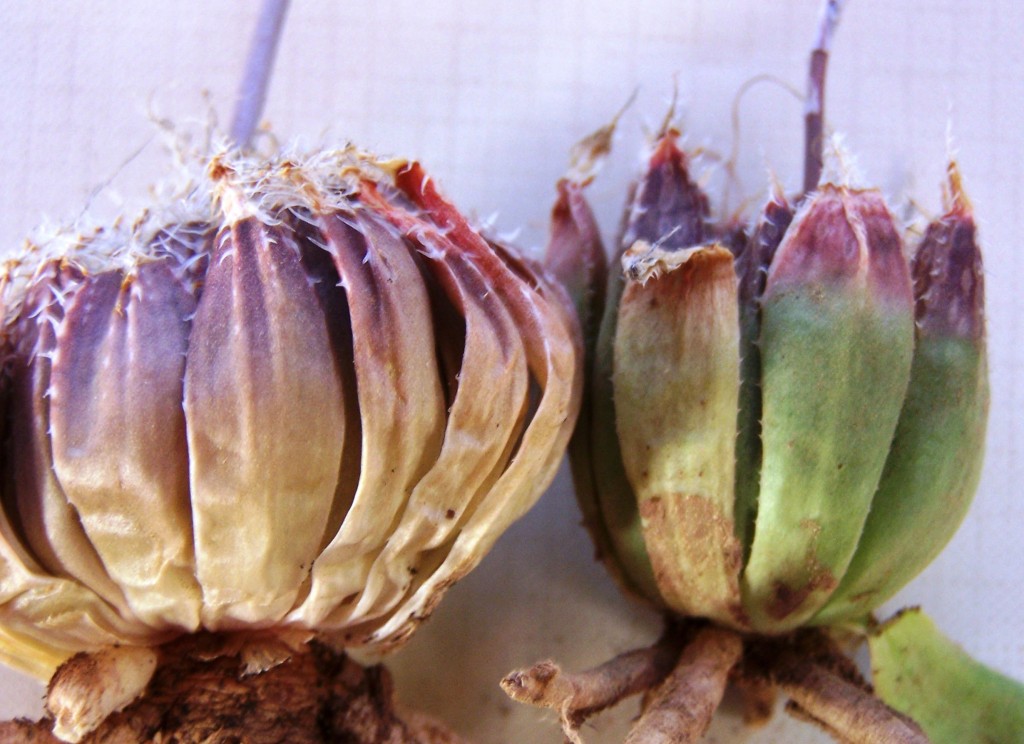

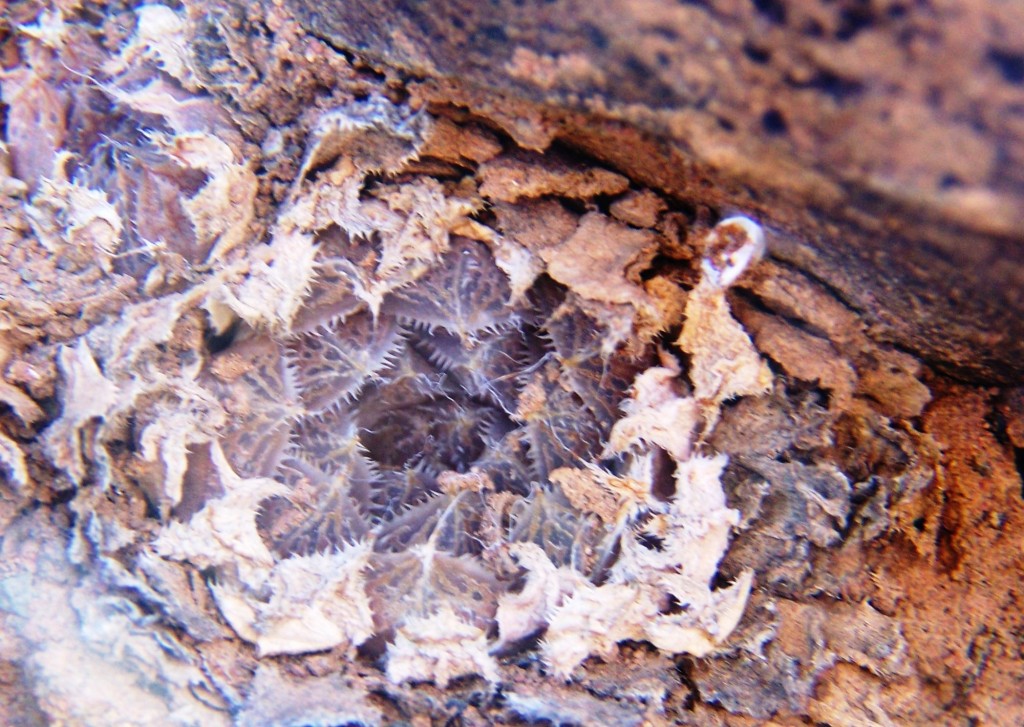
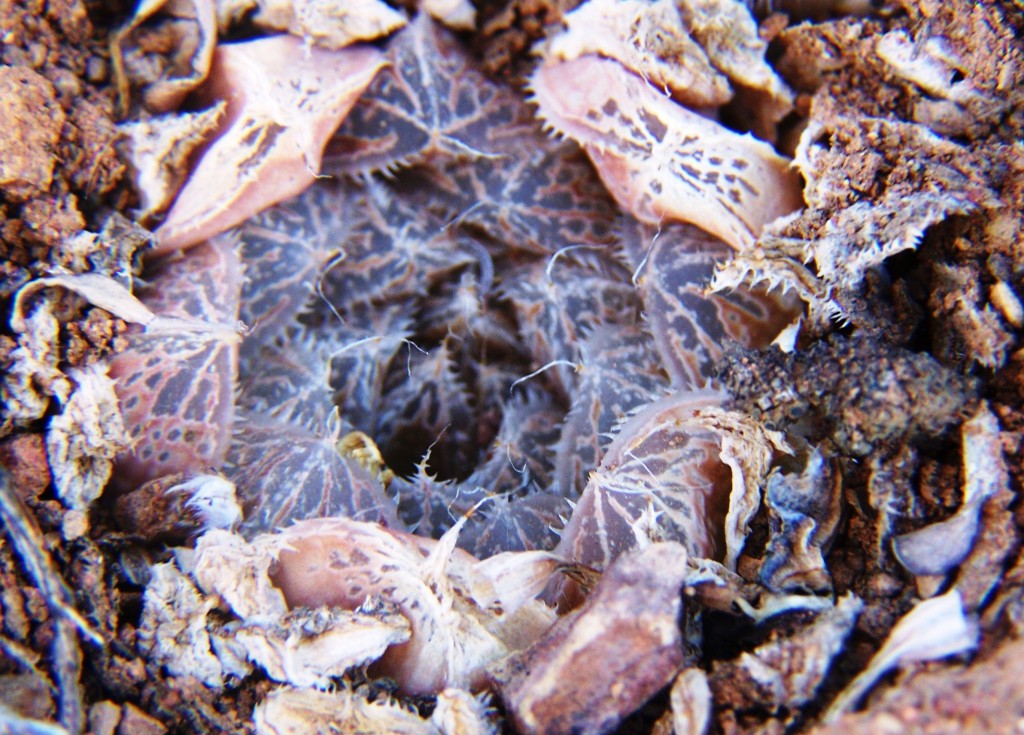
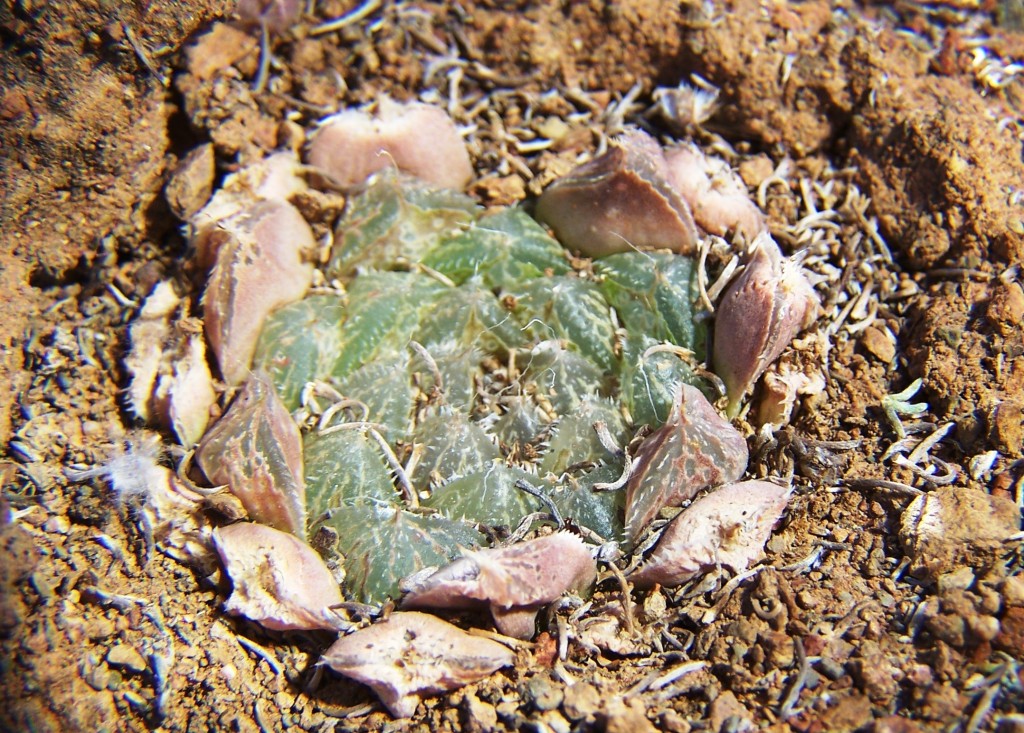
8. PVB7167. Steenkampskop. This is the mountain between VanRhynsdorp and VanRhyns’ Pass. The plants are very similar to those at the foot of the pass and generally fairly similar to var. globosiflora, as indeed are those at Arizona and Nuweplaas. The flowers, however, are not globose.
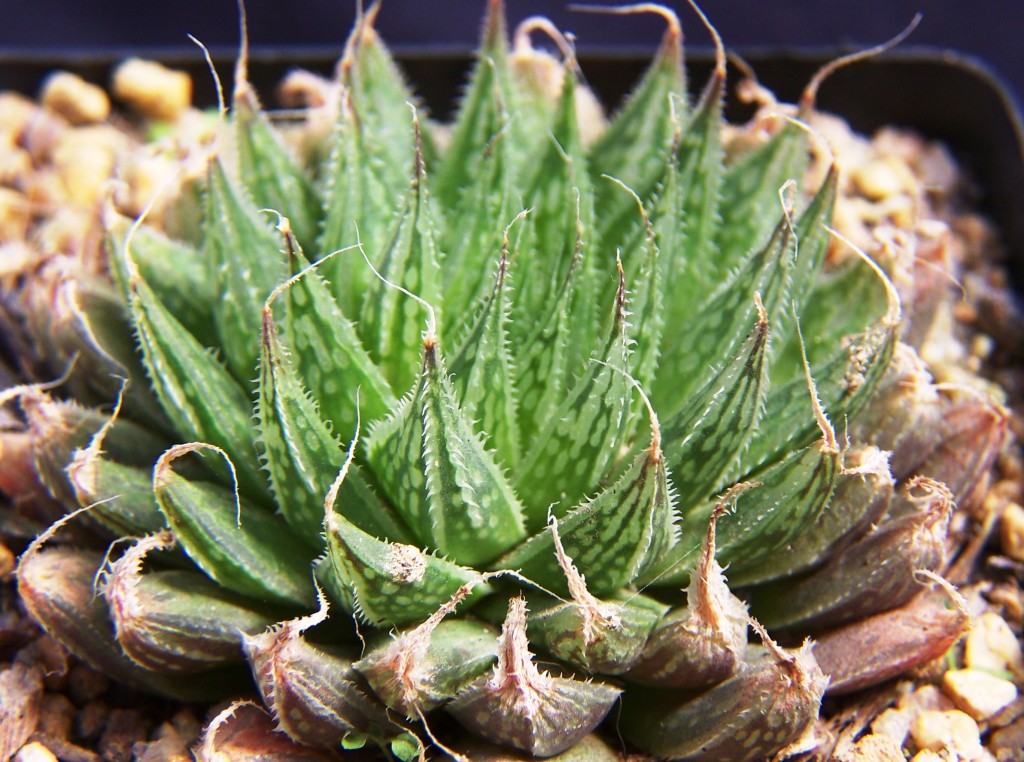
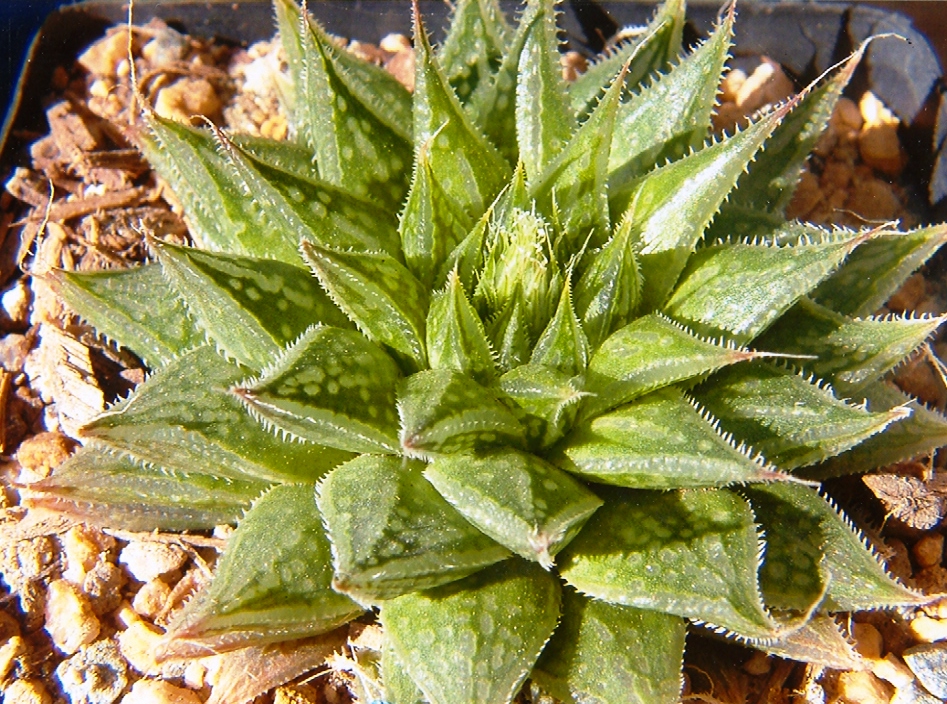
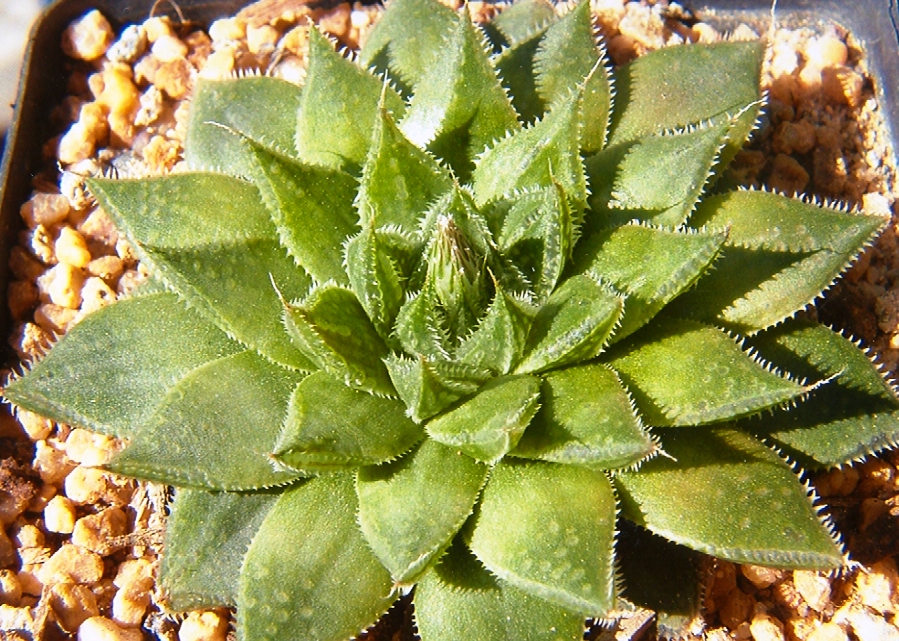
9. MBB7523. Gifberg. This is the first higher altitude record southward from VanRhynsdorp at nearly 650m. The substrate is sandstone on the northwestern corner of this geological formation. The plants are smaller and with more lanceolate leaves than other records. The species has been recorded at Sandfontein a little to the southeast and also at the Koebee Pass to the east.
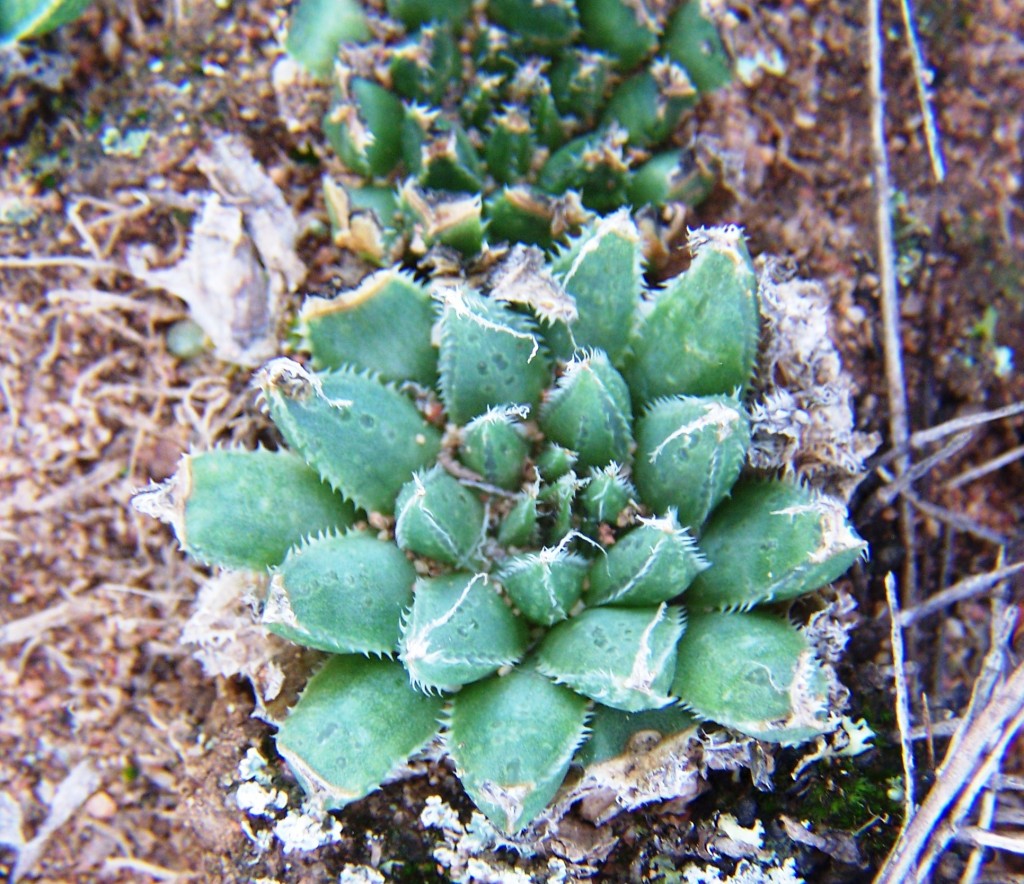
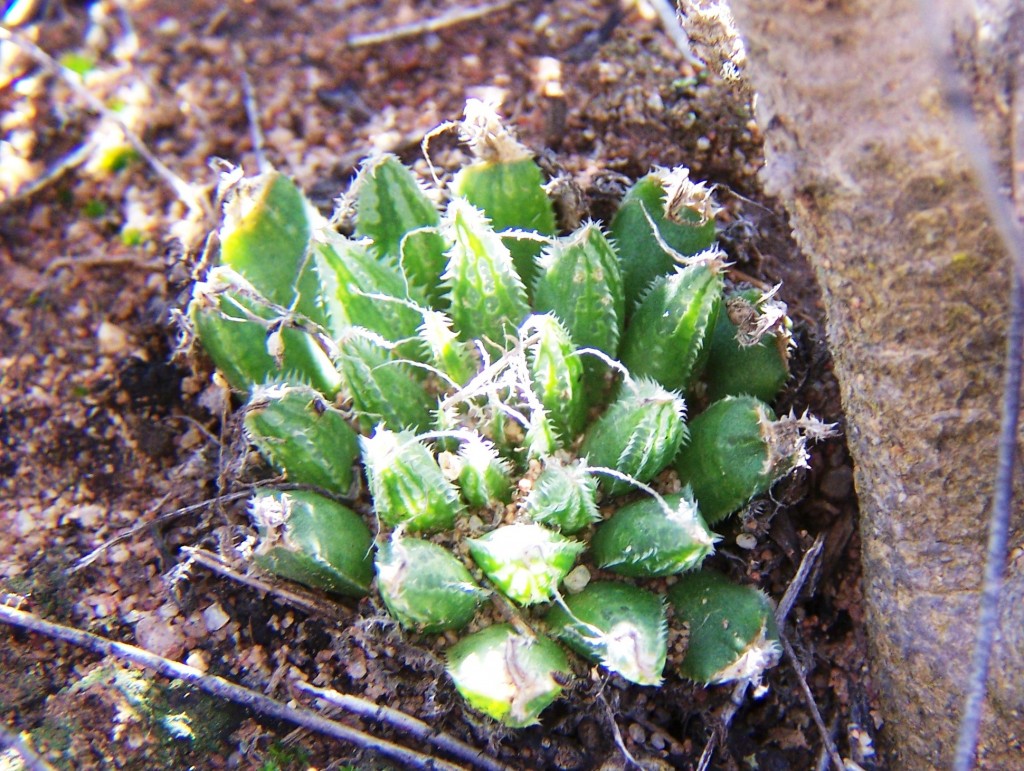
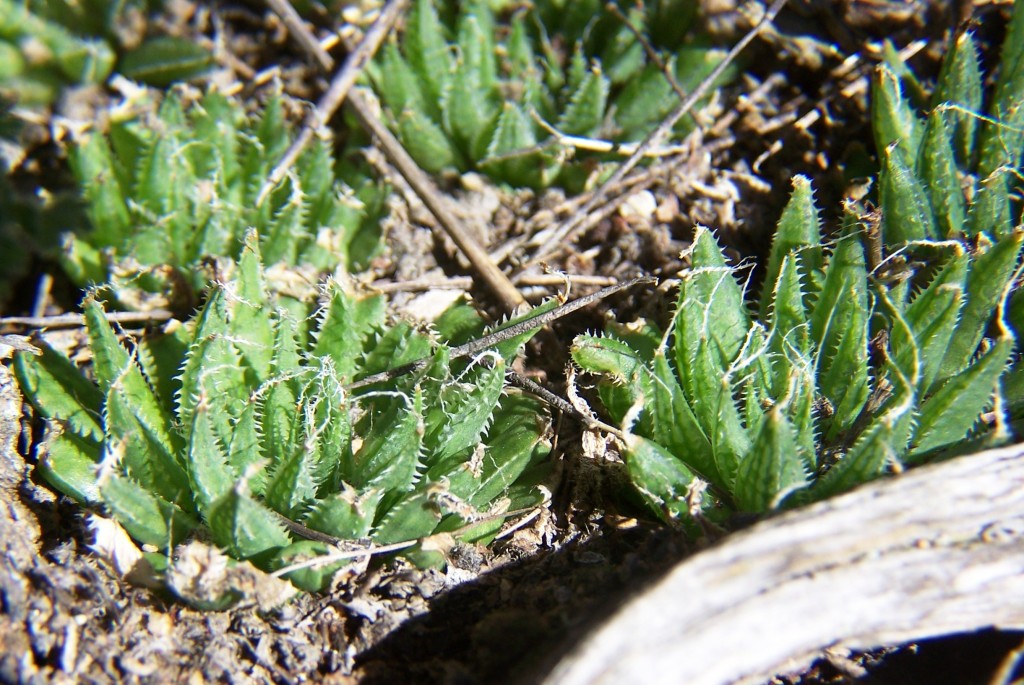

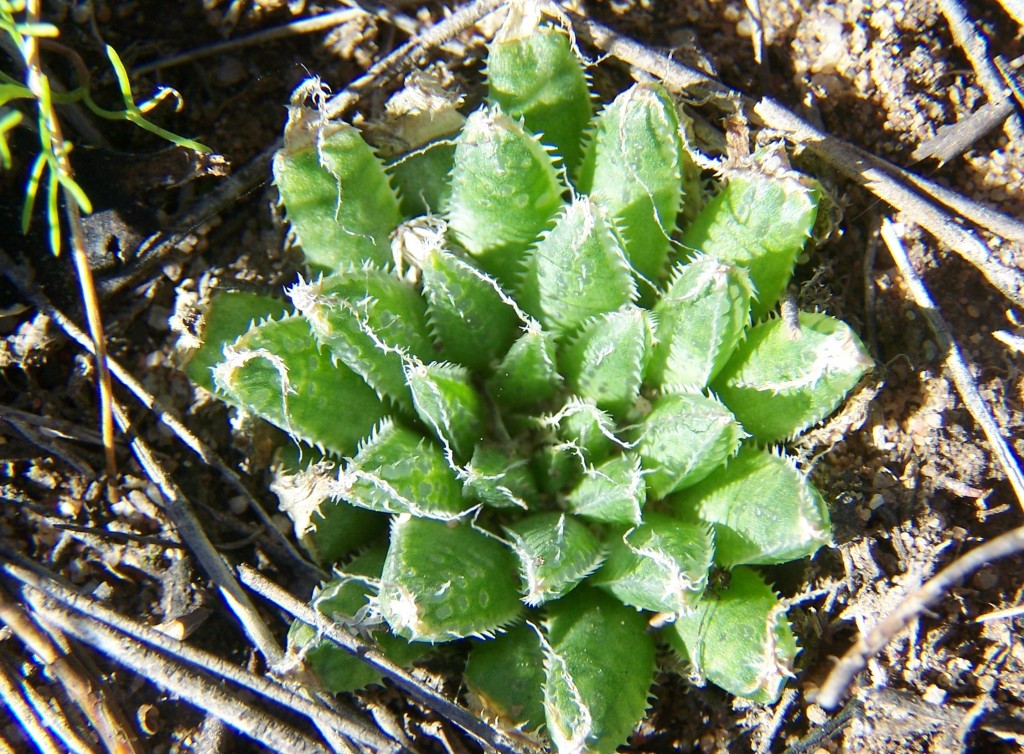
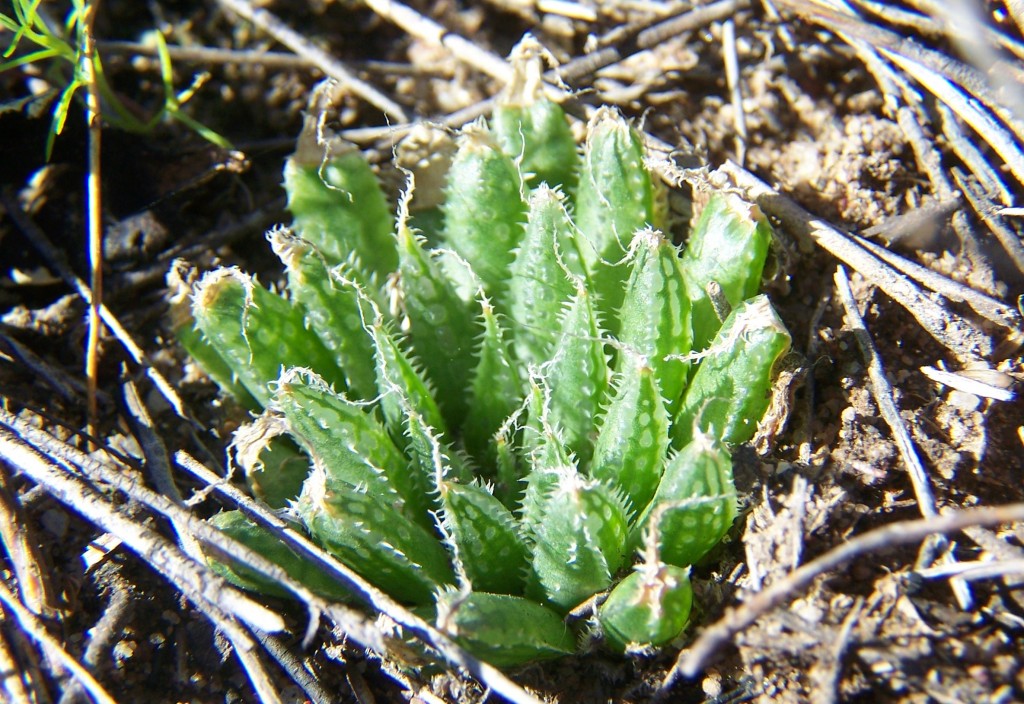

10. MBB7524. N. Clanwilliam. The var. montana was described from the Pakhuis Pass and it is not clear exactly where this is on the Pass. The eastern part of the Pass is dry Renosterveld and there is no confirmed record of the species from there to Doringbos at the northern foot of the Pass where var. globosiflora occurs. Derek Tribble described this locality on the western end of the pass, just north of Clanwilliam. At about 300m above sea level it is not really high in respect of the Cedarberg. The plants occur rather sparsely and are fairly solitary. Leaf shape varies from relatively abbreviated to more lanceolate and one plant particularly had leaves with linear translucent markings rather than rounded. It is generally difficult to make these observations under field conditions as the plants are well hidden and often withdrawn into the soil.
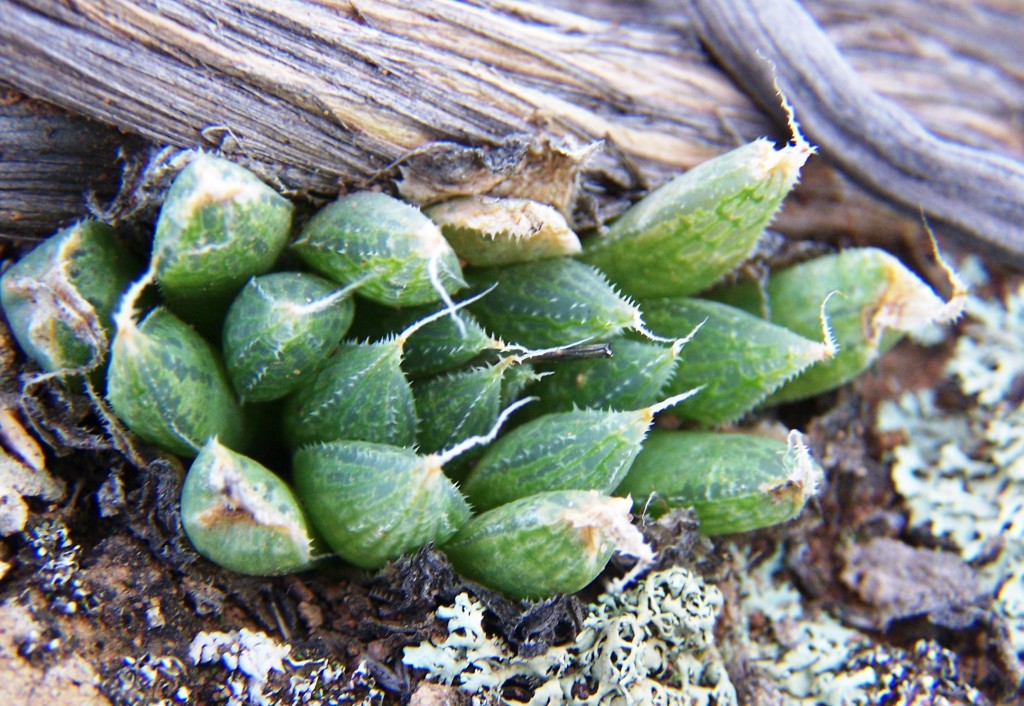
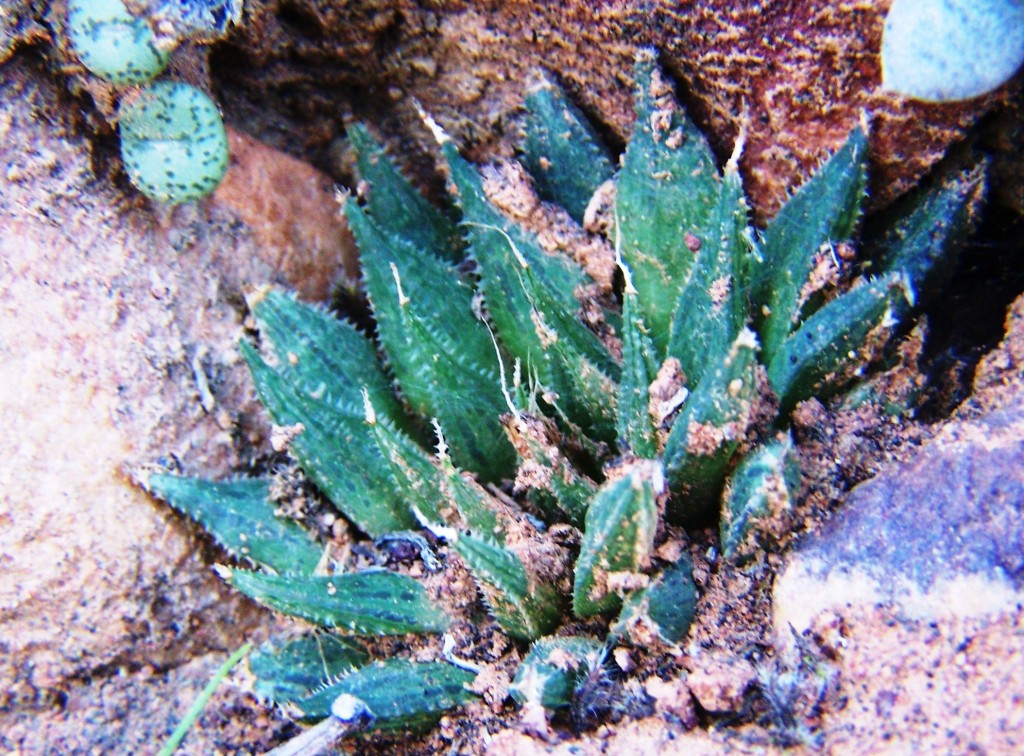

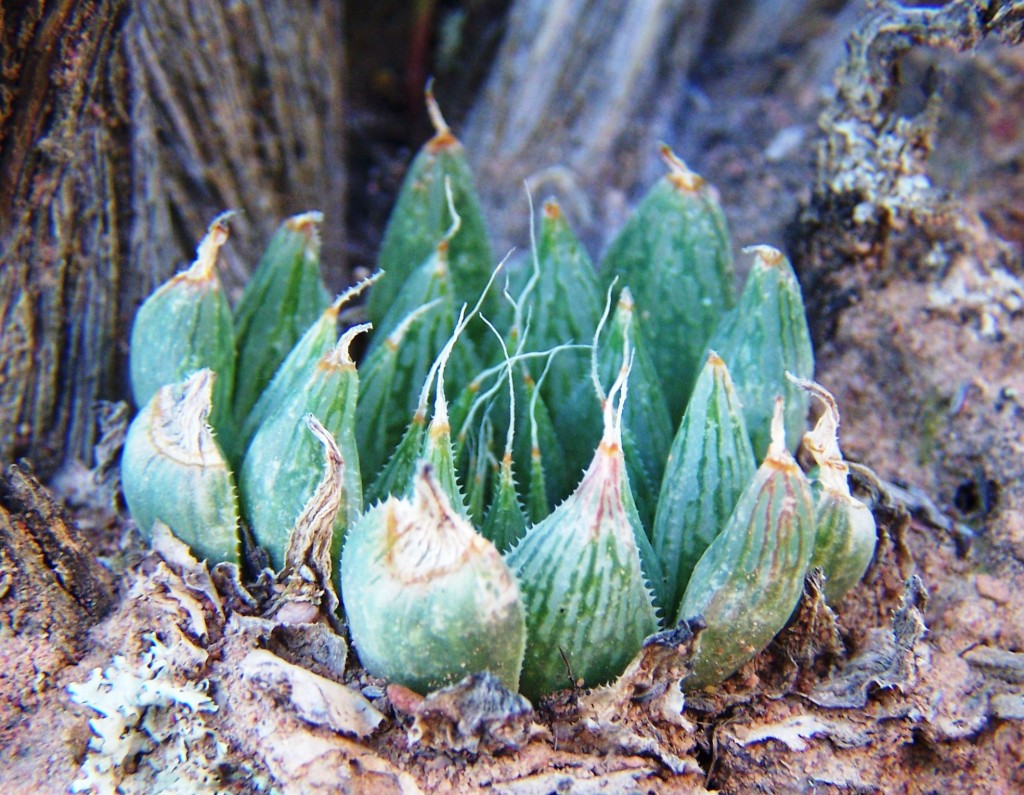
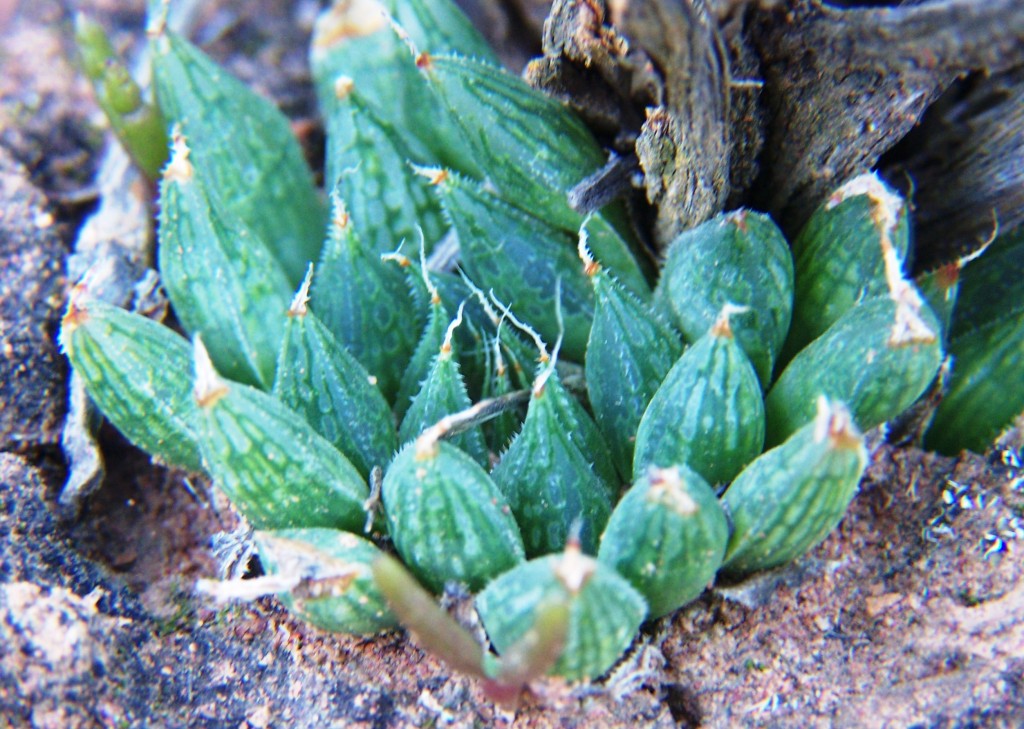
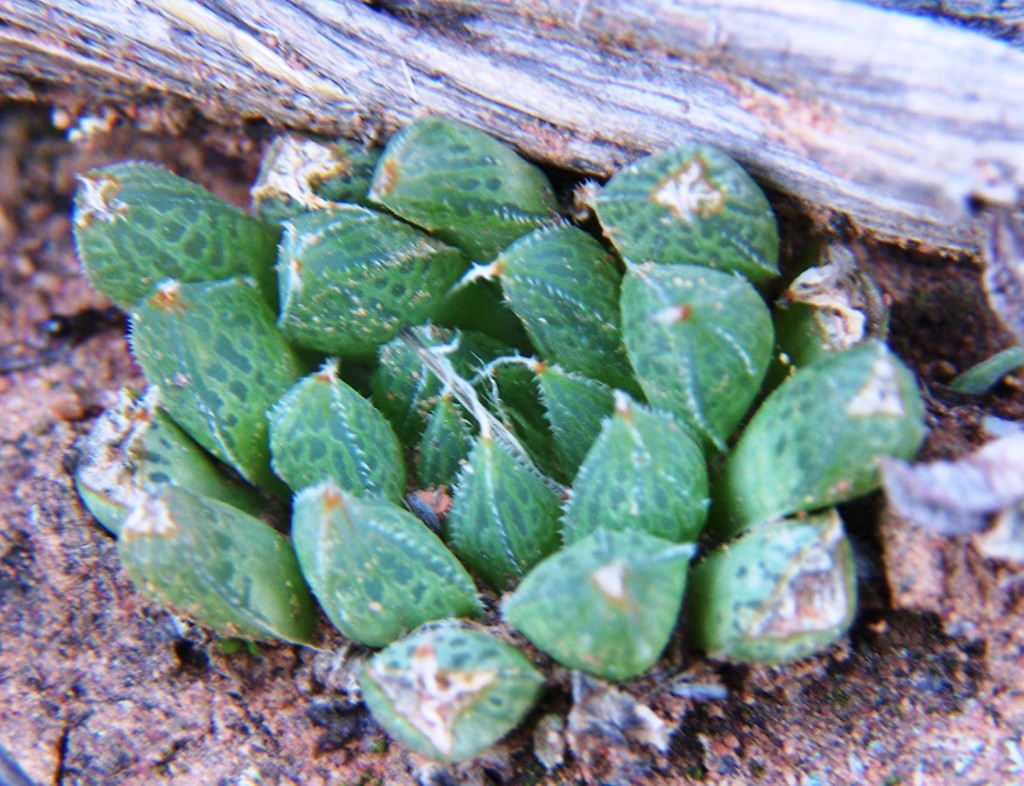
11. MBB7579. EA1441 (top two). JDV99-11. Trawal Bridge. The species was first described from a collection made near the Bulkshoek Barage between Clawilliam and Klawer. I have seen it there, at the Doorn River Bridge and also on the northern rocky banks of the Olifant’s River near there. At the Trawal Bridge the plants are on a low lying very exposed and hot sandstone ridge. Note the flower photographed and how short the free parts of the petals are.
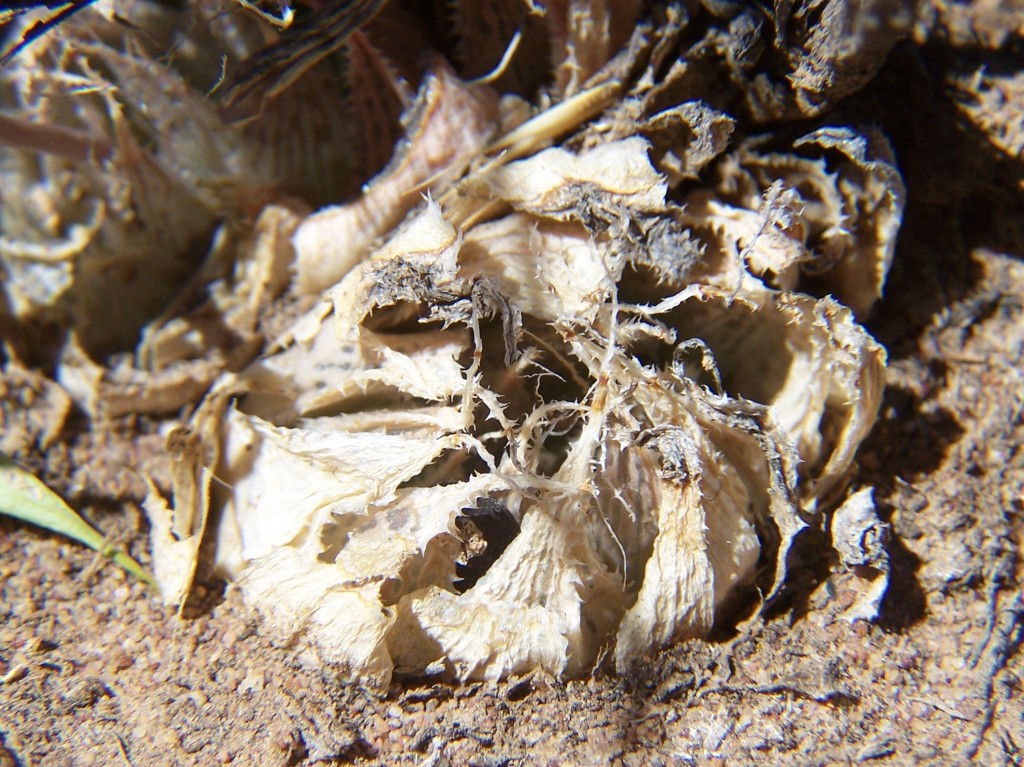

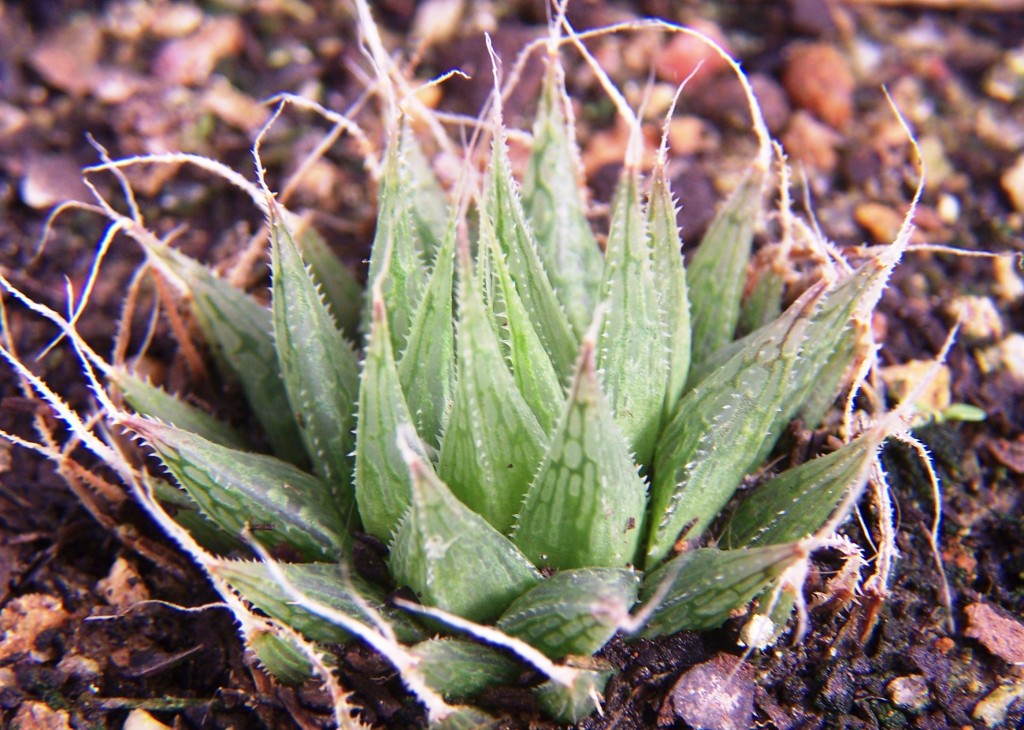
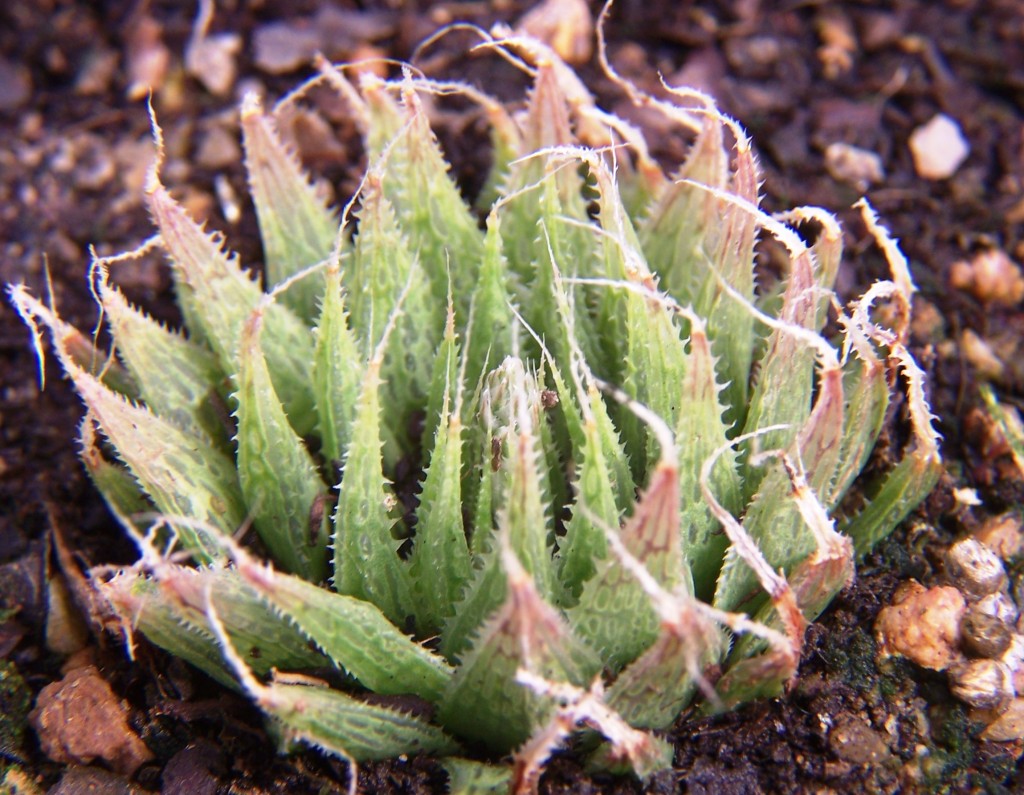
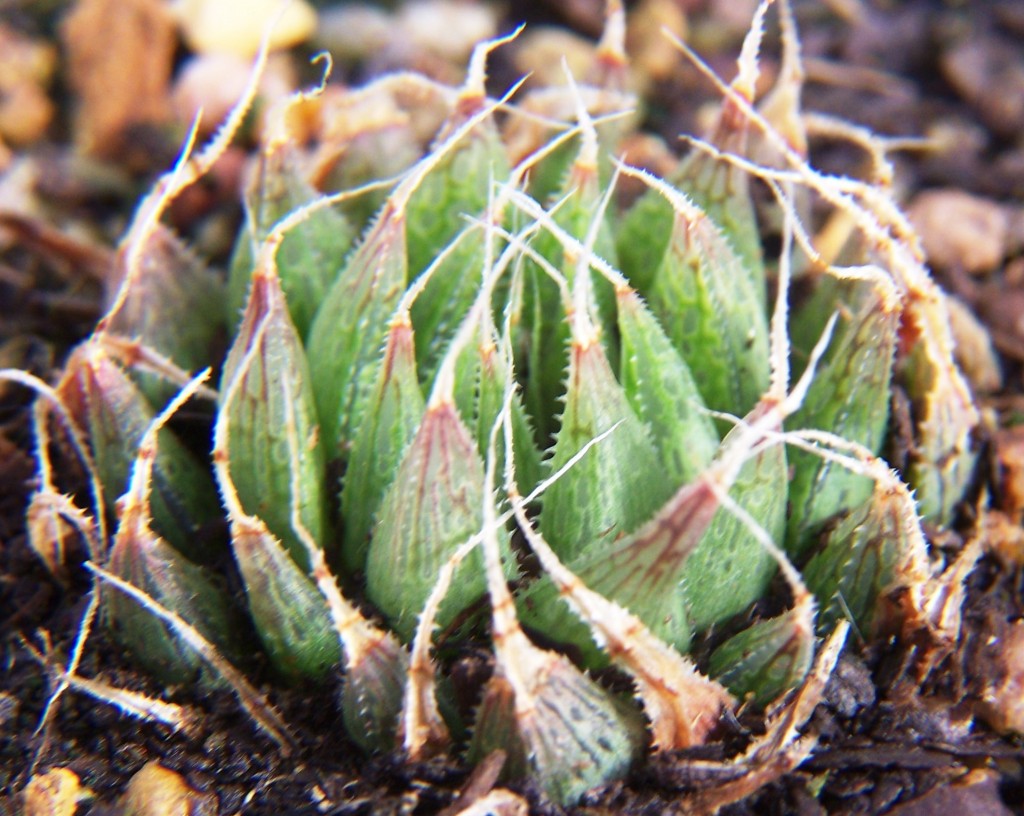

12. MBB7525. S. Clanwilliam. Whereas the other habitats have been out of or marginal to Fynbos Vegetation, this is true Fynbos at this site. It is west facing and very dry in summer. As the lichen growth shows, the winter conditions will be quite moist. There are several records south of this towards and southeast of Citrusdal which I have not been able to confirm. JDV99-11 H. nortieri. Trawal.
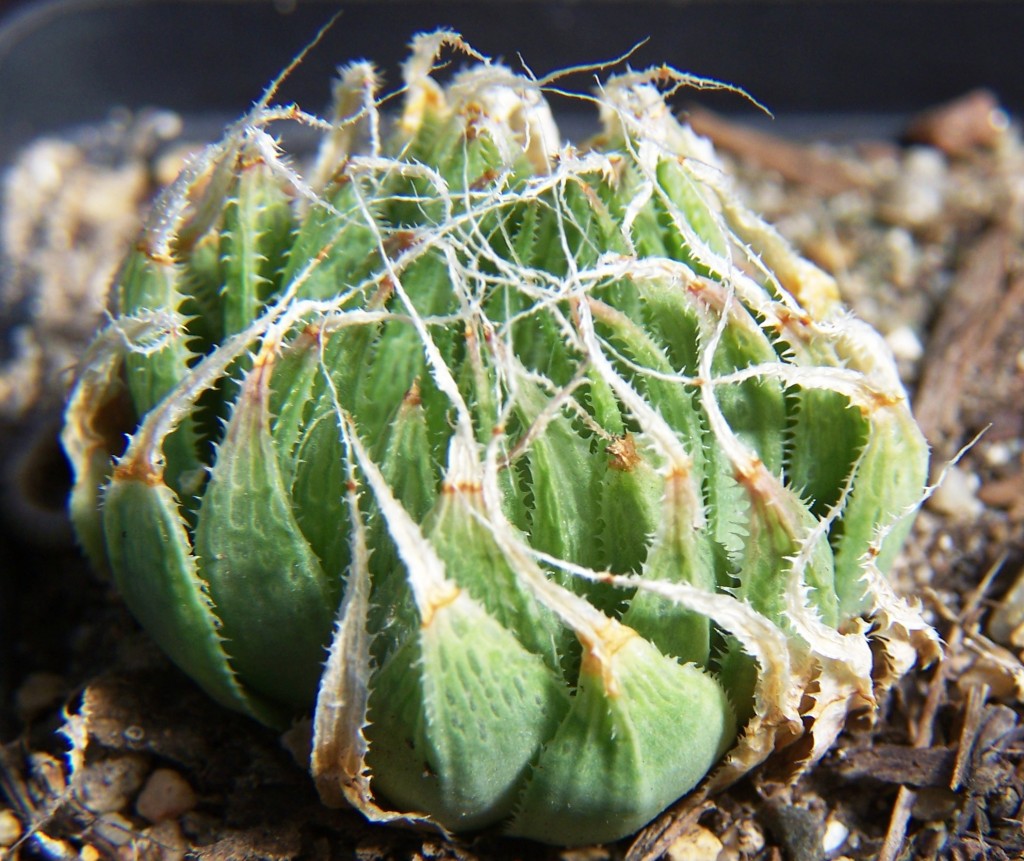
13. MBB6505 and 7595. N. Dwarsrivier. This is in the Central Cedarberg at about 800m. The plants are on large loose boulders lying in the valley floor. When I first saw the plants I was very impressed with the number of leaves in the rosettes and their attenuation. These impressions can be very unreliable. I still have a large specimen in cultivation but revisited the site recently to establish that the plants are within “the normal range of variation of the species”. I write this rather facetiously because it is actually very difficult to obtain a true impression and my long experience of plant descriptions and identifications suggests to me that taxonomy is characterised by such subjective judgements.
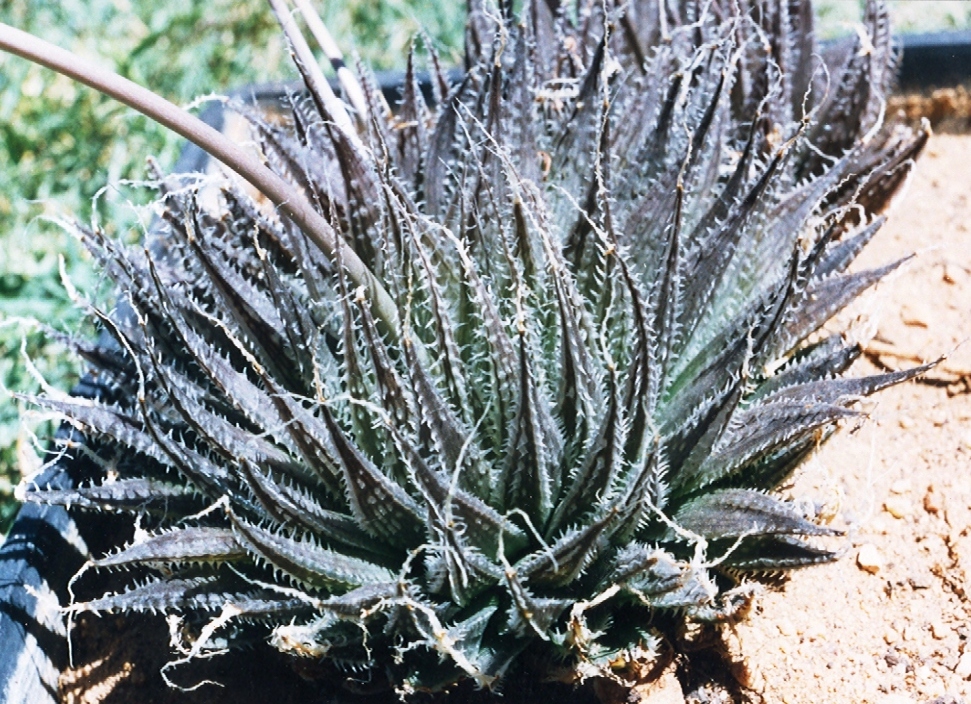
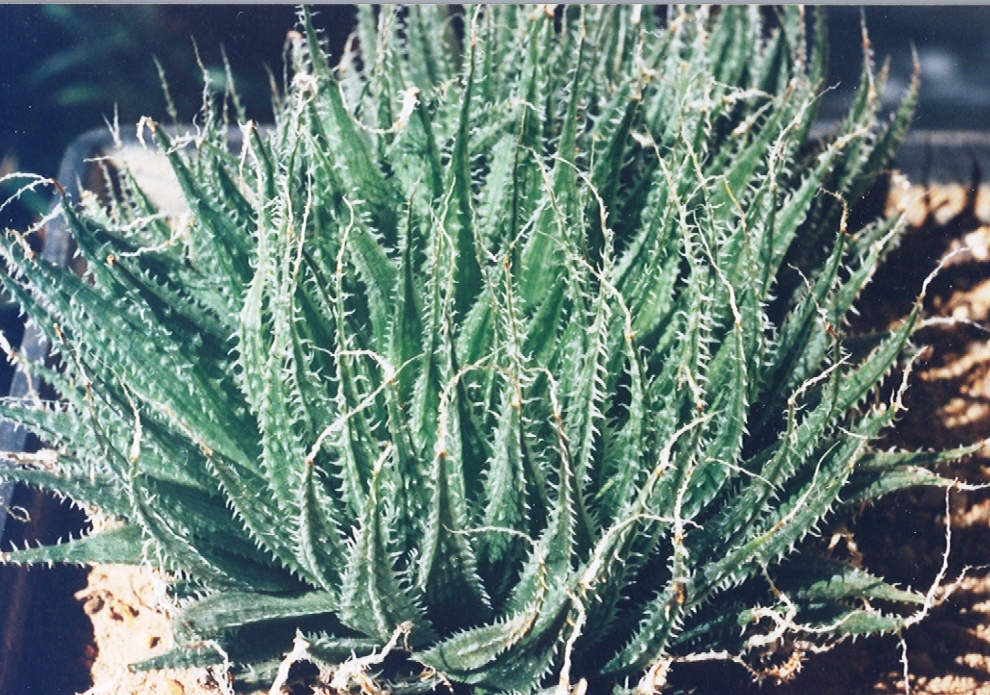
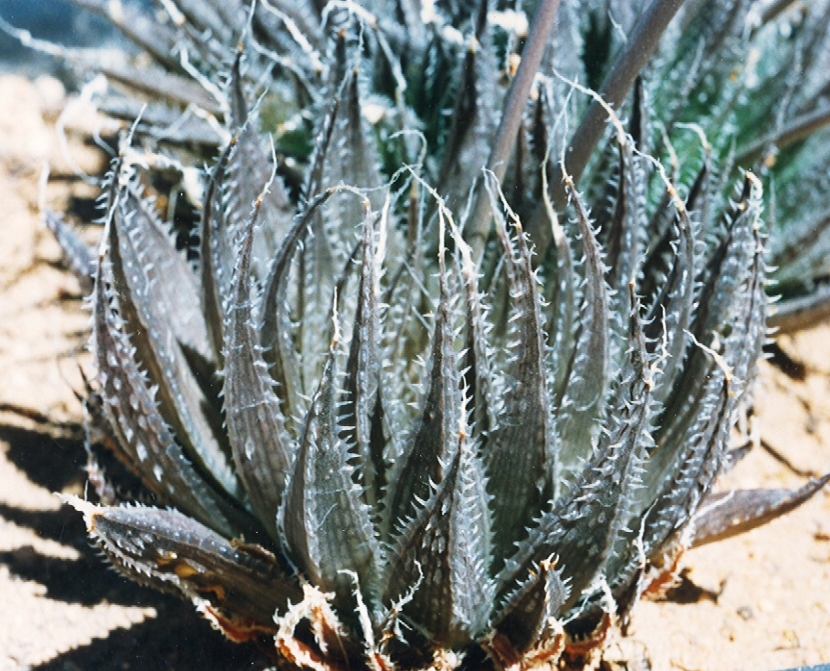
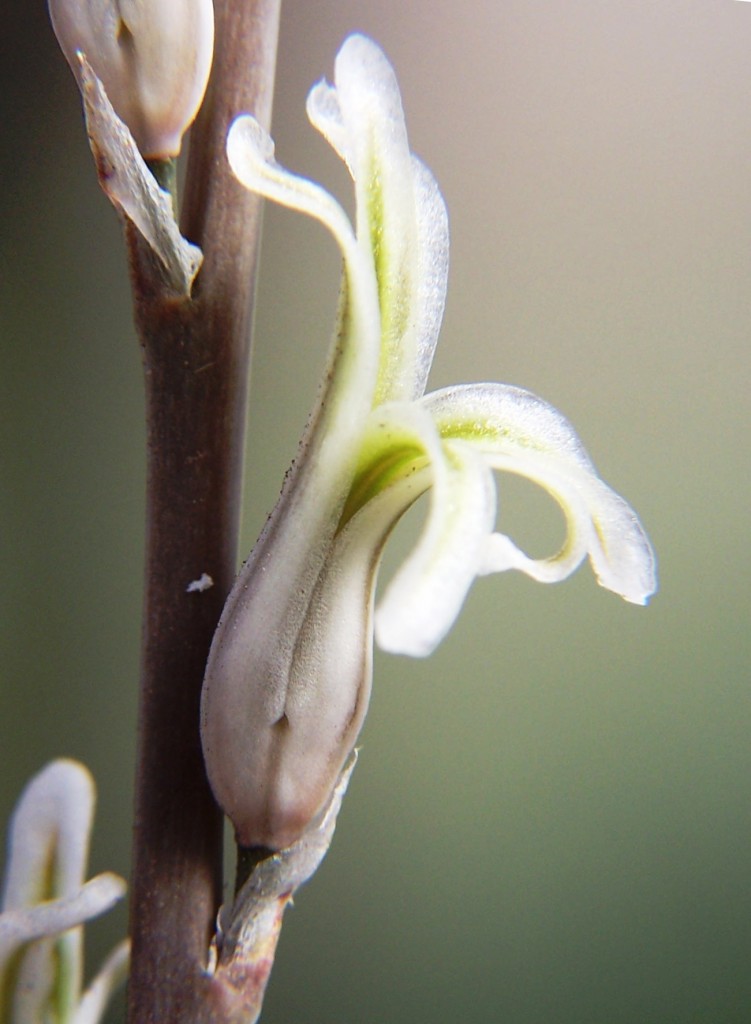
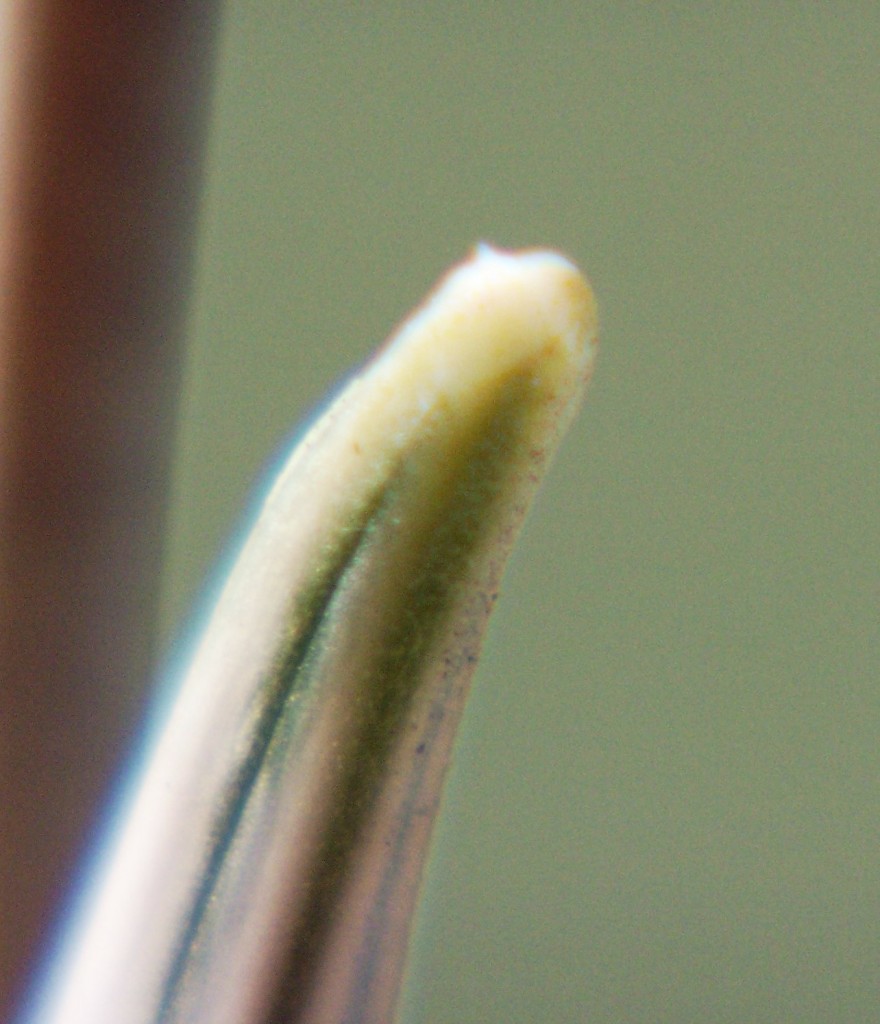
14. MBB6506. East Dwarsrivier. This collection first came to my notice as a plant said to have been collected by Clive McDowell at the Wolfberg Cracks in the Cedarberg. The plant was H. reticulata and hugely improbable. Fortunately I was able to vist the area. The plants are on a steep south facing riverine rockface and are H. nortieri. They are proliferous and the leaves are shorter and broader than is normally the case.
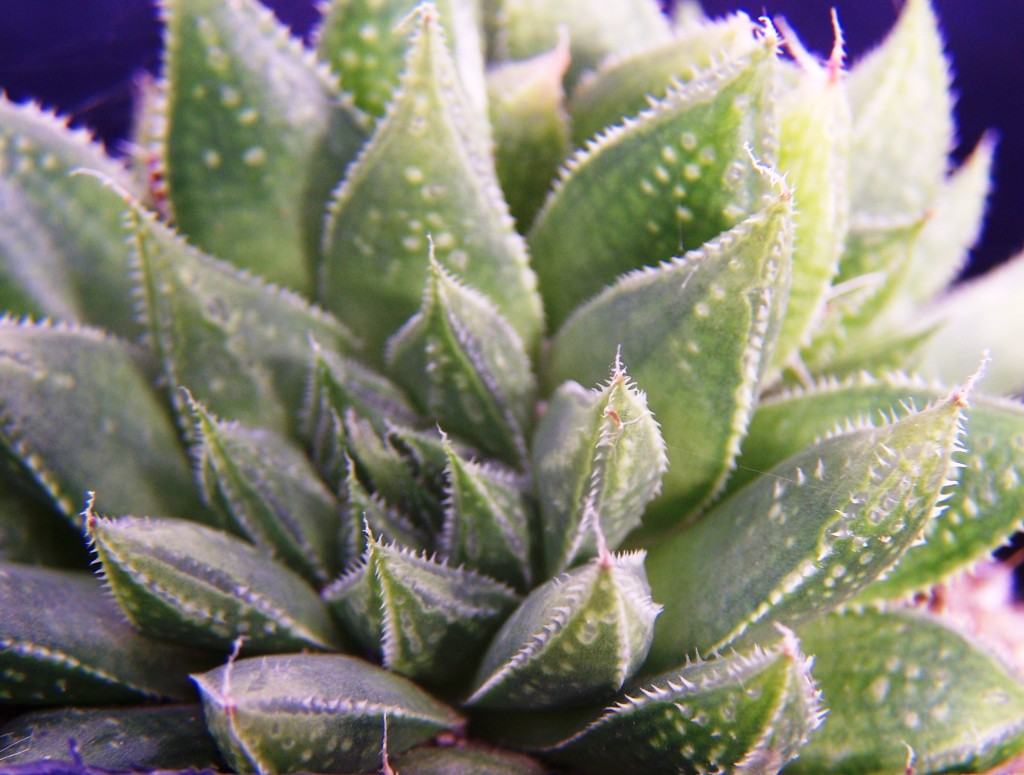
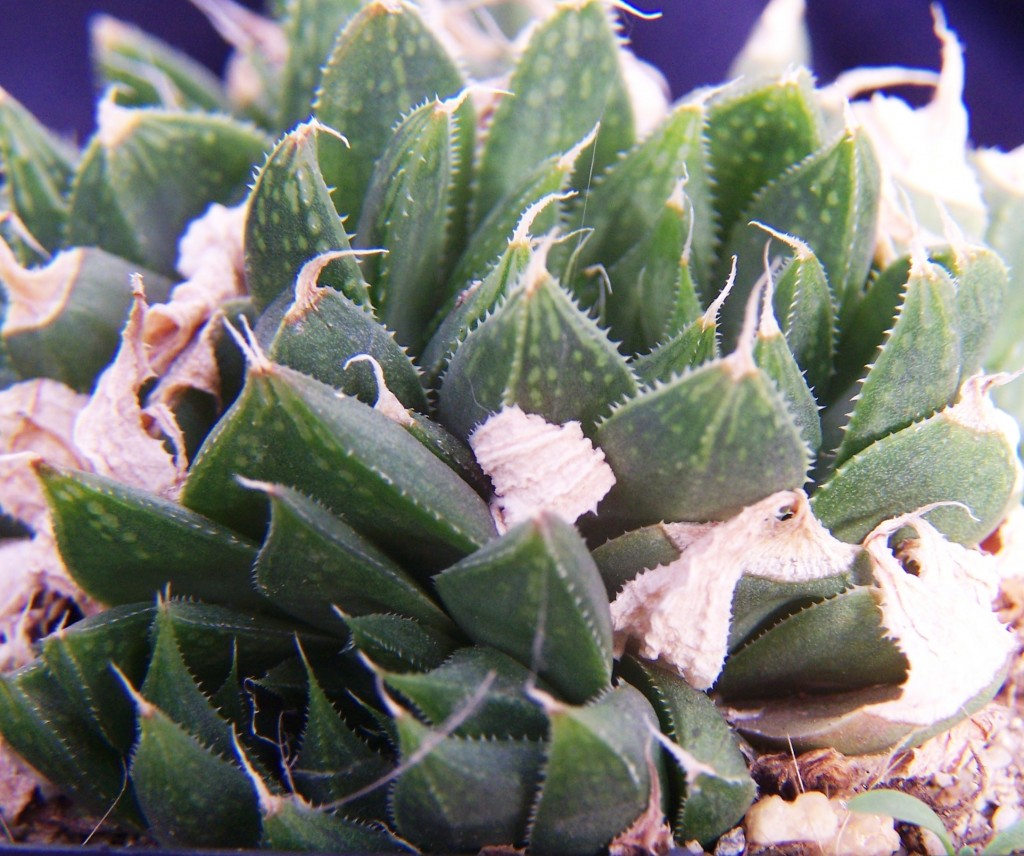
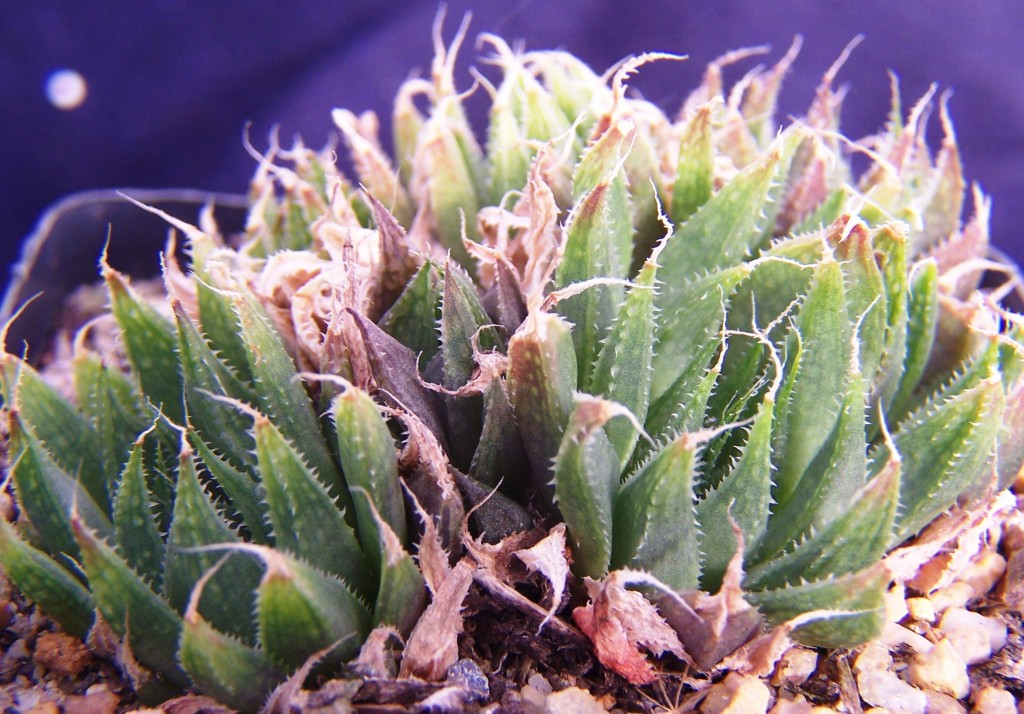


15. ADH2514. Breekkranz. This is a little further south. There is a hiking trail from east of Citrusdal towards Kromrivier. The collector was Adam Harrower and the single plant in cultivation seemed rather robust and thick-leaved. We visited the area and while not reaching the place along the Breekkranz trail indicated by Adam Harrower, we found the plants in the rocks around the Bakkamerfontein ruin. They were abundant and well hidden in rock crevices at about 800m.
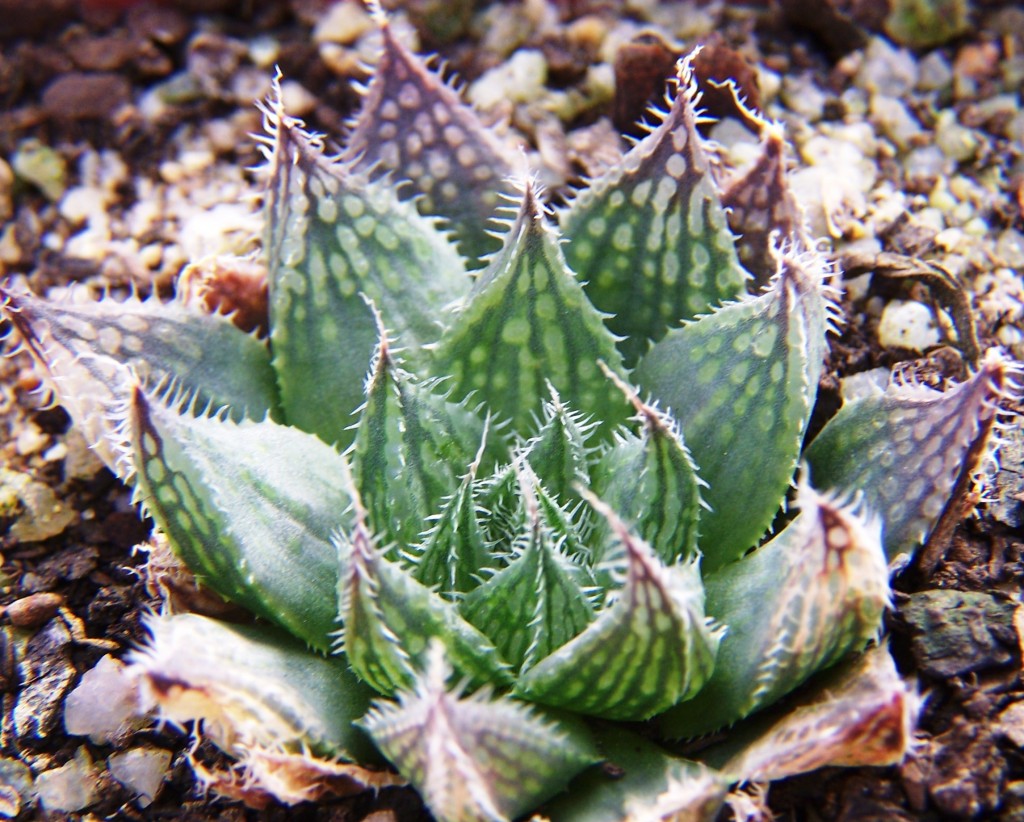
16. MBB7580. Bakkamerfontein. The nortieri plants are just at the small distant upper notch on the skyline.
Blinkberg EvJ19550 is taken from just below and looking about 30km to the Sneeuberg (not Sneeukop) in the distance. Only four other populations were recorded in the scanned landscape! The view is just as impressive southwards where three populations would be covered. It is all Table Mountain sandstone – except the Blinkberg itself. Seen in that context, the pygmaea issue is just a small blob in a much more diverse landscape. Photos take at about 10:00am.
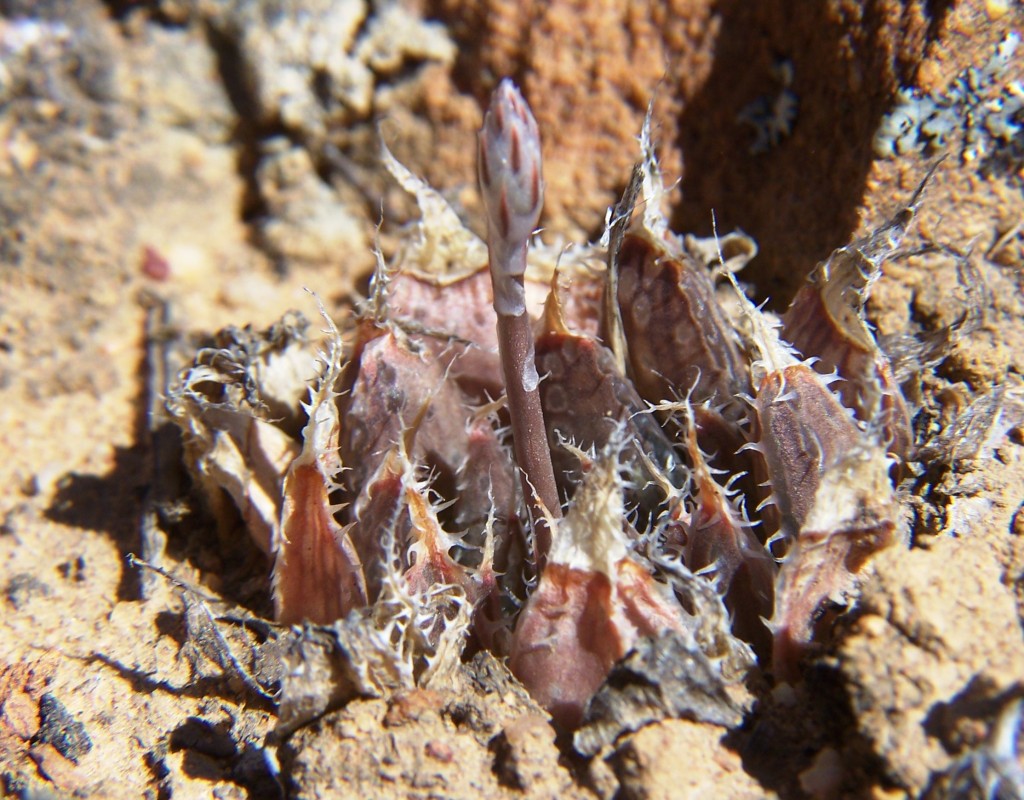
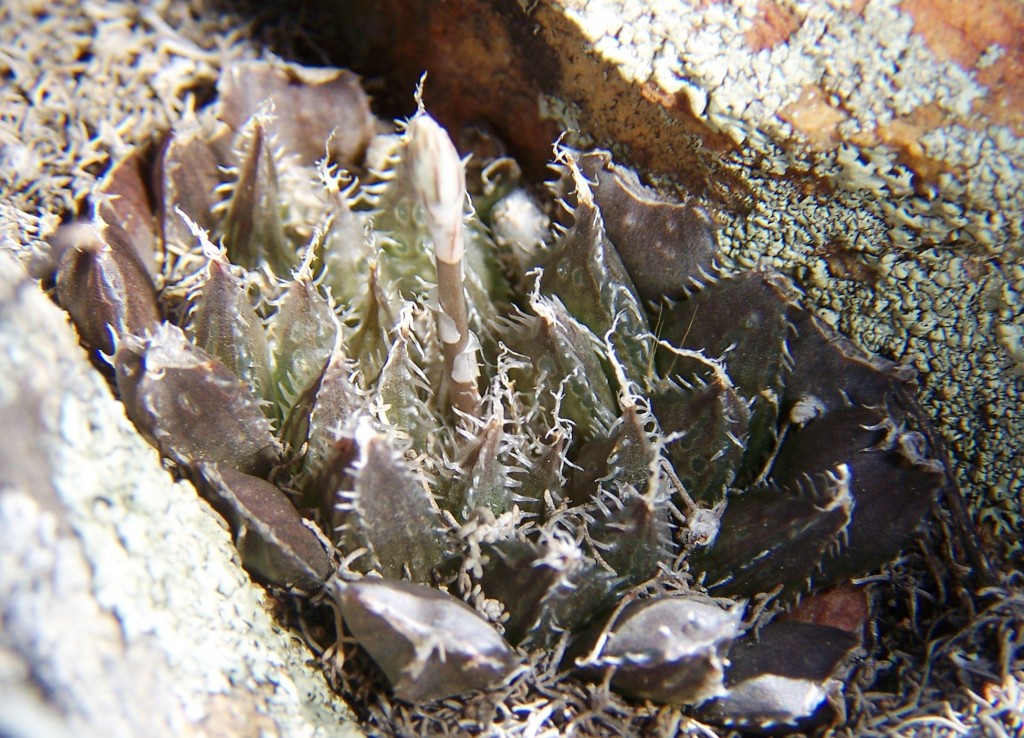
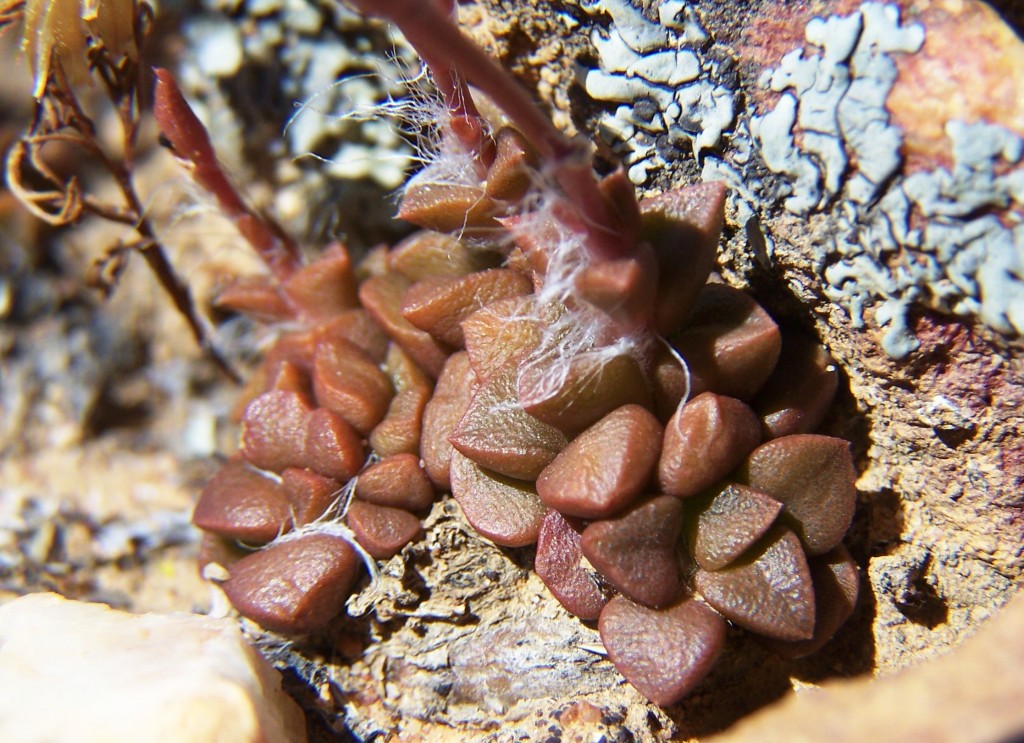
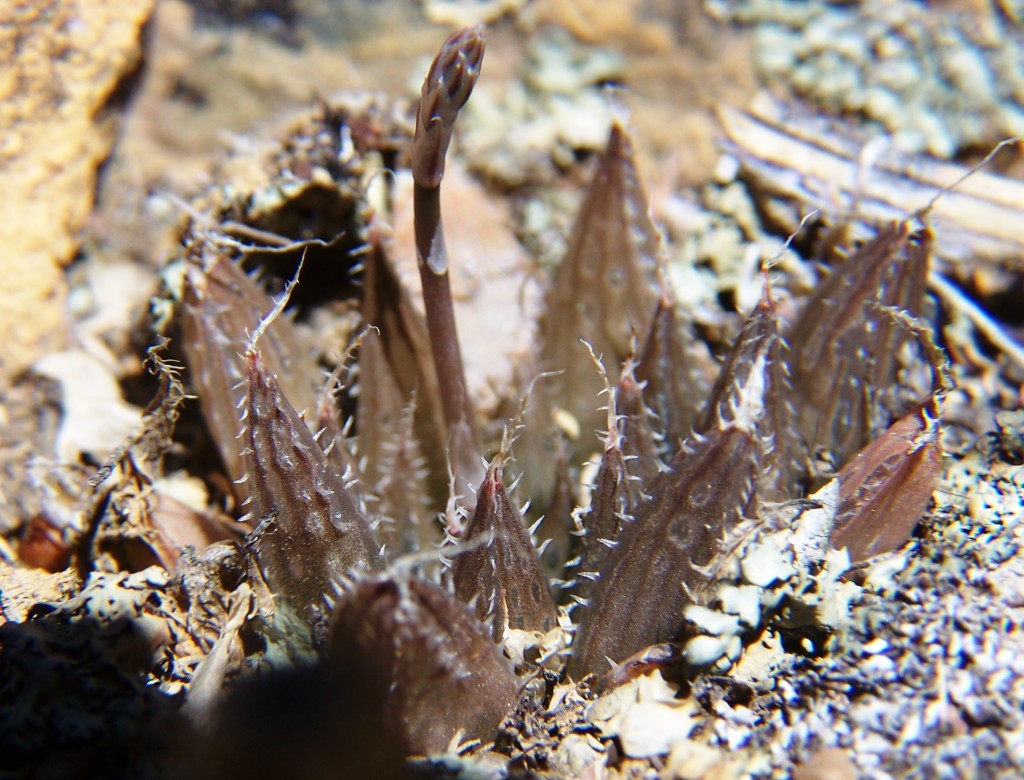
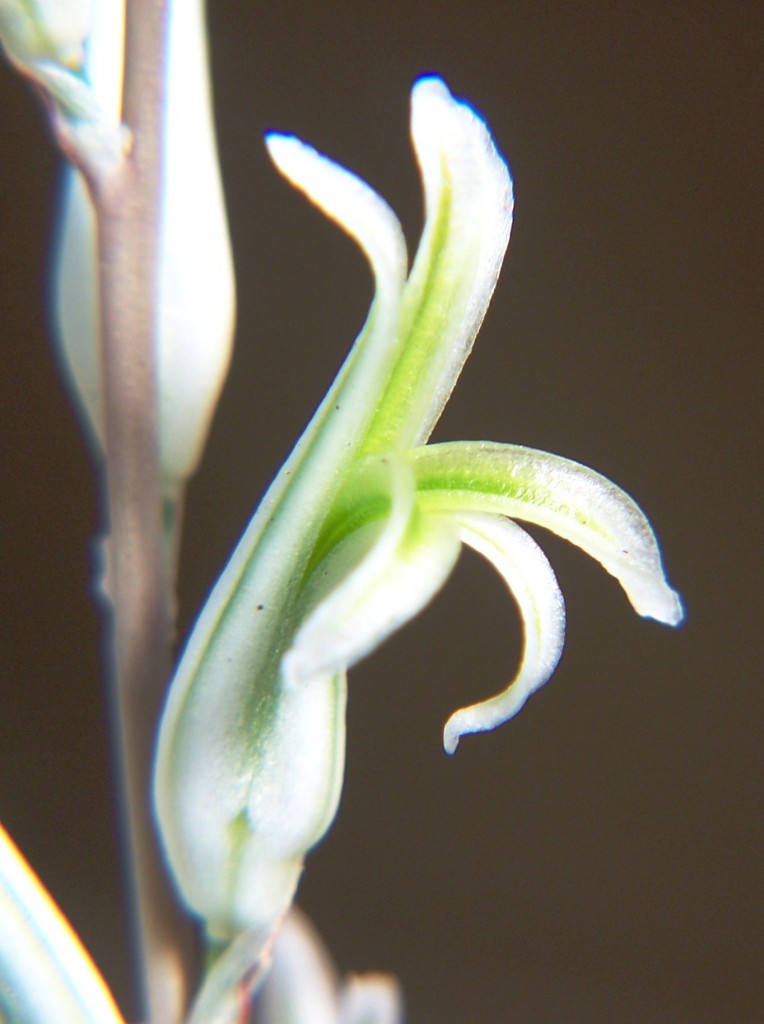
17a. EvJ19550. Blinkberg. Ernst van Jaarsveld has been very helpful in recording interesting populations from inaccessible places. The plant he showed me was also very robust and similar to Adam Harrower’s Beekkranz specimen and I felt it was necessary to visit the site and the plants in habitat.
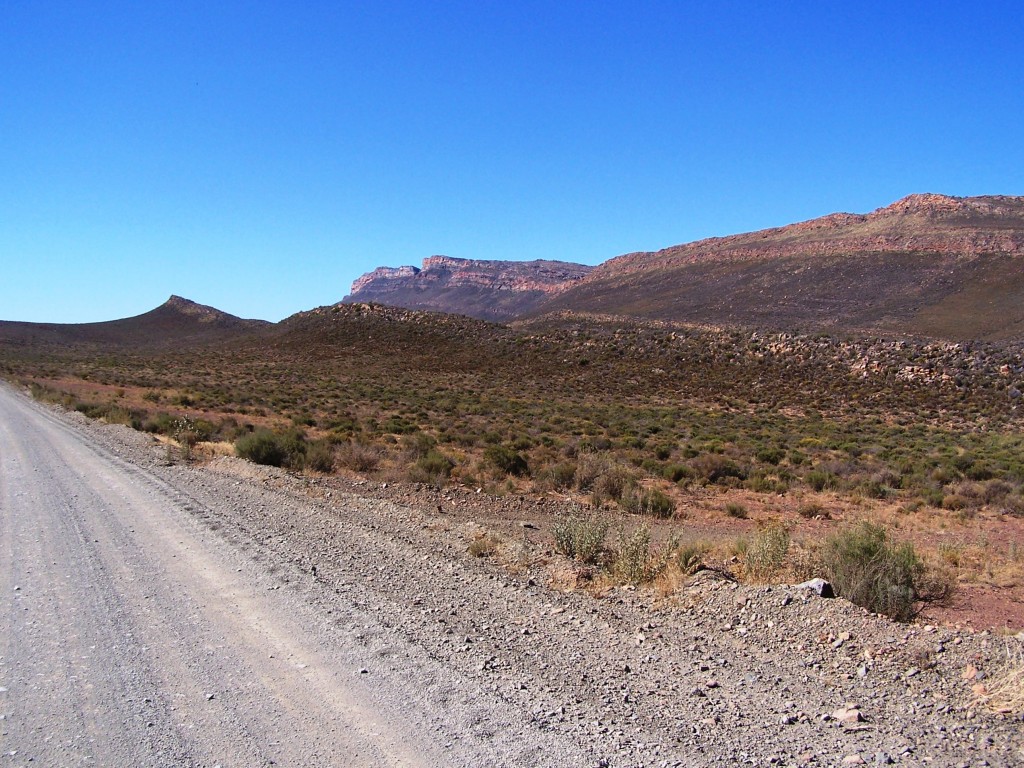

The locality is nearly 30km southeast of Kromriver and moving out of the Cedarberg into a mountaineous area refrred to as the Swartruggens. The geology of the area is fascinating. The north/south road between ceres and Wupperthal runs along the intersection of table Mountain Sandstone to the west and the younger Bokkeveld Shale to the east. The layered rocks is tilted up in the west and down in the east . Because there are harder quartzitic bands in the Bokkeveld formation, the terrain is stepped and one climbs a series on near switchbacks to get to the steep upper more quartzitic Witteberg sandstone which caps the mountain. The Bokkevelf shale here is not rich in succulents and the Haworthia was in a lower band of Dry Mountain Renosterveld at about 850m. The plants were small, well hidden under grass and small bushes and unlike the specimen in cultivation. Again it is impossible to gain an overview of the variability, but I photographed three specimens to show that the leaves can vary from spotted with the translucent dots typical of H. nortieri, or none. The plants here are non-proliferous. The landscape scene among the pictures is a view towards the Central Cedarberg and the pointed peak in the middle distance is Cedarberg Sneeuberg at 2027m. It is equally impressive looking south. It is a rockbound landscape which is difficult to move through and it would require a most remarkable effort to get a better idea of the occurrence and distribution of the plants in that whole area. As it is, we have no records for a huge area extending from Blinkberg in the south to the Pakhuis pass in the northwest, and to the Ouberg Pass in the east near Sutherland. Mrs. J. Marais of Mount Ceder Resort (Blinkberg) reports the plants at a place east of Matjesrivier to the north. H. arachnoidea is not known in the area at all but it does occur as a small densely white spinose form at the SkitteryKloof to the southeast. Curiously the only other record of Haworthia for this area is of a plant like H. venosa var. granulata collected by Elsie Esterhuyzen on top of the Skurweberg Sneekop to the south of Blinkberg. I did climb that peak in 1973 in the hopes of finding the plant, but was unsuccessful.
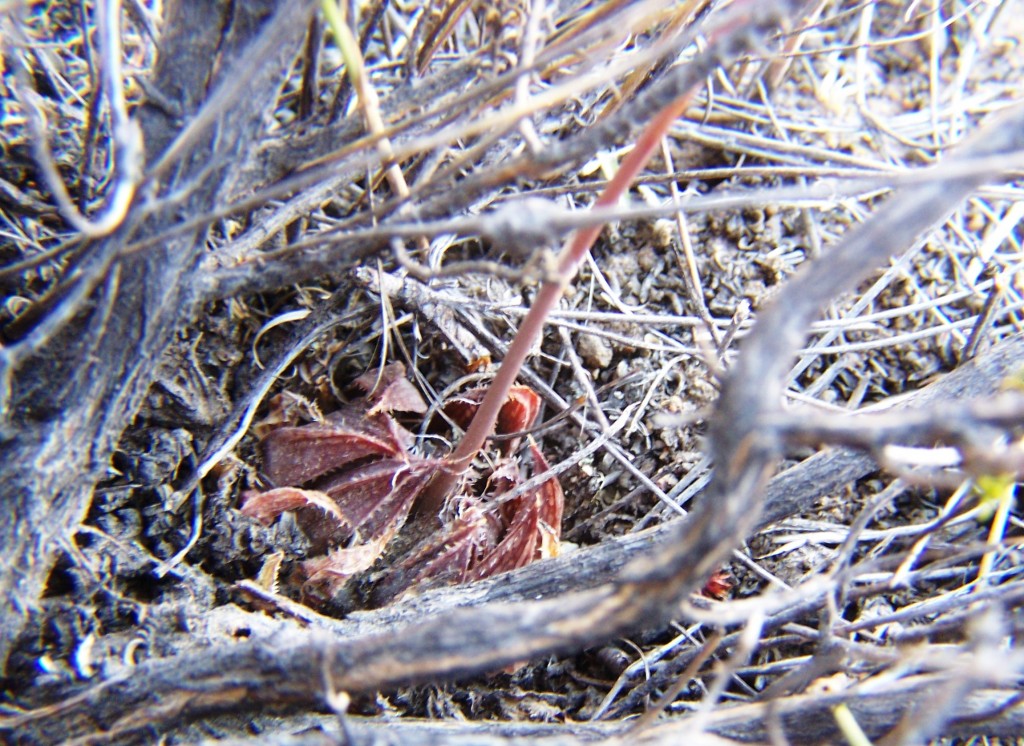

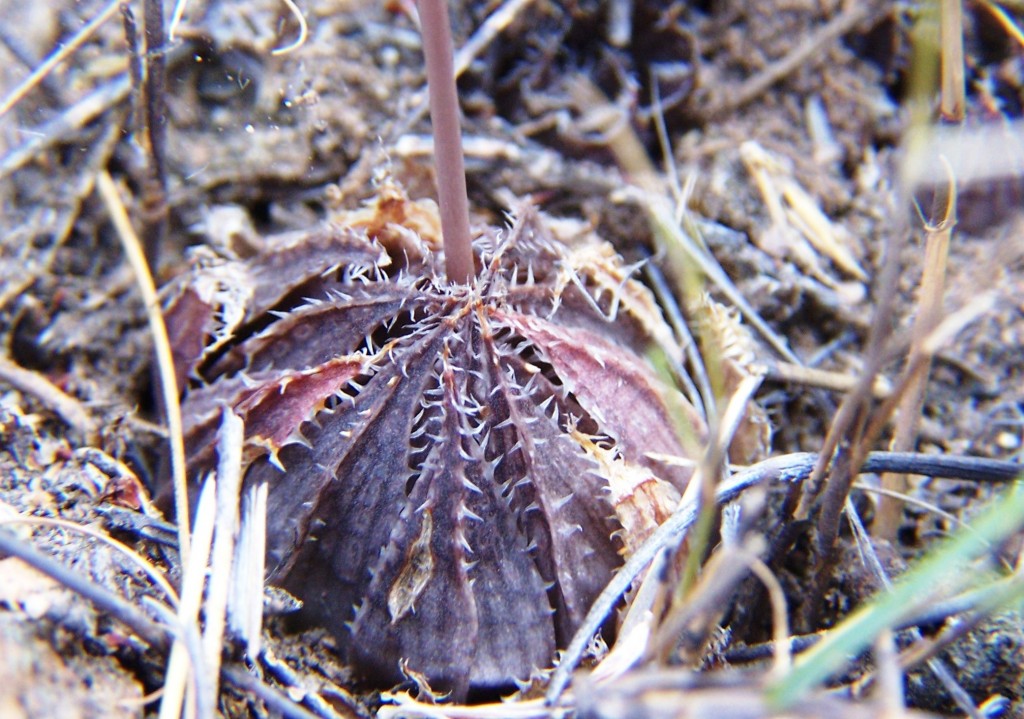
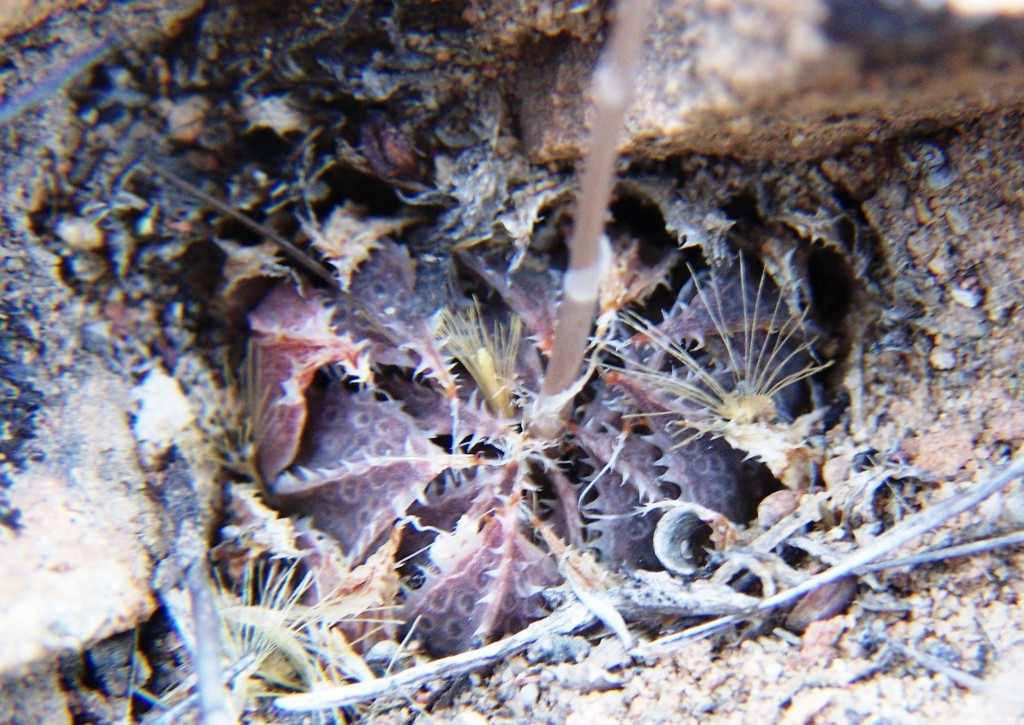
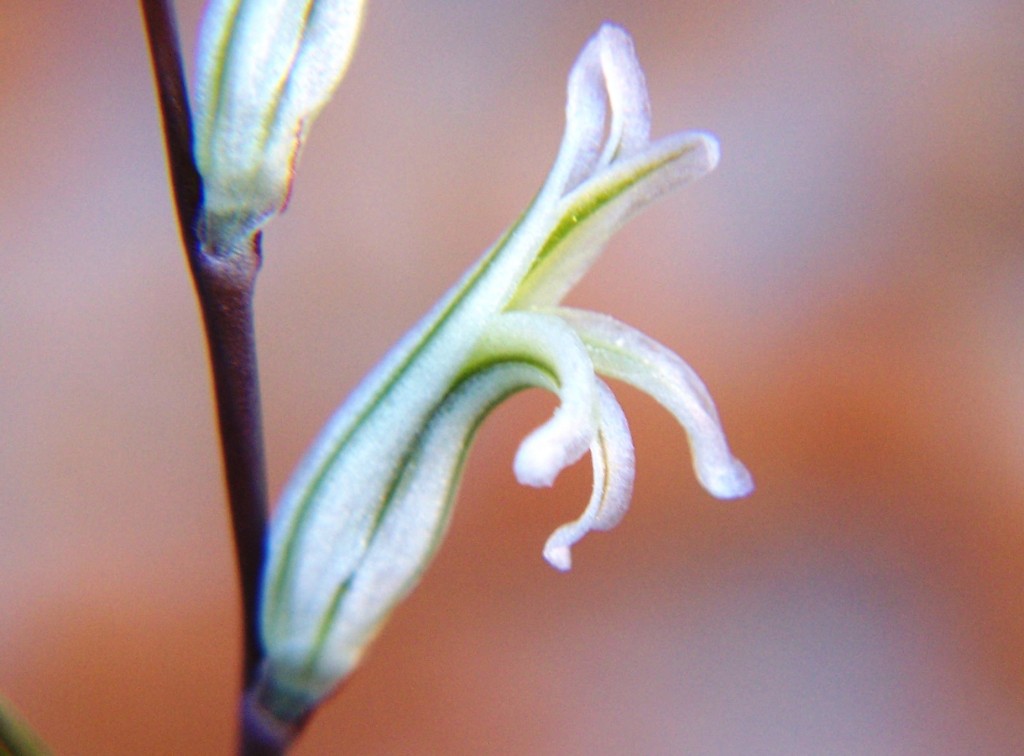


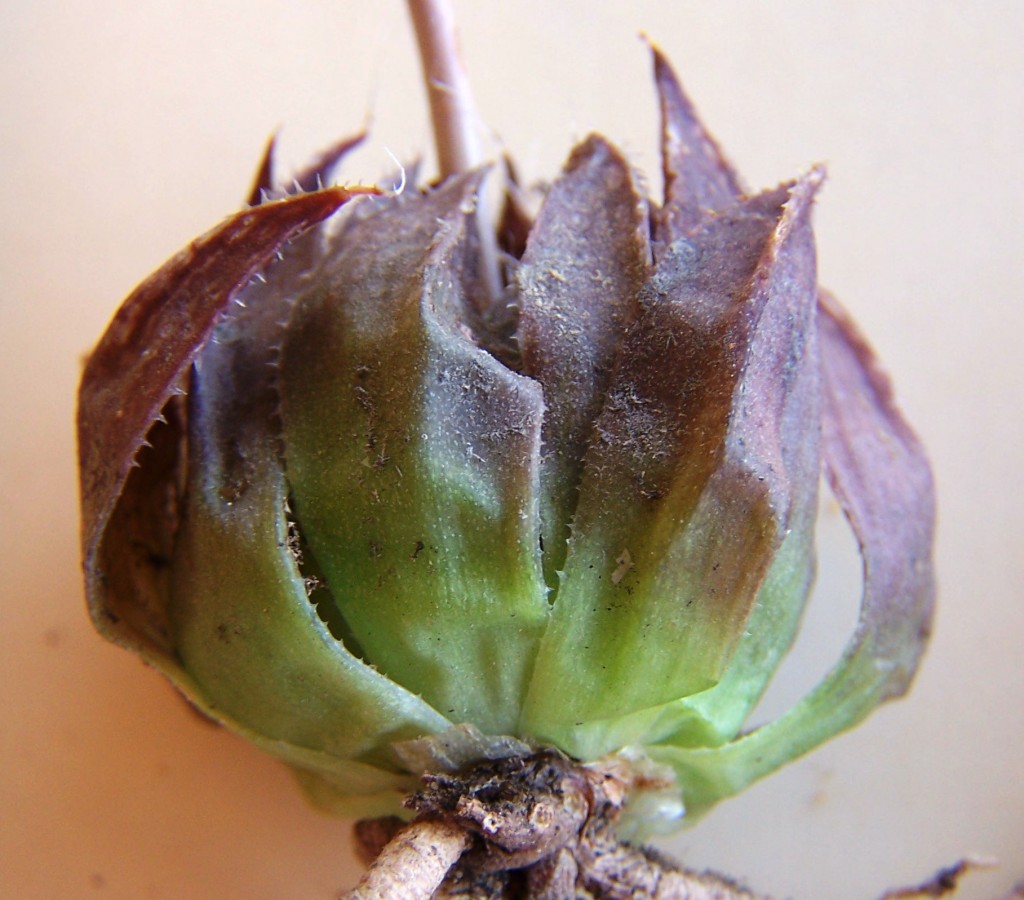
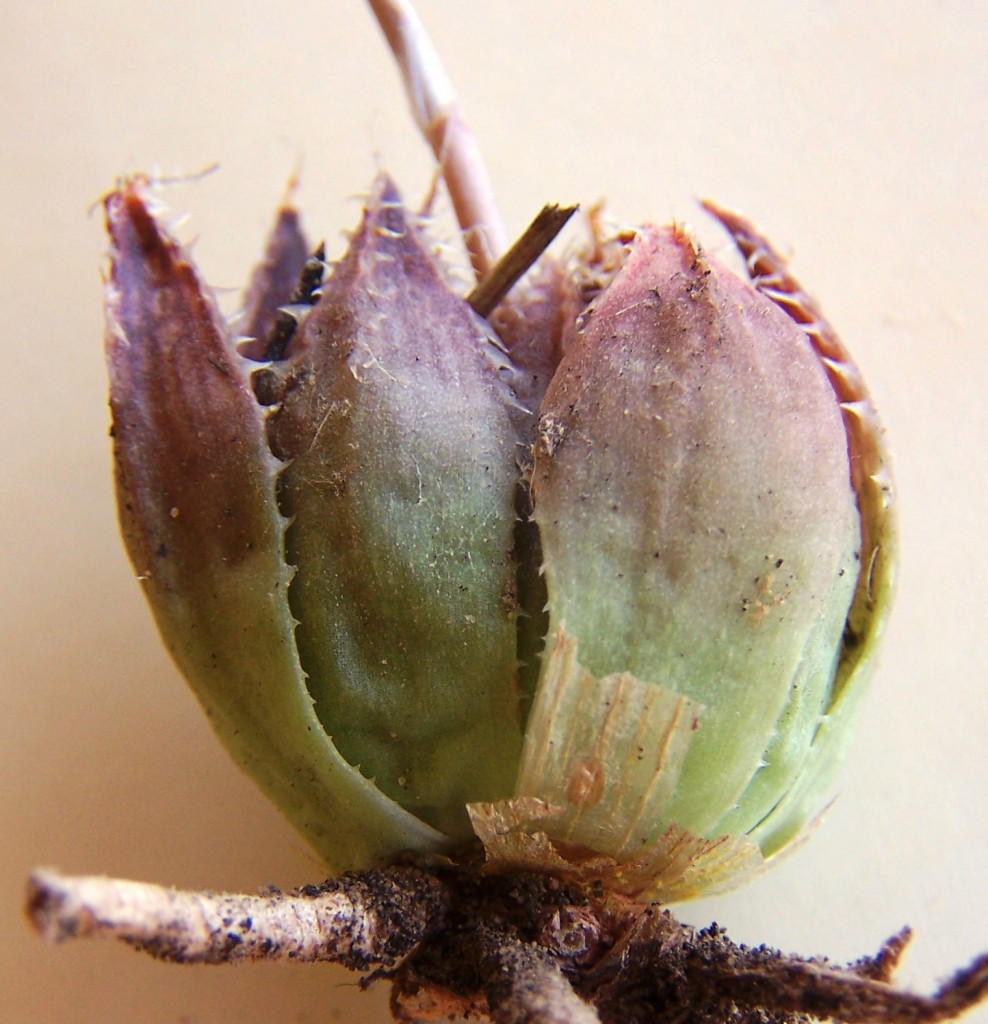
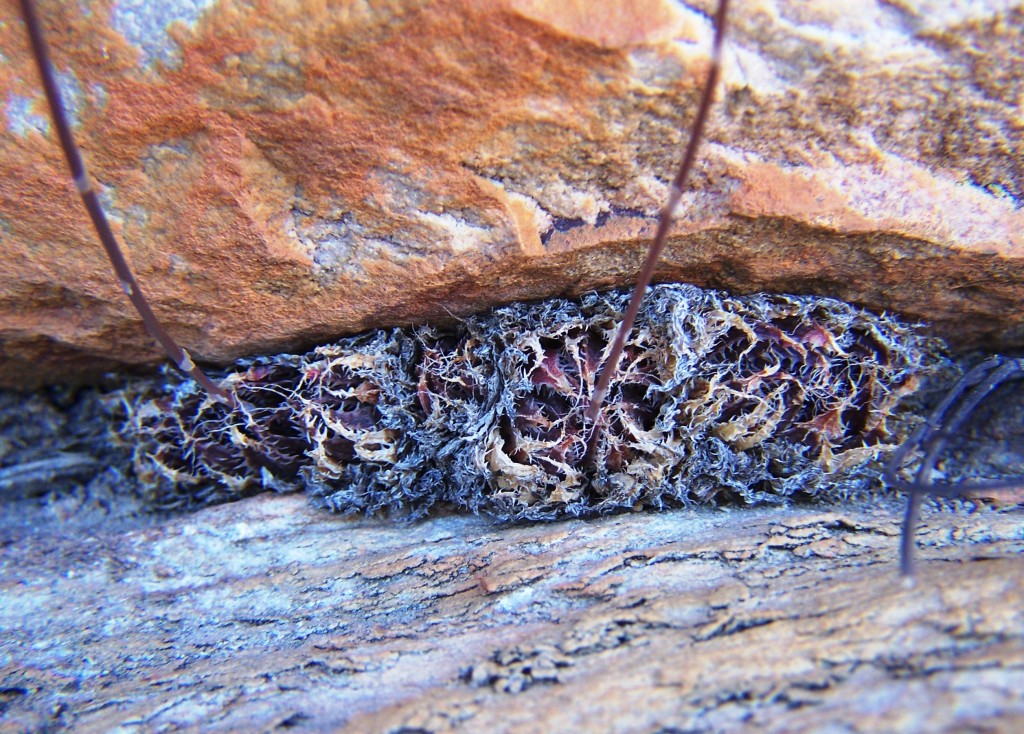
17b. MBB7597 & 7599. Kunje, SE Citrusdal. The German team Muller-Doblies showed me a plant from this area. There are other herbarium records from the Waboomsberg further north, but also from the Elandskloof slightly to the west and from the Heksberg to the near south west. The plants are abundant on flat rock sheets where there are small pockets of soil and sparse vegetation. This gets extremely dry in summer while in winter it can be very wet. The plants can be proliferous and there were some very dense localized aggregations of individuals. Size varied quite considerably from small exposed specimens 30mm in diameter, to shade protected plants to 100mm diameter. Flowering seemed to have occurred in late November to December.
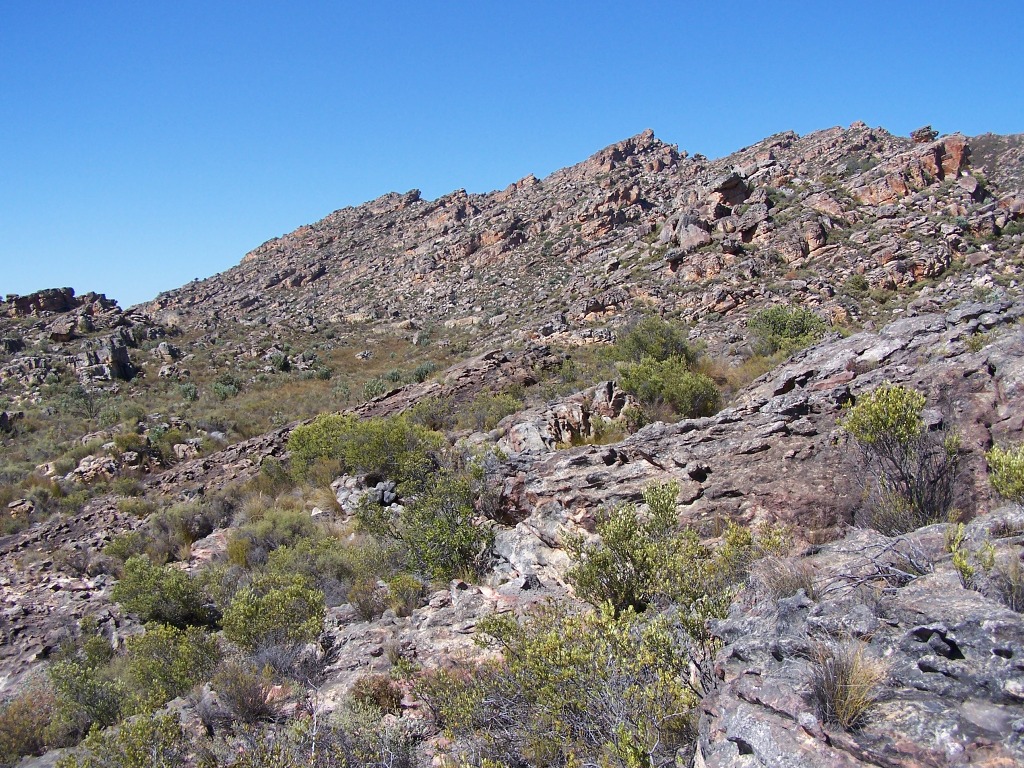
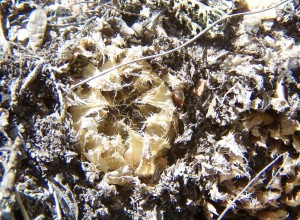


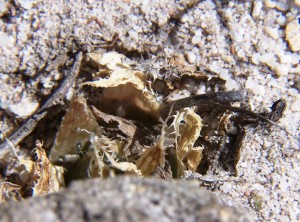

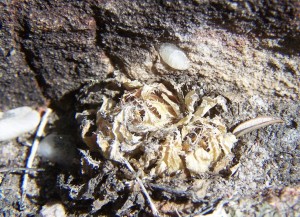
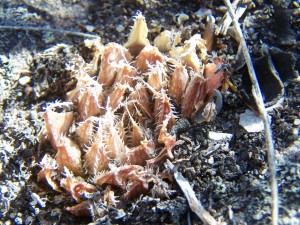

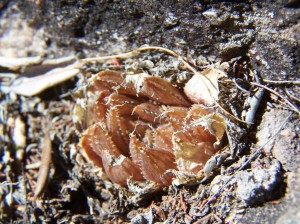
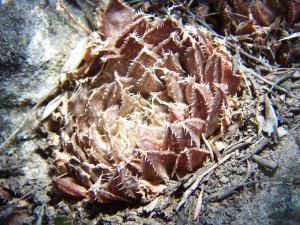

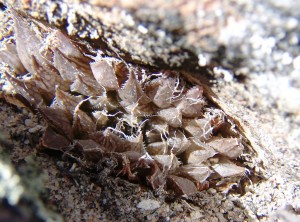

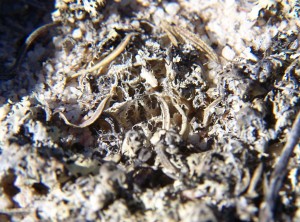

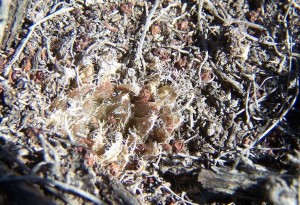
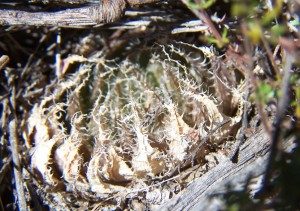

18. MBB6158 Skurweberg, Sneeukop. We found these plants in grass in cracks in massive sandstone slabs at the foot of the higher peaks. We also saw them in similar but dryer conditions in the Witteberg formation east of the Katbakkies Pass and west of Skittery Kloof. The whole area seems to provide endless suitable looking habitat and it is surprising that there are not more records, except that people who move around these mountaineous areas are seldom focused on small succulents.
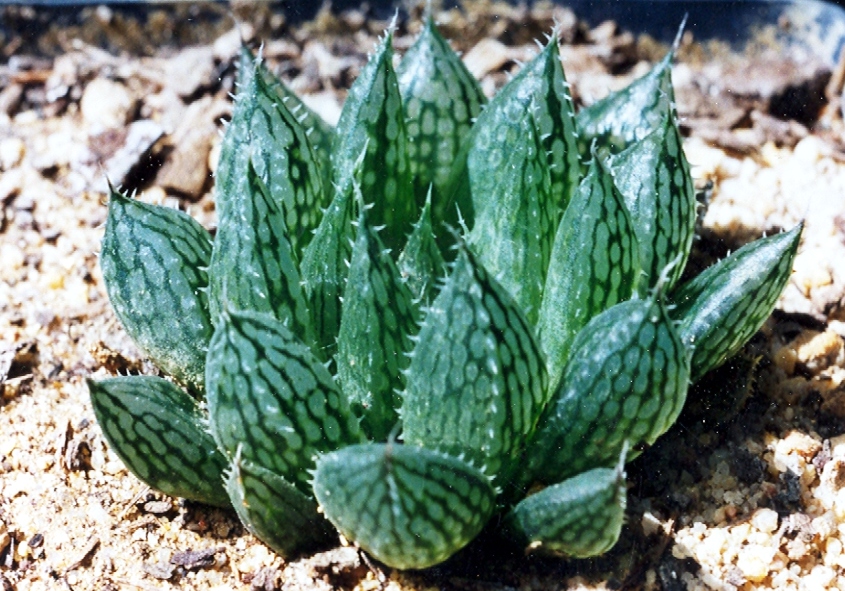
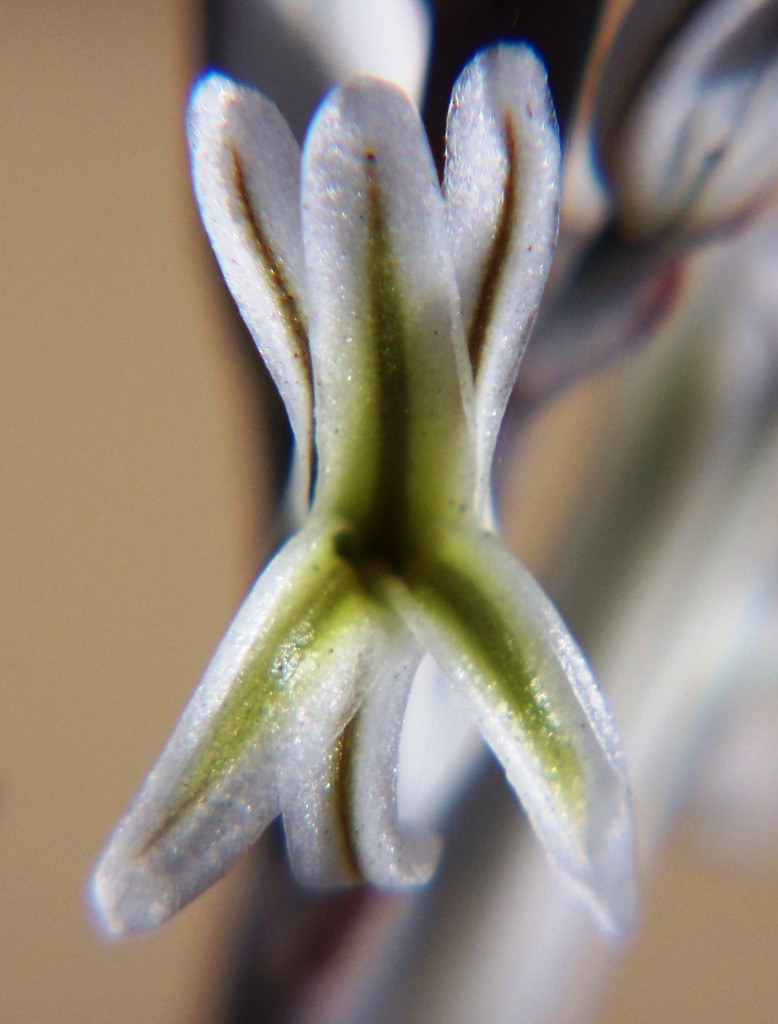

19. JDV96-56. EA801. Nevertheless, it is really strange that we have to move nearly 30km south to OpdieBerg to where Etwin Aslander found H. nortieri again. Grown by Etwin, the plants were extraordinarily beautiful being highly colourful and well spotted and very reminiscent of the var. globosiflora except again for the flowers. Again the area is very awesomely rugged and even here one wonders what could have motivated Etwin to have even searched there.

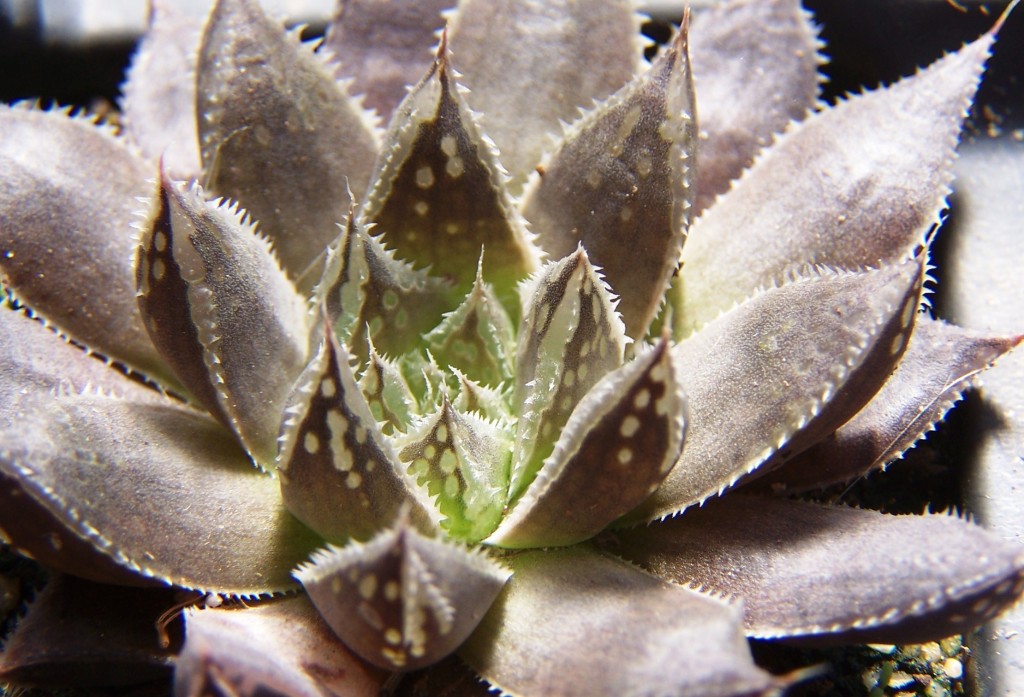

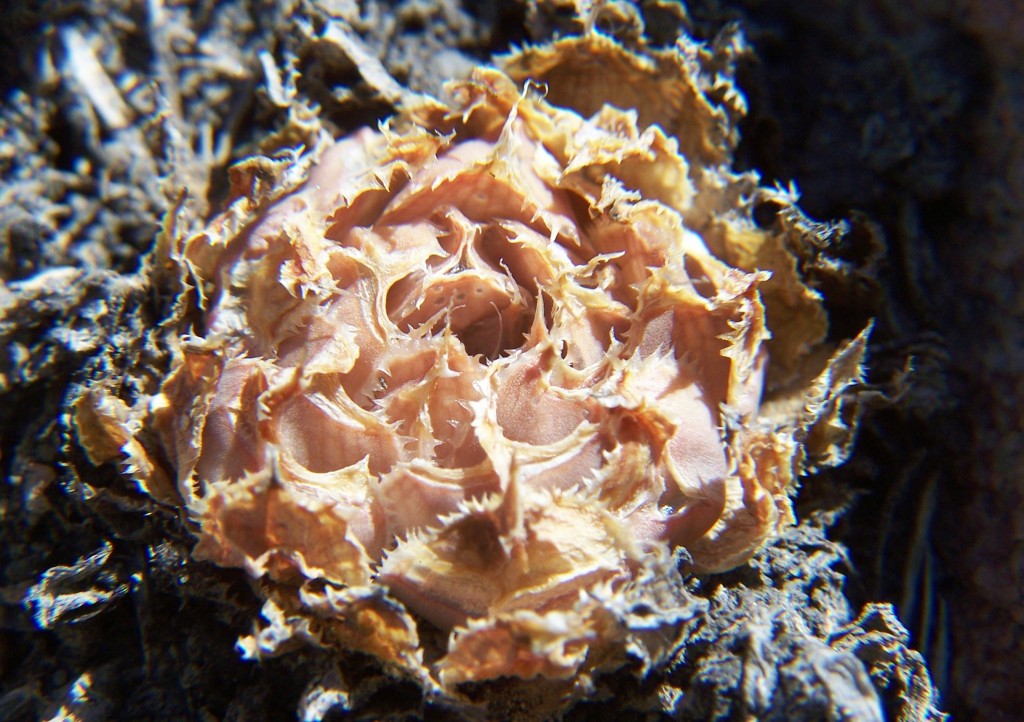
20. MBB6815 Audensberg and 7526 Die Nekkies (bottom left). I include these two collections in the discussion because they reflect the greater problem in Haworthia, which is to establish the relationship of the different species systems. H. maculata is essentially linked to H. herbacea and H. reticulata, in the Worcester vicinity and well south of OpdieBerg. The two collections illustrated here are from two different biogeographic zones on either side of the karoid zone occupied by H. herbacea. They could thus be as genetically distant from one another as they are from that species. The Die nekkies plant has a browner colouration than the Audensberg plants which can have the purplish colouration of H.nortieri. The flower seems convincing in that the Audensberg plant has the typical fish-tail buds of the southern Haworthia.
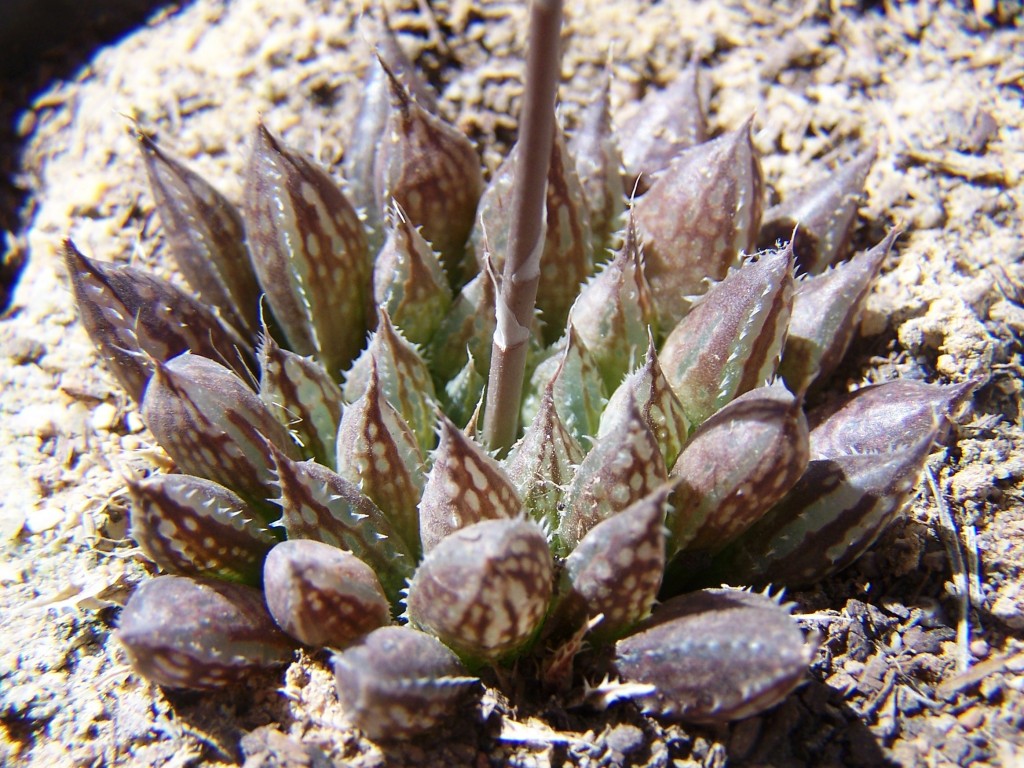
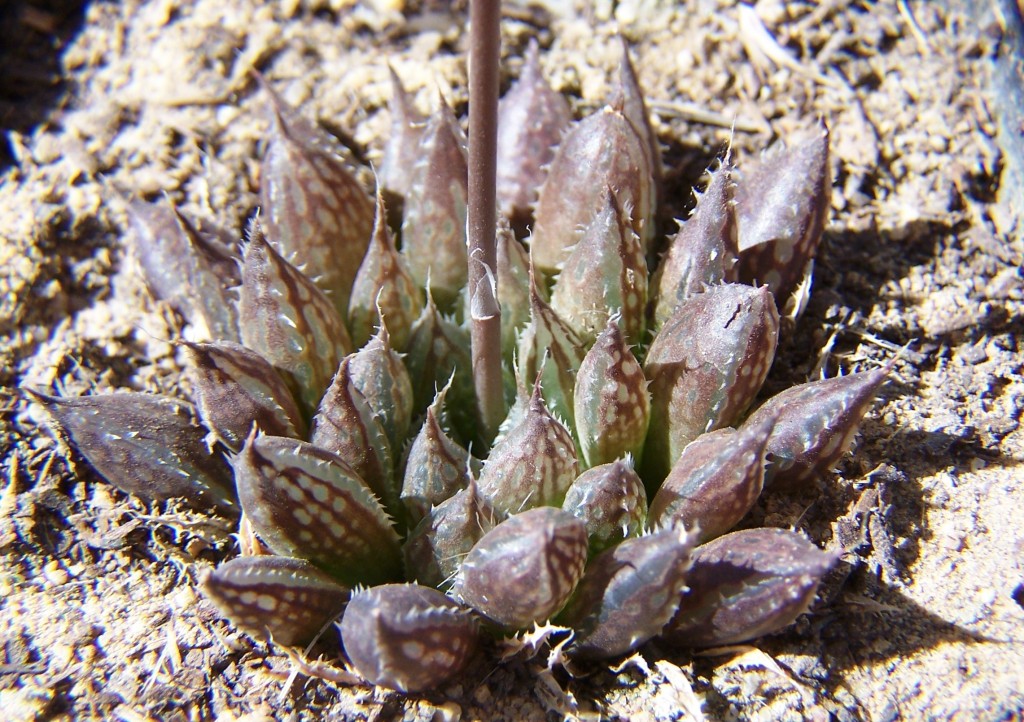
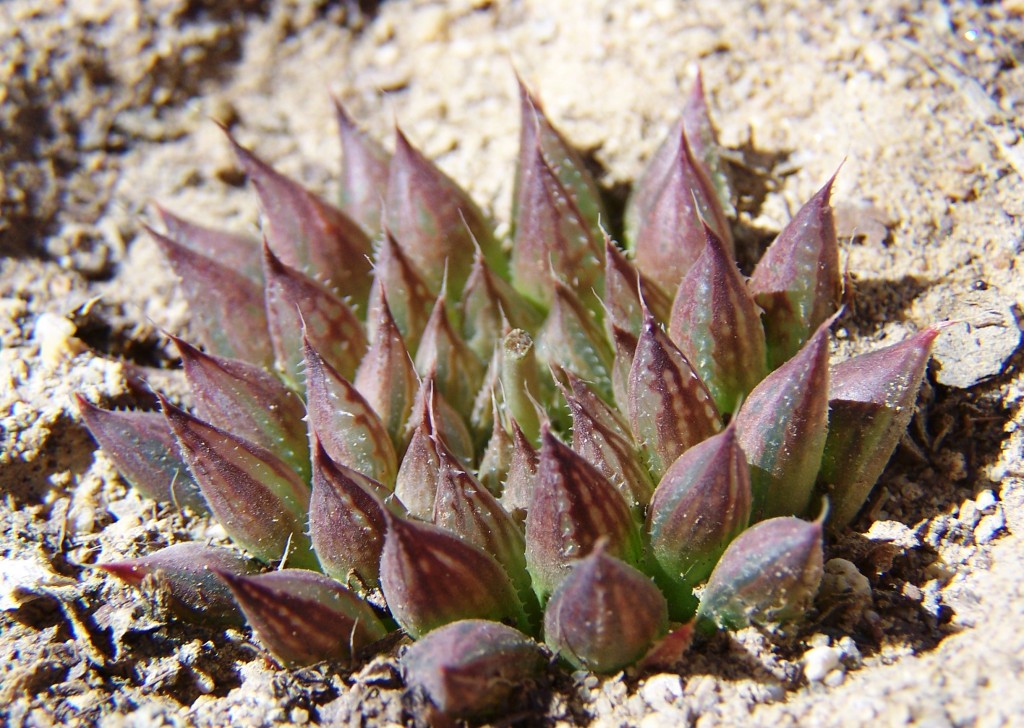
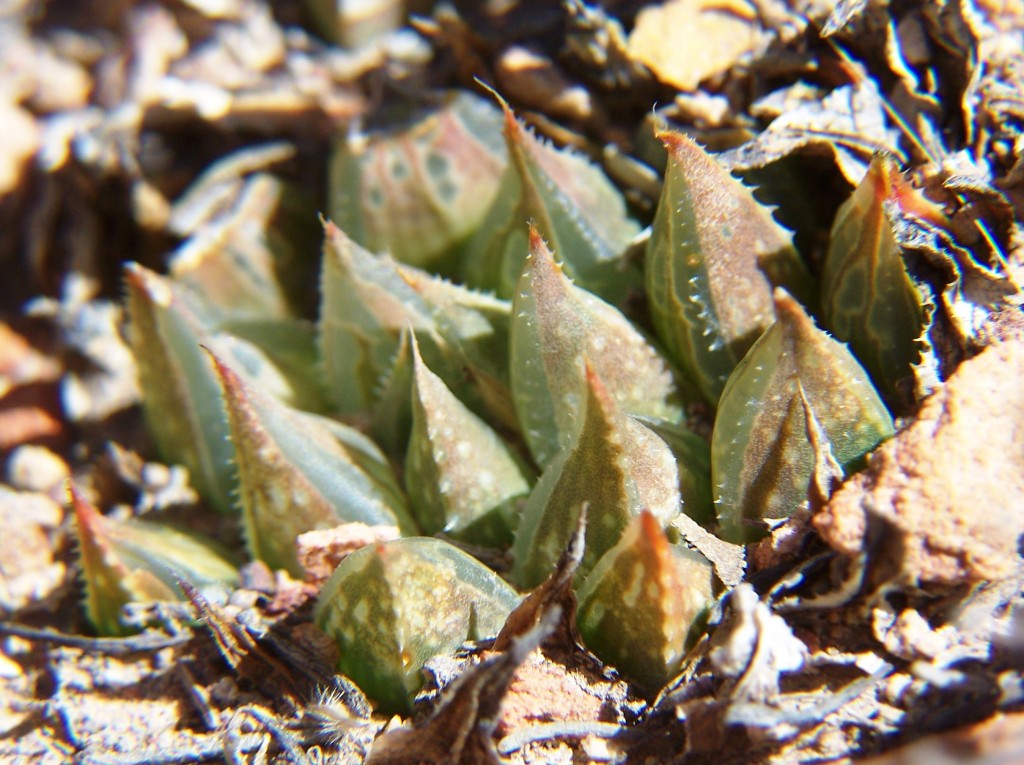
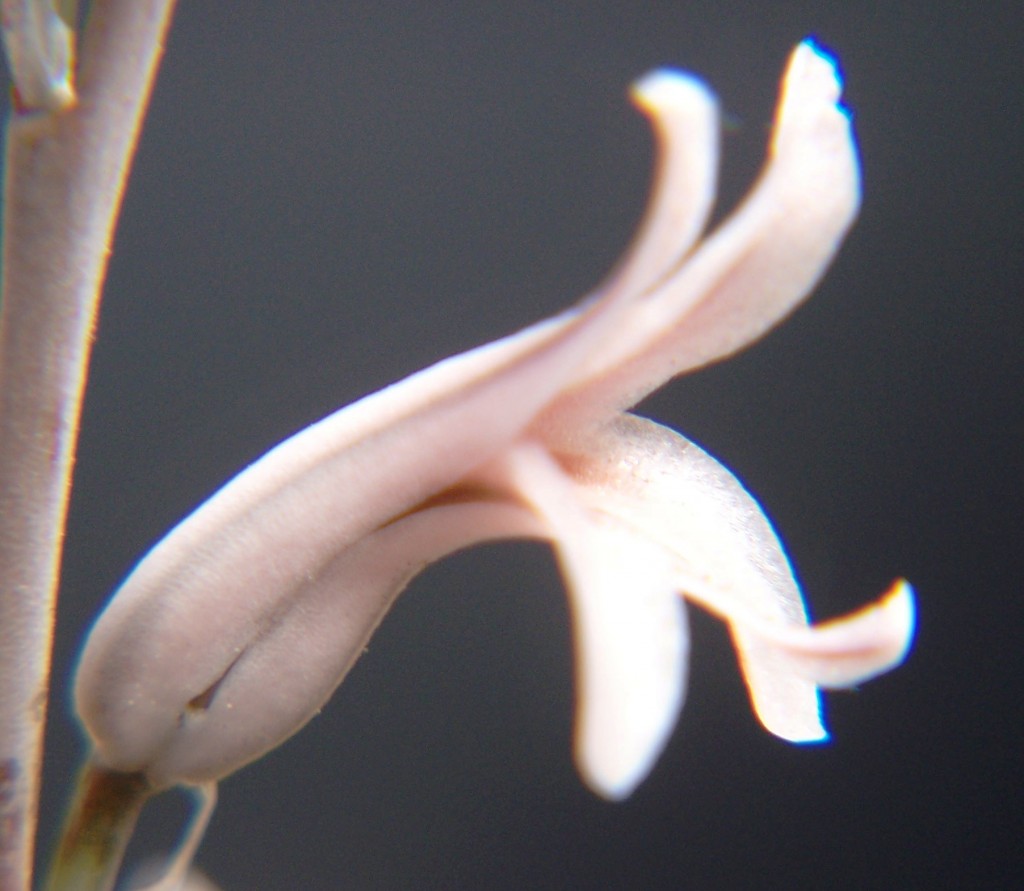

21. EA1508 Hex River Pass. This is again a notable collection in an inauspicious looking area. It is in the eastern leg of the Cape fold-mountains in the eastern end of the Hex River valley. The plants have to be considered in the same light as the previous comment. H. arachnoidea is present to the southwest as a very spotted form which could suggest nortieri-like character as well as confounding the situation with regard to H. marumianai var dimorpha. There are two other questionable populations. One is at Sandhills to the west which is a weakly spinose form of H. arachnoidea and then one in the Rabiesberg to the southwest which suggests an affinity with H. herbacea. What this exposes is the paucity of information. There simply are not enough known populations to help any analysis of either the morphology (as non-decisive as this could be) or the biogeography of the species, which is the main ground on which I base my classification. The nearest known H. nortieri population is that at OpdieBerg in the west, Sneeuberg in the north and then var. pehlemanniae at Matjesfontein in the east.
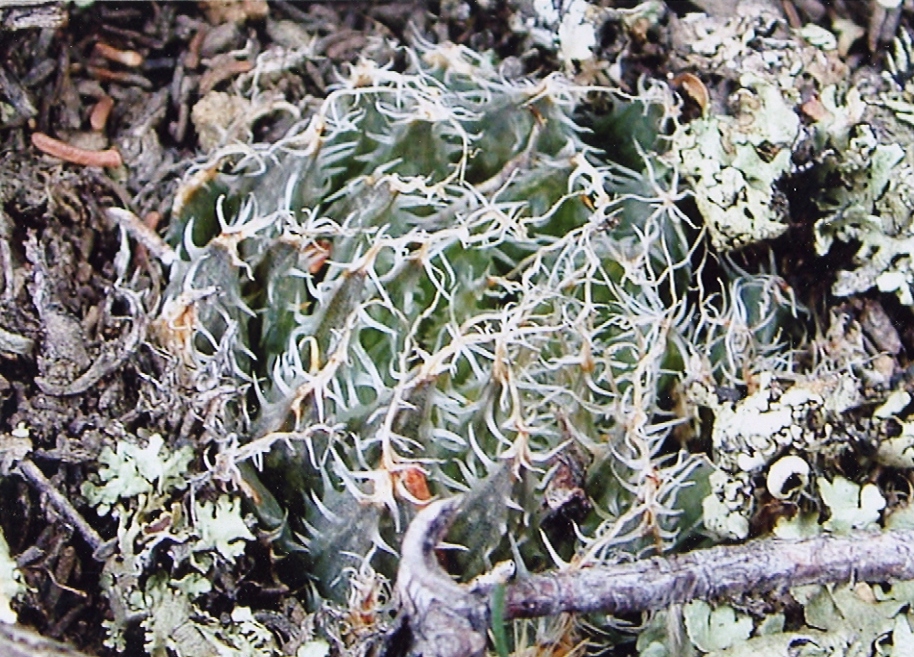

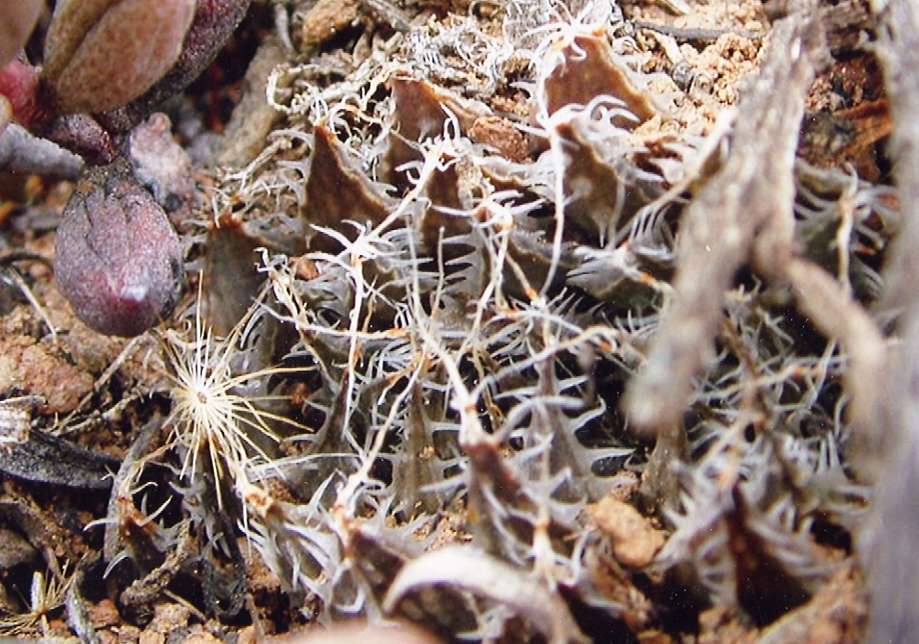

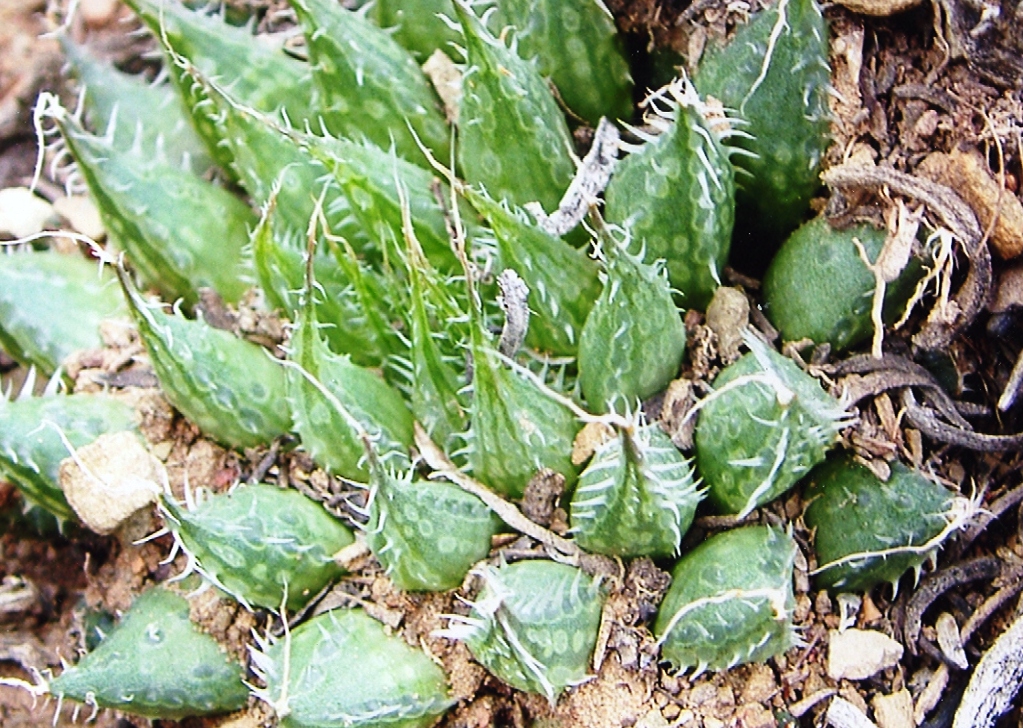
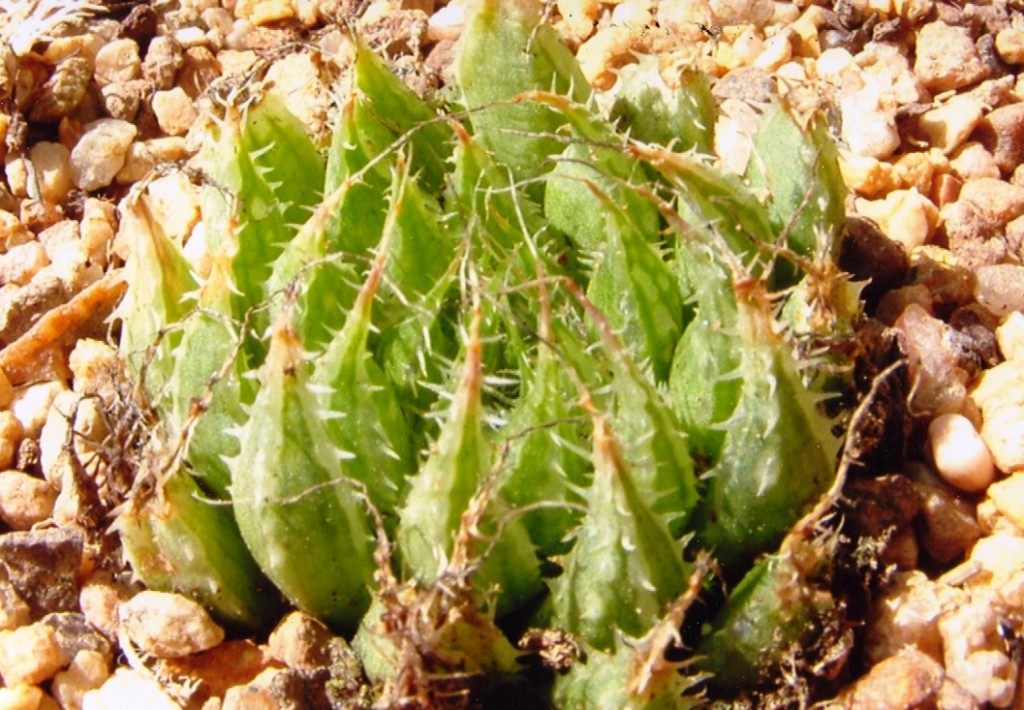

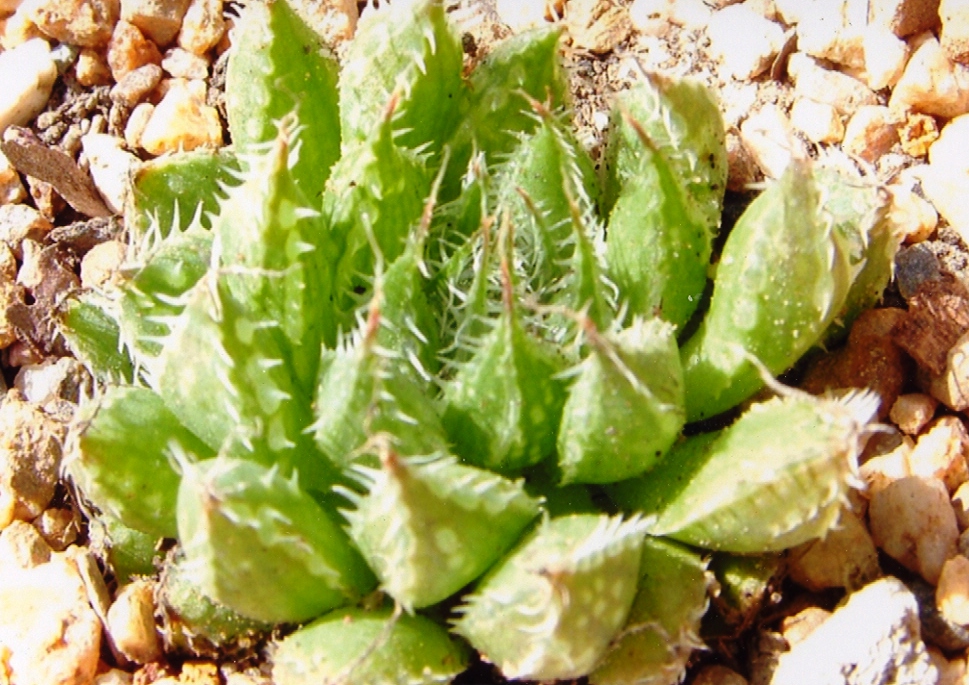

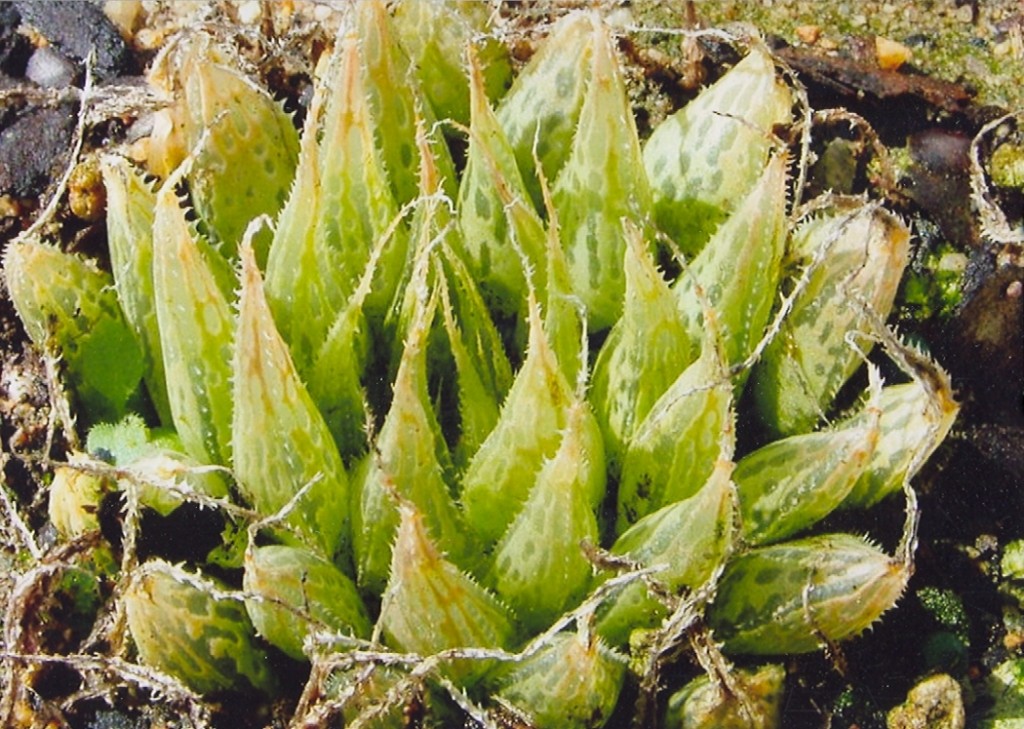
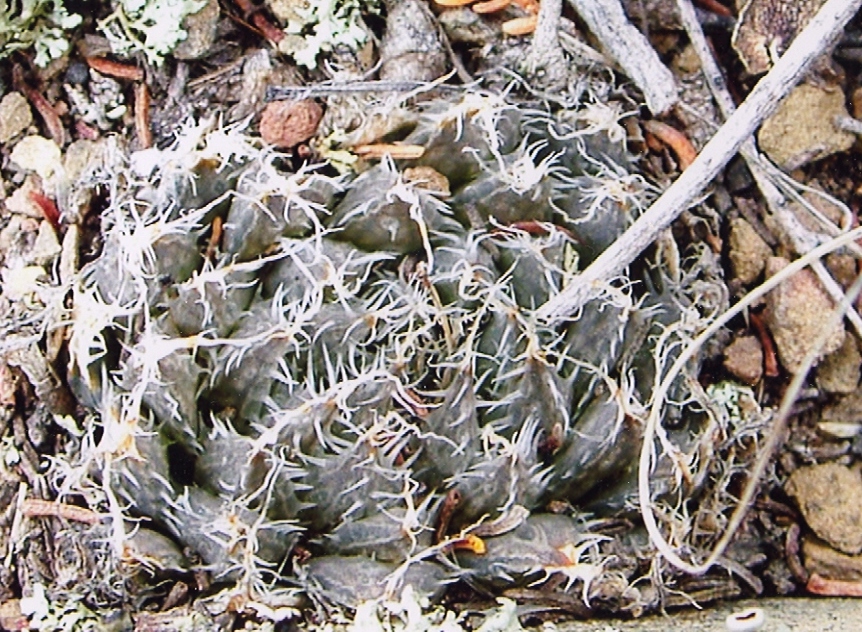
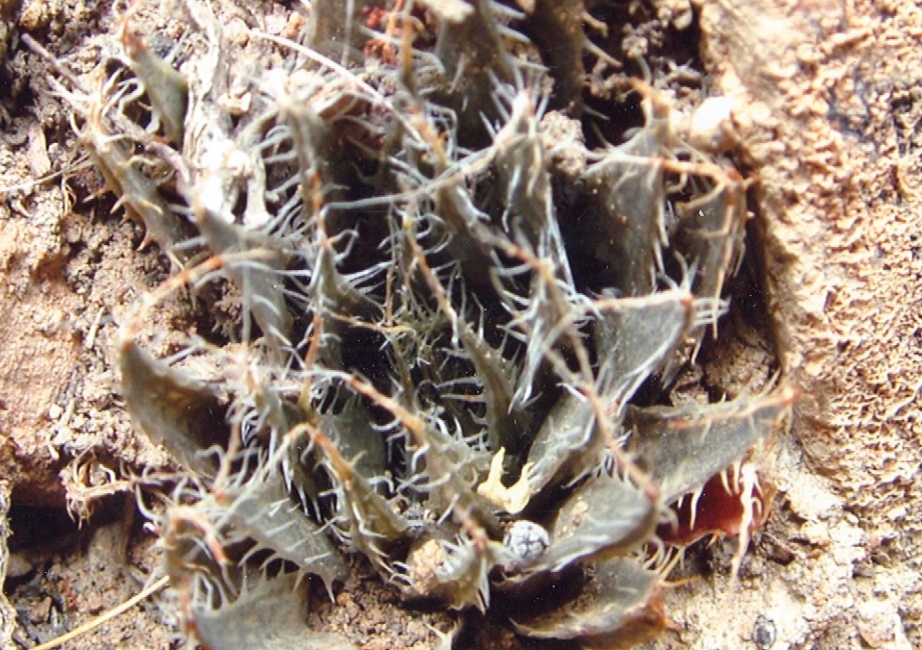
22. MBB7070. Laingsburg. My few illustrations of H. nortieri var pehlemanniae reflect how little is actually known about the real distribution of many of the species. I have no doubts about the continuity of this element with var. globosiflora in the northwest. It is known at the OubergPass near Sutherland in close proximity to H. arachnoidea. There is the unconfirmed Bruyns’ record from the Elandsberg, Etwin Aslander’s at Klipfontein in the Moordenaarskaroo north of Laingsburg, this collection from just north of Laingsburg, records from just north of Matjesfonein and the original location southwest of Laingsburg on the Agter-Witteberg road.
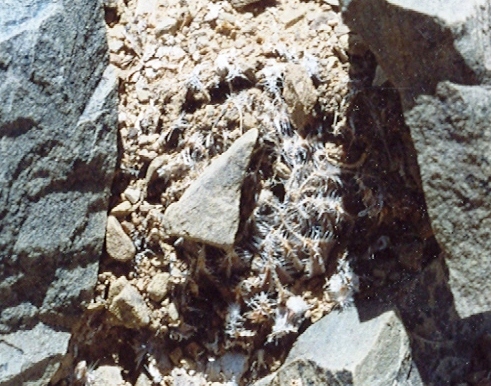
23. MBB7594 Koup. Hayashi must perhaps be commended for recognizing this as different from H. arachnoideai var scabrispina which grows adjacently in very karoid conditions. Both species of course also grow in proximity at Laingsburg. Superficially they could be taken to be the same when in fact the spination and colouration is really different as should be noticable from the illustrations where the origins of the name “albispina” is obvious. Gerhard Marx has written of these populations in Aloe 43:6 (2006) and also illustrates “albispina” from a little further west.
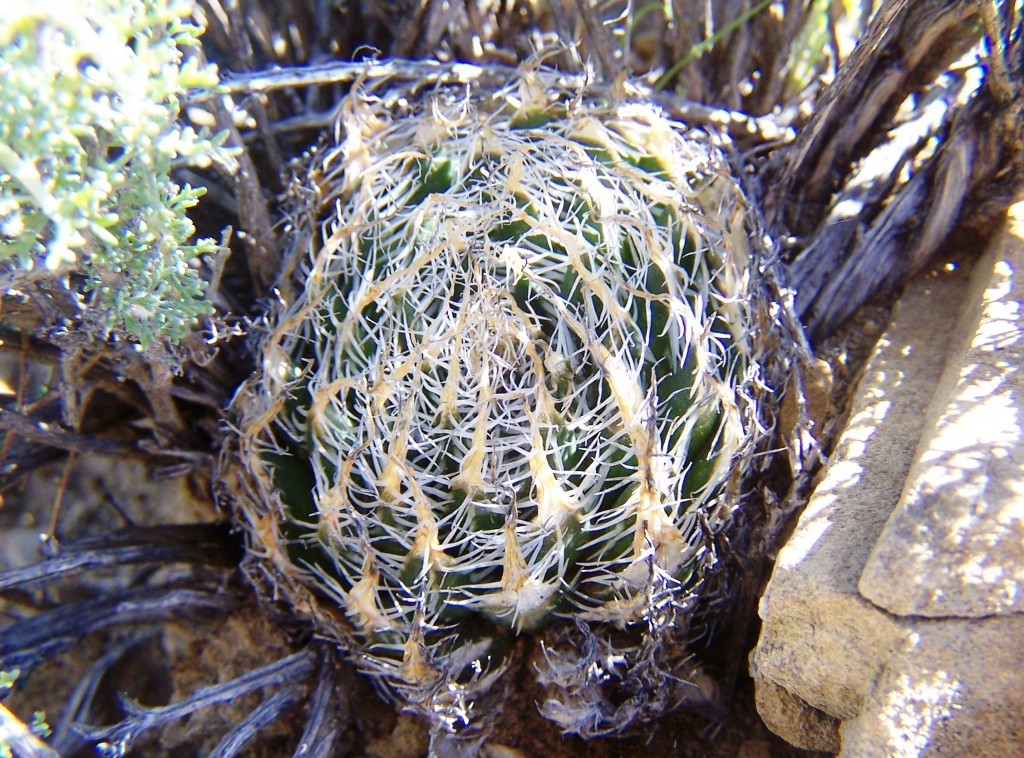
24. MBB7385. Prince Albert. In the company of Sue and Richard Dean I quite fortuitously found this population discovered by V. DeVries at Prince Albert. It is very far east for the species, but my contention is that species have range and variation. They need to be considered as systems not as single specimens which look a bit different from one another in some sort of directly or indirectly descriptive way. These plants do indeed look a little different, but to make it clear, only one plant is illustrated. The landscape is very similar to that at Arizona north of VanRhynsdorp. The plants have to be retracted into the soil and one cannot form a good opinion without destructive sampling.
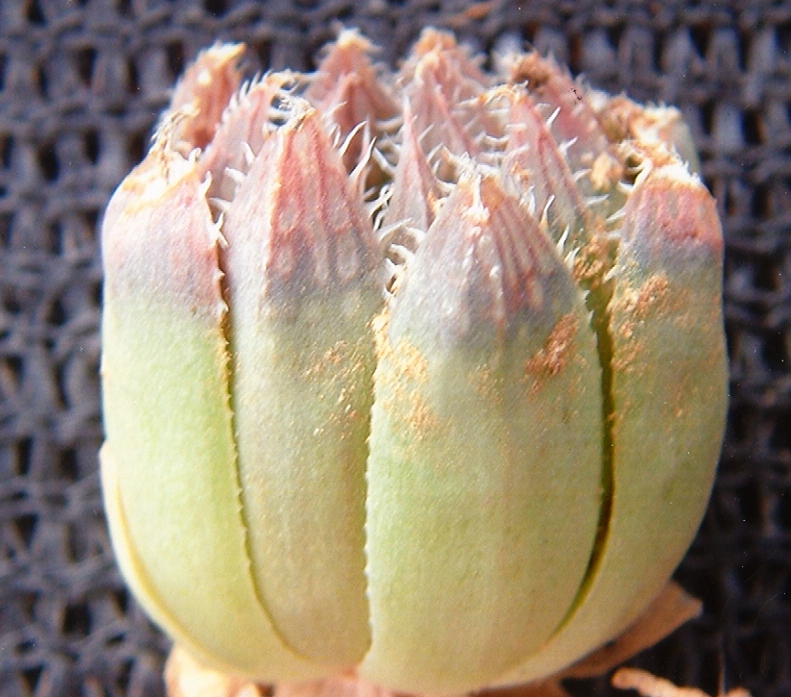
Conclusion
This account is by no means is absolute. I have only illustrated about a half of the known populations and wonder just how many there are which have not been recorded in anyway at all. Of course it can be imagined that in some way more information will better indicate taxonomic entities. My experience persuades me that just the opposite will occur. As my knowledge of the plants in the field has grown, so has my conviction that we are dealing with highly integrated and variable systems. Our taxonomic systems and our understanding of them, especially in the learned ranks where we would expect to find it, are simply inadequate. Our system of classification is based on a belief system that there are simple diagnostic keys which can be derived from simple morphological characters. I think that this is because classification has been built on a slowly growing but still inadequate sampling base. The International Code for Botanical Nomenclature dominates taxonomic thinking which means that nomenclature and the management of names, overrides the knowledge that these names should convey. More attention needs to be paid to explaining different plants as systems that relate to geographic factors and other similar systems.
In terms of the general taxonomic paradigm, it may be reasonable to suppose that the “nortieri” system is composed of discrete taxa. I seriously question that this is so. As the record grows, so does the pattern of increasing variability of otherwise recognizable systems. As regards var pehlemanniae (“albispina”, “devriesii” included) I am quite convinced that even growing these plants in mass from seed cannot produce anything which alters the fact that they belong in this single system which I have discussed in this article. Given the time, the opportunity and the youth, I would try to explore and illustrate these eastern populations in greater depth as well as try and build substantially on the known record. There are huge areas that offer suitable habitats, and similarly huge areas that do not. These areas are largely inaccessible by virtue of the limits of the road network and then the problem of gaining access via land ownership. ♦
